
 Caring for the Earth: a strategy for sustainable living.
by
The successor to the World Conservation Strategy published in 1980, this global strategy for a sustainable society, is intended to restate current thinking about conservation and development in an informative and encouraging way, and is orientated towards practical action. It sets targets fro the changes in our lives that will move us towards a sustainable society and urges a concerted effort to make this ethic a global force in personal, national and international relations.
Caring for the Earth: a strategy for sustainable living.
by
The successor to the World Conservation Strategy published in 1980, this global strategy for a sustainable society, is intended to restate current thinking about conservation and development in an informative and encouraging way, and is orientated towards practical action. It sets targets fro the changes in our lives that will move us towards a sustainable society and urges a concerted effort to make this ethic a global force in personal, national and international relations.
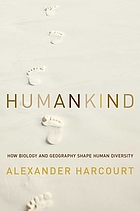 Humankind : how biology and geography shape human diversity
by
Where did the human species originate, why are tropical peoples much more diverse than those at polar latitudes, and why can only Japanese peoples digest seaweed? In Humankind, U. C. Davis professor Alexander Harcourt answers these questions and more, as he explains how the expansion of the human species around the globe and our interaction with our environment explains much about why humans differ from one region of the world to another, not only biologically, but culturally. What effects have other species had on the distribution of humans around the world, and we, in turn, on their distribution? And how have human populations affected eachother's geography, even existence? For the first time in a single book, Alexander Harcourt brings these topics together to help us understand why we are, what we are, where we are. It turns out that when one looks at humanity's expansion around the world, and in the biological explanations for our geographic diversity, we humans are often just another primate, just another species. Humanity's distribution around the world and the type of organism we are today has been shaped by the same biogeographical forces that shape other species.
Humankind : how biology and geography shape human diversity
by
Where did the human species originate, why are tropical peoples much more diverse than those at polar latitudes, and why can only Japanese peoples digest seaweed? In Humankind, U. C. Davis professor Alexander Harcourt answers these questions and more, as he explains how the expansion of the human species around the globe and our interaction with our environment explains much about why humans differ from one region of the world to another, not only biologically, but culturally. What effects have other species had on the distribution of humans around the world, and we, in turn, on their distribution? And how have human populations affected eachother's geography, even existence? For the first time in a single book, Alexander Harcourt brings these topics together to help us understand why we are, what we are, where we are. It turns out that when one looks at humanity's expansion around the world, and in the biological explanations for our geographic diversity, we humans are often just another primate, just another species. Humanity's distribution around the world and the type of organism we are today has been shaped by the same biogeographical forces that shape other species.
 Ėkologii︠a︡ cheloveka s osnovami demografii
by
Ėkologii︠a︡ cheloveka s osnovami demografii
by
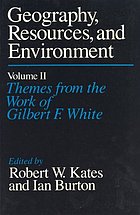 Geography, Resources and Environment, Volume 1
by
Gilbert F. White is the preeminent geographer of natural resources, hazards, and the human environment. During fifty years of professional work as civil servant, scientist, and educator, he authored numerous books and papers. This volume is the first collection of White's work, spanning his interests and career from 1934 to 1984. Individual introductions by the editors place each selection in historical perspective and assay its significance. With the companion volume, Theme from the Work of Gilbert F. White, White's writings, and the work that he inspired, are now readily accessible to all who share his concern for the stewardship of the earth.
Geography, Resources and Environment, Volume 1
by
Gilbert F. White is the preeminent geographer of natural resources, hazards, and the human environment. During fifty years of professional work as civil servant, scientist, and educator, he authored numerous books and papers. This volume is the first collection of White's work, spanning his interests and career from 1934 to 1984. Individual introductions by the editors place each selection in historical perspective and assay its significance. With the companion volume, Theme from the Work of Gilbert F. White, White's writings, and the work that he inspired, are now readily accessible to all who share his concern for the stewardship of the earth.
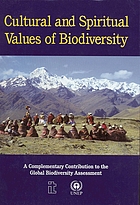 Cultural and Spiritual Values of Biodiversity
by
Weaving together philosophical, historical, legal, scientific and personal viewpoints, this book gives a rich sample of the vast web which makes up our cultural, spiritual and social diversity. The volume highlights the central importance of cultural and spiritual values in the appreciation and preservation of all life and argues that these values give us a true reflection of worth. It demonstrates how many cultures see Nature as an extension of society, and how sensitive stewardship is an integral part of existence. The book covers: language and how cognition and speech encode indigenous knowledge systems are critical for preservation of diversity; the complex issue of indigenous people and the problems of preserving their relationships both with and within their societies; voices of the world - expressions of concern and disquiet over the declining world diversity; holistic health practices where environment and diet are integrated into indigenous medical health systems; the importance of developing effective intellectual property rights and territorial and land rights to enhance and maintain local control. This book arose out of the Global Biodiversity Assessment (GBA), a massive review of current knowledge in the broad field of biological diversity, commissioned by United Nations Environmental Programme (UNEP)
Cultural and Spiritual Values of Biodiversity
by
Weaving together philosophical, historical, legal, scientific and personal viewpoints, this book gives a rich sample of the vast web which makes up our cultural, spiritual and social diversity. The volume highlights the central importance of cultural and spiritual values in the appreciation and preservation of all life and argues that these values give us a true reflection of worth. It demonstrates how many cultures see Nature as an extension of society, and how sensitive stewardship is an integral part of existence. The book covers: language and how cognition and speech encode indigenous knowledge systems are critical for preservation of diversity; the complex issue of indigenous people and the problems of preserving their relationships both with and within their societies; voices of the world - expressions of concern and disquiet over the declining world diversity; holistic health practices where environment and diet are integrated into indigenous medical health systems; the importance of developing effective intellectual property rights and territorial and land rights to enhance and maintain local control. This book arose out of the Global Biodiversity Assessment (GBA), a massive review of current knowledge in the broad field of biological diversity, commissioned by United Nations Environmental Programme (UNEP)
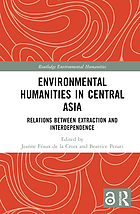 Environmental humanities in Central Asia : relations between extraction and interdependence
by
Environmental humanities in Central Asia : relations between extraction and interdependence
by
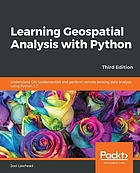 Learning Geospatial Analysis with Python : understand GIS processing tasks and perform remote sensing data analysis using Python 3.7
by
Learn the core concepts of geospatial data analysis for building actionable and insightful GIS applications Key Features Create GIS solutions using the new features introduced in Python 3.7 Explore a range of GIS tools and libraries such as PostGIS, QGIS, and PROJ Learn to automate geospatial analysis workflows using Python and Jupyter Book Description Geospatial analysis is used in almost every domain you can think of, including defense, farming, and even medicine. With this systematic guide, you'll get started with geographic information system (GIS) and remote sensing analysis using the latest features in Python. This book will take you through GIS techniques, geodatabases, geospatial raster data, and much more using the latest built-in tools and libraries in Python 3.7. You'll learn everything you need to know about using software packages or APIs and generic algorithms that can be used for different situations. Furthermore, you'll learn how to apply simple Python GIS geospatial processes to a variety of problems, and work with remote sensing data. By the end of the book, you'll be able to build a generic corporate system, which can be implemented in any organization to manage customer support requests and field support personnel. What you will learn Automate geospatial analysis workflows using Python Code the simplest possible GIS in just 60 lines of Python Create thematic maps with Python tools such as PyShp, OGR, and the Python Imaging Library Understand the different formats that geospatial data comes in Produce elevation contours using Python tools Create flood inundation models Apply geospatial analysis to real-time data tracking and storm chasing Who this book is for This book is for Python developers, researchers, or analysts who want to perform geospatial modeling and GIS analysis with Python. Basic knowledge of digital mapping and analysis using Python or other scripting languages will be helpful.
Learning Geospatial Analysis with Python : understand GIS processing tasks and perform remote sensing data analysis using Python 3.7
by
Learn the core concepts of geospatial data analysis for building actionable and insightful GIS applications Key Features Create GIS solutions using the new features introduced in Python 3.7 Explore a range of GIS tools and libraries such as PostGIS, QGIS, and PROJ Learn to automate geospatial analysis workflows using Python and Jupyter Book Description Geospatial analysis is used in almost every domain you can think of, including defense, farming, and even medicine. With this systematic guide, you'll get started with geographic information system (GIS) and remote sensing analysis using the latest features in Python. This book will take you through GIS techniques, geodatabases, geospatial raster data, and much more using the latest built-in tools and libraries in Python 3.7. You'll learn everything you need to know about using software packages or APIs and generic algorithms that can be used for different situations. Furthermore, you'll learn how to apply simple Python GIS geospatial processes to a variety of problems, and work with remote sensing data. By the end of the book, you'll be able to build a generic corporate system, which can be implemented in any organization to manage customer support requests and field support personnel. What you will learn Automate geospatial analysis workflows using Python Code the simplest possible GIS in just 60 lines of Python Create thematic maps with Python tools such as PyShp, OGR, and the Python Imaging Library Understand the different formats that geospatial data comes in Produce elevation contours using Python tools Create flood inundation models Apply geospatial analysis to real-time data tracking and storm chasing Who this book is for This book is for Python developers, researchers, or analysts who want to perform geospatial modeling and GIS analysis with Python. Basic knowledge of digital mapping and analysis using Python or other scripting languages will be helpful.
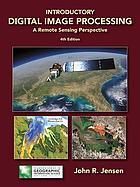 Introductory Digital Image Processing : a remote sensing perspective
by
For junior/graduate-level courses in Remote Sensing in Geography, Geology, Forestry, and Biology. Introductory Digital Image Processing: A Remote Sensing Perspective focuses on digital image processing of aircraft- and satellite-derived, remotely sensed data for Earth resource management applications. Extensively illustrated, it explains how to extract biophysical information from remote sensor data for almost all multidisciplinary land-based environmental projects. Part of the Pearson Series Geographic Information Science. Now in full color, the Fourth Edition provides up-to-date information on analytical methods used to analyze digital remote sensing data. Each chapter contains a substantive reference list that can be used by students and scientists as a starting place for their digital image processing project or research. A new appendix provides sources of imagery and other geospatial information.
Introductory Digital Image Processing : a remote sensing perspective
by
For junior/graduate-level courses in Remote Sensing in Geography, Geology, Forestry, and Biology. Introductory Digital Image Processing: A Remote Sensing Perspective focuses on digital image processing of aircraft- and satellite-derived, remotely sensed data for Earth resource management applications. Extensively illustrated, it explains how to extract biophysical information from remote sensor data for almost all multidisciplinary land-based environmental projects. Part of the Pearson Series Geographic Information Science. Now in full color, the Fourth Edition provides up-to-date information on analytical methods used to analyze digital remote sensing data. Each chapter contains a substantive reference list that can be used by students and scientists as a starting place for their digital image processing project or research. A new appendix provides sources of imagery and other geospatial information.
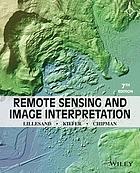 Remote Sensing and Image Interpretation
by
Remote Sensing and Image Interpretation, 7th Edition is designed to be primarily used in two ways: as a textbook in the introductory courses in remote sensing and image interpretation, and as a reference for the burgeoning number of practitioners who use geospatial information and analysis in their work. Because of the wide range of academic and professional settings in which this book might be used, we have made the discussion "discipline neutral." In short, anyone involved in geospatial data acquisition and analysis should find this book to be a valuable text and reference.
Remote Sensing and Image Interpretation
by
Remote Sensing and Image Interpretation, 7th Edition is designed to be primarily used in two ways: as a textbook in the introductory courses in remote sensing and image interpretation, and as a reference for the burgeoning number of practitioners who use geospatial information and analysis in their work. Because of the wide range of academic and professional settings in which this book might be used, we have made the discussion "discipline neutral." In short, anyone involved in geospatial data acquisition and analysis should find this book to be a valuable text and reference.
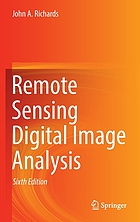 Remote Sensing Digital Image Analysis
by
Remote Sensing Digital Image Analysis provides a comprehensive treatment of the methods used for the processing and interpretation of remotely sensed image data. Over the past decade there have been continuing and significant developments in the algorithms used for the analysis of remote sensing imagery, even though many of the fundamentals have substantially remained the same. As with its predecessors this new edition again presents material that has retained value but also includes newer techniques, covered from the perspective of operational remote sensing. The book is designed as a teaching text for the senior undergraduate and postgraduate student, and as a fundamental treatment for those engaged in research using digital image analysis in remote sensing. The presentation level is for the mathematical non-specialist. Since the very great number of operational users of remote sensing come from the earth sciences communities, the text is pitched at a level commensurate with their background. The chapters progress logically through means for the acquisition of remote sensing images, techniques by which they can be corrected, and methods for their interpretation. The prime focus is on applications of the methods, so that worked examples are included and a set of problems conclude each chapter.
Remote Sensing Digital Image Analysis
by
Remote Sensing Digital Image Analysis provides a comprehensive treatment of the methods used for the processing and interpretation of remotely sensed image data. Over the past decade there have been continuing and significant developments in the algorithms used for the analysis of remote sensing imagery, even though many of the fundamentals have substantially remained the same. As with its predecessors this new edition again presents material that has retained value but also includes newer techniques, covered from the perspective of operational remote sensing. The book is designed as a teaching text for the senior undergraduate and postgraduate student, and as a fundamental treatment for those engaged in research using digital image analysis in remote sensing. The presentation level is for the mathematical non-specialist. Since the very great number of operational users of remote sensing come from the earth sciences communities, the text is pitched at a level commensurate with their background. The chapters progress logically through means for the acquisition of remote sensing images, techniques by which they can be corrected, and methods for their interpretation. The prime focus is on applications of the methods, so that worked examples are included and a set of problems conclude each chapter.
 Remote Sensing: principles, interpretation, and applications
by
Remote sensing has undergone profound changes over the past two decades as GPS, GIS, and sensor advances have significantly expanded the user community and availability of images. New tools, such as automation, cloud-based services, drones, and artificial intelligence, continue to expand and enhance the discipline. Along with comprehensive coverage and clarity, Sabins and Ellis establish a solid foundation for the insightful use of remote sensing with an emphasis on principles and a focus on sensor technology and image acquisition.The Fourth Edition presents a valuable discussion of the growing and permeating use of technologies such as drones and manned aircraft imaging, DEMs, and lidar. The authors explain the scientific and societal impacts of remote sensing, review digital image processing and GIS, provide case histories from areas around the globe, and describe practical applications of remote sensing to the environment, renewable and nonrenewable resources, land use/land cover, natural hazards, and climate change.
Remote Sensing: principles, interpretation, and applications
by
Remote sensing has undergone profound changes over the past two decades as GPS, GIS, and sensor advances have significantly expanded the user community and availability of images. New tools, such as automation, cloud-based services, drones, and artificial intelligence, continue to expand and enhance the discipline. Along with comprehensive coverage and clarity, Sabins and Ellis establish a solid foundation for the insightful use of remote sensing with an emphasis on principles and a focus on sensor technology and image acquisition.The Fourth Edition presents a valuable discussion of the growing and permeating use of technologies such as drones and manned aircraft imaging, DEMs, and lidar. The authors explain the scientific and societal impacts of remote sensing, review digital image processing and GIS, provide case histories from areas around the globe, and describe practical applications of remote sensing to the environment, renewable and nonrenewable resources, land use/land cover, natural hazards, and climate change.
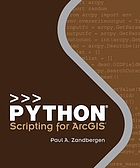 Python Scripting for ArcGIS
by
This book is a guide for experienced users of ArcGIS® Desktop to get started with Python scripting without needing previous programming experience. Experience with other scripting or programming languages (Perl, VBA, VB script, Java, C++) is helpful but not required. Readers are expected to have good general ArcGIS skills and a basic understanding of geoprocessing procedures. There are 14 chapters with corresponding exercises on an accompanying DVD.
Python Scripting for ArcGIS
by
This book is a guide for experienced users of ArcGIS® Desktop to get started with Python scripting without needing previous programming experience. Experience with other scripting or programming languages (Perl, VBA, VB script, Java, C++) is helpful but not required. Readers are expected to have good general ArcGIS skills and a basic understanding of geoprocessing procedures. There are 14 chapters with corresponding exercises on an accompanying DVD.
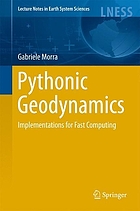 Boundary Integral Methods in Geodynamics: implementations for fast computing
by
This book addresses students and young researchers who want to learn to use numerical modeling to solve problems in geodynamics. Intended as an easy-to-use and self-learning guide, readers only need a basic background in calculus to approach most of the material. The book difficulty increases very gradually, through four distinct parts. The first is an introduction to the Python techniques necessary to visualize and run vectorial calculations. The second is an overview with several examples on classical Mechanics with examples taken from standard introductory physics books. The third part is a detailed description of how to write Lagrangian, Eulerian and Particles in Cell codes for solving linear and non-linear continuum mechanics problems. Finally the last one address advanced techniques like tree-codes, Boundary Elements, and illustrates several applications to Geodynamics. The entire book is organized around numerous examples in Python, aiming at encouraging the reader to le arn by experimenting and experiencing, not by theory.
Boundary Integral Methods in Geodynamics: implementations for fast computing
by
This book addresses students and young researchers who want to learn to use numerical modeling to solve problems in geodynamics. Intended as an easy-to-use and self-learning guide, readers only need a basic background in calculus to approach most of the material. The book difficulty increases very gradually, through four distinct parts. The first is an introduction to the Python techniques necessary to visualize and run vectorial calculations. The second is an overview with several examples on classical Mechanics with examples taken from standard introductory physics books. The third part is a detailed description of how to write Lagrangian, Eulerian and Particles in Cell codes for solving linear and non-linear continuum mechanics problems. Finally the last one address advanced techniques like tree-codes, Boundary Elements, and illustrates several applications to Geodynamics. The entire book is organized around numerous examples in Python, aiming at encouraging the reader to le arn by experimenting and experiencing, not by theory.
 Handbook on Managing Nature-Based Tourism Destinations amid Climate Change
by
This Handbook offers a comprehensive guide to sustainable practices in nature-based tourism (NBT), focusing on the critical need to combat climate-related challenges. Multidisciplinary in scope, it highlights innovative governance models, community engagement, and transdisciplinary collaboration for sustainable NBT management, as well as adaptive strategies for NBT to thrive in changing climates. Bringing together an array of experts from the Global South and North, the Handbook underscores the importance of integrating climate considerations into tourism strategies for resilience and sustainability. Contributing authors provide actionable information and strategies for destination managers, focusing on reducing emissions, fostering ecosystem regeneration, and ensuring financial sustainability. The book is a key resource for navigating climate challenges in tourism and advocates for informed, strategic actions going forward. With its wealth of international case studies and focus on practical strategies for managing nature-based tourism destinations, this book is an essential read for students and researchers in tourism studies, as well as tourism practitioners and policymakers interested in the sustainable development of tourism.
Handbook on Managing Nature-Based Tourism Destinations amid Climate Change
by
This Handbook offers a comprehensive guide to sustainable practices in nature-based tourism (NBT), focusing on the critical need to combat climate-related challenges. Multidisciplinary in scope, it highlights innovative governance models, community engagement, and transdisciplinary collaboration for sustainable NBT management, as well as adaptive strategies for NBT to thrive in changing climates. Bringing together an array of experts from the Global South and North, the Handbook underscores the importance of integrating climate considerations into tourism strategies for resilience and sustainability. Contributing authors provide actionable information and strategies for destination managers, focusing on reducing emissions, fostering ecosystem regeneration, and ensuring financial sustainability. The book is a key resource for navigating climate challenges in tourism and advocates for informed, strategic actions going forward. With its wealth of international case studies and focus on practical strategies for managing nature-based tourism destinations, this book is an essential read for students and researchers in tourism studies, as well as tourism practitioners and policymakers interested in the sustainable development of tourism.
 Sport tourism, events and sustainable development goals : an emerging foundation
by
"Discover the transformative potential of sport tourism and events in achieving Sustainable Development Goals with "Sport Tourism, Events and SDGs: An Emerging Foundation." This groundbreaking collection explores the profound impact of these sectors in shaping a more sustainable future. Readers of this book will gain a deep understanding of how sport tourism and events can serve as powerful catalysts for achieving Sustainable Development Goals. Through a rich array of case studies, innovative strategies, and expert insights, the book provides a roadmap for harnessing the full potential of these sectors to promote social, economic, and environmental sustainability. Benefit from a multidisciplinary approach that integrates theory and practice, offering actionable solutions for scholars, practitioners, and policymakers alike. This book is intended for scholars, students, professionals, and policymakers interested in the intersection of sport tourism, events, and sustainable development. It serves as an invaluable resource for anyone seeking to leverage the dynamic synergy between these fields to drive positive change and achieve SDGs on a global scale"
Sport tourism, events and sustainable development goals : an emerging foundation
by
"Discover the transformative potential of sport tourism and events in achieving Sustainable Development Goals with "Sport Tourism, Events and SDGs: An Emerging Foundation." This groundbreaking collection explores the profound impact of these sectors in shaping a more sustainable future. Readers of this book will gain a deep understanding of how sport tourism and events can serve as powerful catalysts for achieving Sustainable Development Goals. Through a rich array of case studies, innovative strategies, and expert insights, the book provides a roadmap for harnessing the full potential of these sectors to promote social, economic, and environmental sustainability. Benefit from a multidisciplinary approach that integrates theory and practice, offering actionable solutions for scholars, practitioners, and policymakers alike. This book is intended for scholars, students, professionals, and policymakers interested in the intersection of sport tourism, events, and sustainable development. It serves as an invaluable resource for anyone seeking to leverage the dynamic synergy between these fields to drive positive change and achieve SDGs on a global scale"
 Картография христианского средневековья VIII-XIII вв. : тексты, перевод, комментарий
by
Картография христианского средневековья VIII-XIII вв. : тексты, перевод, комментарий
by
 Развитие картографии и вопросы использования старых карт
by
Развитие картографии и вопросы использования старых карт
by
 Мир географии : география и географы : природная среда
by
Мир географии : география и географы : природная среда
by
 Физическая география Тянь-Шаня; природно-географические особенности, основные вопросы ландшафтного картирования и комплексного физико-географического районирования
by
Физическая география Тянь-Шаня; природно-географические особенности, основные вопросы ландшафтного картирования и комплексного физико-географического районирования
by
 Методы геоморфологических исследований: Методология
by
Методы геоморфологических исследований: Методология
by
 Key Concepts in Geomorphology
by
Key Concepts in Geomorphology was developed with direct input from the community of geomorphology educators.
Key Concepts in Geomorphology
by
Key Concepts in Geomorphology was developed with direct input from the community of geomorphology educators.
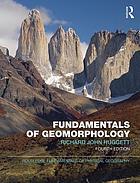 Fundamentals of Geomorphology
by
The new fourth edition of Fundamentals of Geomorphology continues to provide a comprehensive introduction to the subject by discussing the latest developments in the field, as well as covering the basics of Earth surface forms and processes. The revised edition has an improved logically cohesive structure, added recent material on Quaternary environments and landscapes, landscape evolution and tectonics, as well as updated information in fast-changing areas such as the application of dating techniques, digital terrain modelling, historical contingency, preglacial landforms, neocatastrophism, and biogeomorphology. The book begins with a consideration of the nature of geomorphology, process and form, history, and geomorphic systems, and moves on to discuss: Endogenic processes: structural landforms associated with plate tectonics and those associated with volcanoes, impact craters, and folds, faults, and joints. Exogenic processes: landforms resulting from, or influenced by, the exogenic agencies of weathering, running water, flowing ice and meltwater, ground ice and frost, the wind, and the sea; landforms developed on limestone; and long-term geomorphology, a discussion of ancient landforms, including palaeosurfaces, stagnant landscape features, and evolutionary aspects of landscape change. Featuring over 400 illustrations, diagrams, and tables, Fundamentals of Geomorphology provides a stimulating and innovative perspective on the key topics and debates within the field of geomorphology. Written in an accessible and lively manner, and providing guides to further reading, chapter summaries, and an extensive glossary of key terms, this is an indispensable undergraduate level textbook for students of physical geography.
Fundamentals of Geomorphology
by
The new fourth edition of Fundamentals of Geomorphology continues to provide a comprehensive introduction to the subject by discussing the latest developments in the field, as well as covering the basics of Earth surface forms and processes. The revised edition has an improved logically cohesive structure, added recent material on Quaternary environments and landscapes, landscape evolution and tectonics, as well as updated information in fast-changing areas such as the application of dating techniques, digital terrain modelling, historical contingency, preglacial landforms, neocatastrophism, and biogeomorphology. The book begins with a consideration of the nature of geomorphology, process and form, history, and geomorphic systems, and moves on to discuss: Endogenic processes: structural landforms associated with plate tectonics and those associated with volcanoes, impact craters, and folds, faults, and joints. Exogenic processes: landforms resulting from, or influenced by, the exogenic agencies of weathering, running water, flowing ice and meltwater, ground ice and frost, the wind, and the sea; landforms developed on limestone; and long-term geomorphology, a discussion of ancient landforms, including palaeosurfaces, stagnant landscape features, and evolutionary aspects of landscape change. Featuring over 400 illustrations, diagrams, and tables, Fundamentals of Geomorphology provides a stimulating and innovative perspective on the key topics and debates within the field of geomorphology. Written in an accessible and lively manner, and providing guides to further reading, chapter summaries, and an extensive glossary of key terms, this is an indispensable undergraduate level textbook for students of physical geography.
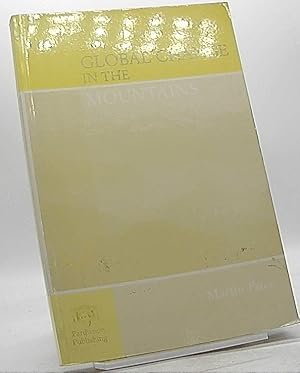 Global Change in the Mountains: proceedings of the European Conference on Environmental and Societal Change in Mountain Regions : Oxford, UK, 18-20 December 1997
by
This volume contains data and analyses of the role and significance of global change for mountain regions and peoples. In nine major sections containing 78 extended abstracts, the book documents scientific findings concerning the role of mountains in the Earth system, especially in regard to the climate, functioning of ecosystems, and transport of materials and water, as well as the role of mountains in providing homes and jobs. The book's nine main sections cover the mountain regions of Europe, Asia, Latin America, and Africa. This volume is a product of a project of the European Union's (EU) European Network for Research in Global Change, known as ENRICH, and a key contribution to understanding the integration of earth system and human system perspectives that underpin the philosophy of the Fifth EU Research and Technological Development Framework Programme. Includes bibliographic references, a list of acronyms, and index. This volume is the Proceedings of the European Conference on Environmental and Societal Change in Mountain Regions held in Oxford, UK, 18-20 December 1997.
Global Change in the Mountains: proceedings of the European Conference on Environmental and Societal Change in Mountain Regions : Oxford, UK, 18-20 December 1997
by
This volume contains data and analyses of the role and significance of global change for mountain regions and peoples. In nine major sections containing 78 extended abstracts, the book documents scientific findings concerning the role of mountains in the Earth system, especially in regard to the climate, functioning of ecosystems, and transport of materials and water, as well as the role of mountains in providing homes and jobs. The book's nine main sections cover the mountain regions of Europe, Asia, Latin America, and Africa. This volume is a product of a project of the European Union's (EU) European Network for Research in Global Change, known as ENRICH, and a key contribution to understanding the integration of earth system and human system perspectives that underpin the philosophy of the Fifth EU Research and Technological Development Framework Programme. Includes bibliographic references, a list of acronyms, and index. This volume is the Proceedings of the European Conference on Environmental and Societal Change in Mountain Regions held in Oxford, UK, 18-20 December 1997.
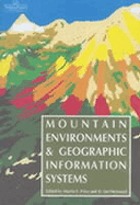 Mountain Environments and Geographic Information Systems
by
Drawing together experiences from five continents, this title evaluates and discusses the use of GIS for research and management in mountain environments. Contributions come from both research scientists and private consultants.; The book includes papers covering: GIS in the mountains of the Commonwealth of Independant States; land hazard analysis; research and mangement in national parks and adjacent areas USA, Canada, Australia; impacts of climate change on mountain vegetation; linkage of knowledge-based systems to GIS; terrain modelling DTMs.; These papers are grouped together into sections: regional resource inventory and planning; natural hazard assessment; conservation and protected area management; simulation and prediction: vegetation and climate change.
Mountain Environments and Geographic Information Systems
by
Drawing together experiences from five continents, this title evaluates and discusses the use of GIS for research and management in mountain environments. Contributions come from both research scientists and private consultants.; The book includes papers covering: GIS in the mountains of the Commonwealth of Independant States; land hazard analysis; research and mangement in national parks and adjacent areas USA, Canada, Australia; impacts of climate change on mountain vegetation; linkage of knowledge-based systems to GIS; terrain modelling DTMs.; These papers are grouped together into sections: regional resource inventory and planning; natural hazard assessment; conservation and protected area management; simulation and prediction: vegetation and climate change.
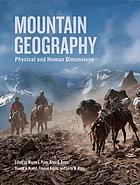 Mountain Geography : physical and human dimensions
by
Mountains cover a quarter of the Earth’s land surface and a quarter of the global population lives in or adjacent to these areas. The global importance of mountains is recognized particularly because they provide critical resources, such as water, food and wood; contain high levels of biological and cultural diversity; and are often places for tourism and recreation and/or of sacred significance. This major revision of Larry Price’s book Mountains and Man (1981) is both timely and highly appropriate. The past three decades have been a period of remarkable progress in our understanding of mountains from an academic point of view. Of even greater importance is that society at large now realizes that mountains and the people who reside in them are not isolated from the mainstream of world affairs, but are vital if we are to achieve an environmentally sustainable future. Mountain Geography is a comprehensive resource that gives readers an in-depth understanding of the geographical processes occurring in the world’s mountains and the overall impact of these regions on culture and society as a whole. The volume begins with an introduction to how mountains are defined, followed by a comprehensive treatment of their physical geography: origins, climatology, snow and ice, landforms and geomorphic processes, soils, vegetation, and wildlife. The concluding chapters provide an introduction to the human geography of mountains: attitudes toward mountains, people living in mountain regions and their livelihoods and interactions within dynamic environments, the diverse types of mountain agriculture, and the challenges of sustainable mountain development. nbsp;
Mountain Geography : physical and human dimensions
by
Mountains cover a quarter of the Earth’s land surface and a quarter of the global population lives in or adjacent to these areas. The global importance of mountains is recognized particularly because they provide critical resources, such as water, food and wood; contain high levels of biological and cultural diversity; and are often places for tourism and recreation and/or of sacred significance. This major revision of Larry Price’s book Mountains and Man (1981) is both timely and highly appropriate. The past three decades have been a period of remarkable progress in our understanding of mountains from an academic point of view. Of even greater importance is that society at large now realizes that mountains and the people who reside in them are not isolated from the mainstream of world affairs, but are vital if we are to achieve an environmentally sustainable future. Mountain Geography is a comprehensive resource that gives readers an in-depth understanding of the geographical processes occurring in the world’s mountains and the overall impact of these regions on culture and society as a whole. The volume begins with an introduction to how mountains are defined, followed by a comprehensive treatment of their physical geography: origins, climatology, snow and ice, landforms and geomorphic processes, soils, vegetation, and wildlife. The concluding chapters provide an introduction to the human geography of mountains: attitudes toward mountains, people living in mountain regions and their livelihoods and interactions within dynamic environments, the diverse types of mountain agriculture, and the challenges of sustainable mountain development. nbsp;
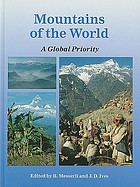 Mountains of the World
by
Mountains of the World focuses on the human dimension of mountain development and on the science of mountain ecosystems, resources, and development. It begins by introducing the mountain cultures and peoples, the sacredness of mountains, and the economics and politics of sustainable development in mountain areas. Then the book deals with mountain water and energy resources, mining, biodiversity, conservation, tourism, forestry, farming, watershed management and erosion control, risk and disasters in mountain lands, and climate change. Finally, it offers much-needed agendas for scientific research and sustainable development in the world's mountains.
Mountains of the World
by
Mountains of the World focuses on the human dimension of mountain development and on the science of mountain ecosystems, resources, and development. It begins by introducing the mountain cultures and peoples, the sacredness of mountains, and the economics and politics of sustainable development in mountain areas. Then the book deals with mountain water and energy resources, mining, biodiversity, conservation, tourism, forestry, farming, watershed management and erosion control, risk and disasters in mountain lands, and climate change. Finally, it offers much-needed agendas for scientific research and sustainable development in the world's mountains.
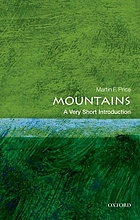 Mountains: a Very Short Introduction
by
Mountains cover a quarter of the Earth's land surface and are home to about 12 percent of the global population. They are the sources of all the world's major rivers, affect regional weather patterns, provide centres of biological and cultural diversity, hold deposits of minerals, and provide both active and contemplative recreation. Yet mountains are also significantly affected by climate change; as melting and retreating glaciers show. Given the manifold goods and services which mountains provide to the world, such changes are of global importance.In this Very Short Introduction, Martin Price outlines why mountains matter at the global level, and addresses the existing and likely impacts of climate change on mountain, hydrological and ecological systems. Considering the risks associated with the increasing frequency of extreme events and"natural hazards" caused by climate change, he discusses the implications for both mountain societies and wider populations, and concludes by emphasizing the need for greater cooperation in order to adapt to climate change in our increasingly globalized world.ABOUT THE SERIES: The Very Short Introductions series from Oxford University Press contains hundreds of titles in almost every subject area. These pocket-sized books are the perfect way to get ahead in a new subject quickly. Our expert authors combine facts, analysis, perspective, new ideas, andenthusiasm to make interesting and challenging topics highly readable.
Mountains: a Very Short Introduction
by
Mountains cover a quarter of the Earth's land surface and are home to about 12 percent of the global population. They are the sources of all the world's major rivers, affect regional weather patterns, provide centres of biological and cultural diversity, hold deposits of minerals, and provide both active and contemplative recreation. Yet mountains are also significantly affected by climate change; as melting and retreating glaciers show. Given the manifold goods and services which mountains provide to the world, such changes are of global importance.In this Very Short Introduction, Martin Price outlines why mountains matter at the global level, and addresses the existing and likely impacts of climate change on mountain, hydrological and ecological systems. Considering the risks associated with the increasing frequency of extreme events and"natural hazards" caused by climate change, he discusses the implications for both mountain societies and wider populations, and concludes by emphasizing the need for greater cooperation in order to adapt to climate change in our increasingly globalized world.ABOUT THE SERIES: The Very Short Introductions series from Oxford University Press contains hundreds of titles in almost every subject area. These pocket-sized books are the perfect way to get ahead in a new subject quickly. Our expert authors combine facts, analysis, perspective, new ideas, andenthusiasm to make interesting and challenging topics highly readable.
 The Mountains of Central and Eastern Europe
by
This report surveys the current issues affecting the conservation of biological and landscape diversity. It provides a basis for future research, policy development, and decisions relating to external funding in a time of rapid and unpredictable change.
The Mountains of Central and Eastern Europe
by
This report surveys the current issues affecting the conservation of biological and landscape diversity. It provides a basis for future research, policy development, and decisions relating to external funding in a time of rapid and unpredictable change.
 Physical Hydrology
by
"For twenty years, Lawrence Dingman's well-written, comprehensive Physical Hydrology has set standards for balancing theoretical depth and breadth of applications. Rich in substance and written to meet the needs of future researchers and experts in the field, Dingman treats hydrology as a distinct geoscience that is continually expanding to deal with large-scale changes in land use and climate. The third edition provides a solid conceptual basis of the subject and introduces the quantitative relations involved in answering scientific and management questions about water resources. The text is organized around three principal themes: the basic concepts underlying the science of hydrology; the exchange of water and energy between the atmosphere and the earth's surface; and the land phase of the hydrologic cycle. Dingman supplies the basic physical principles necessary for developing a sound, instructive sense of the way in which water moves on and through the land; in addition, he describes the assumptions behind each analytical approach and identifies the limitations of each. Outstanding features include: An examination of documented trends in global change of climatic and hydrologic quantities; statistical and measurement methods for the development and management of hydrologic simulation modeling; additional exercises that emphasize analyses using data sets obtained via the Internet; excel spreadsheets on the accompanying CD"--Back cover.
Physical Hydrology
by
"For twenty years, Lawrence Dingman's well-written, comprehensive Physical Hydrology has set standards for balancing theoretical depth and breadth of applications. Rich in substance and written to meet the needs of future researchers and experts in the field, Dingman treats hydrology as a distinct geoscience that is continually expanding to deal with large-scale changes in land use and climate. The third edition provides a solid conceptual basis of the subject and introduces the quantitative relations involved in answering scientific and management questions about water resources. The text is organized around three principal themes: the basic concepts underlying the science of hydrology; the exchange of water and energy between the atmosphere and the earth's surface; and the land phase of the hydrologic cycle. Dingman supplies the basic physical principles necessary for developing a sound, instructive sense of the way in which water moves on and through the land; in addition, he describes the assumptions behind each analytical approach and identifies the limitations of each. Outstanding features include: An examination of documented trends in global change of climatic and hydrologic quantities; statistical and measurement methods for the development and management of hydrologic simulation modeling; additional exercises that emphasize analyses using data sets obtained via the Internet; excel spreadsheets on the accompanying CD"--Back cover.
 Introduction to Physical Hydrology
by
As hydrology is now approached from environmental and social perspectives--in addition to the more traditional physical geography and civil engineering perspectives--there has never been a more opportune time to develop a sound understanding of the field. Introduction to Physical Hydrology provides students with a solid foundation in the core principles of the subject. Exploring the key rules that govern the flow of water on land, it considers the four major types of water: atmospheric, ground, soil, and surface. The text offers insights into major hydrological processes and shows how the principles of physical hydrology inform our understanding of climate and global hydrology. The book includes a carefully developed and class-tested pedagogical framework: it employs an extensive range of exercises, global examples, and a series of Math Toolboxes to help students engage with and master the material. A Companion Website features resources for students and instructors.
Introduction to Physical Hydrology
by
As hydrology is now approached from environmental and social perspectives--in addition to the more traditional physical geography and civil engineering perspectives--there has never been a more opportune time to develop a sound understanding of the field. Introduction to Physical Hydrology provides students with a solid foundation in the core principles of the subject. Exploring the key rules that govern the flow of water on land, it considers the four major types of water: atmospheric, ground, soil, and surface. The text offers insights into major hydrological processes and shows how the principles of physical hydrology inform our understanding of climate and global hydrology. The book includes a carefully developed and class-tested pedagogical framework: it employs an extensive range of exercises, global examples, and a series of Math Toolboxes to help students engage with and master the material. A Companion Website features resources for students and instructors.
 Вода и жизнь : водные ресурсы, их преобразование и охрана
by
Вода и жизнь : водные ресурсы, их преобразование и охрана
by
 Isotope techniques in the hydrologic cycle; papers
by
Isotope techniques in the hydrologic cycle; papers
by
 Озера Тянь-Шаня и их история : физическая география и палеогеография
by
Озера Тянь-Шаня и их история : физическая география и палеогеография
by
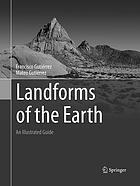 Landforms of the Earth : an illustrated guide
by
This is a highly illustrated book with each landform being described with the following structure: (1) Main characteristics, including geometric, morphometric and sedimentological features. (2) Genetic processes and controlling factors. (3) Different typologies if applicable. (4) Additional comments related to various relevant aspects such us environmental implications or geographical distribution. Image visualization of landforms is essential for learning geomorphology and stimulating the interest in this field-based subject; a picture is worth a thousand words. Consequently, the book constitutes a valuable educational resource for every university student enrolled in courses related with earth surface processes and landforms (e.g. Geomorphology, Physical Geography, Geology, Geohazards, Environmental Sciences.). The book is also attractive to travellers and people keen on nature who want to know about the terminology and origin of the landforms they encounter in their trips. In many cases, the geomorphological features constitute the main asset of first-class protected areas (e.g., UNESCO World Heritage Sites, National Parks).
Landforms of the Earth : an illustrated guide
by
This is a highly illustrated book with each landform being described with the following structure: (1) Main characteristics, including geometric, morphometric and sedimentological features. (2) Genetic processes and controlling factors. (3) Different typologies if applicable. (4) Additional comments related to various relevant aspects such us environmental implications or geographical distribution. Image visualization of landforms is essential for learning geomorphology and stimulating the interest in this field-based subject; a picture is worth a thousand words. Consequently, the book constitutes a valuable educational resource for every university student enrolled in courses related with earth surface processes and landforms (e.g. Geomorphology, Physical Geography, Geology, Geohazards, Environmental Sciences.). The book is also attractive to travellers and people keen on nature who want to know about the terminology and origin of the landforms they encounter in their trips. In many cases, the geomorphological features constitute the main asset of first-class protected areas (e.g., UNESCO World Heritage Sites, National Parks).
 Struktura i dinamika prirody Zemli : izbrannye trudy
by
Struktura i dinamika prirody Zemli : izbrannye trudy
by
 Почвы и формы рельефа : комплексное геоморфолого-почвенное исследование
by
Почвы и формы рельефа : комплексное геоморфолого-почвенное исследование
by
 Elementary Hydrology
by
Students are exposed to hydrology for the first time primarily through this course, and students taking the course have not had an opportunity to be exposed to hydrologic jargon before. And, in most cases this course may be the only course the students may have in hydrology in their undergraduate schooling. Therefore, this hydrology course must be at an elementary level, present basic concepts of hydrology, and develop a flavor for application of hydrology to the solution of a range of environmental problems. It is these considerations that motivated the writing of this book.
Elementary Hydrology
by
Students are exposed to hydrology for the first time primarily through this course, and students taking the course have not had an opportunity to be exposed to hydrologic jargon before. And, in most cases this course may be the only course the students may have in hydrology in their undergraduate schooling. Therefore, this hydrology course must be at an elementary level, present basic concepts of hydrology, and develop a flavor for application of hydrology to the solution of a range of environmental problems. It is these considerations that motivated the writing of this book.
 Glaciers and Glaciation
by
Glaciers and Glaciation is the classic textbook for all students of glaciation. Stimulating and accessible, it has established a reputation as a comprehensive and essential resource. In this new edition, the text, references, and illustrations have been thoroughly updated to give today's reader an up-to-the minute overview of the nature, origin, and behavior of glaciers and the geological and geomorphological evidence for their past history on earth. The first part of the book investigates the processes involved in forming glacier ice, the nature of glacier/climate relationships, the mechanisms of glacier flow, and the interactions of glaciers with other natural systems such as rivers, lakes, and oceans. In the second part, the emphasis moves to landforms and sediment, the interpretation of the earth's glacial legacy, and the reconstruction of glacial depositional environments and palaeoglaciology.
Glaciers and Glaciation
by
Glaciers and Glaciation is the classic textbook for all students of glaciation. Stimulating and accessible, it has established a reputation as a comprehensive and essential resource. In this new edition, the text, references, and illustrations have been thoroughly updated to give today's reader an up-to-the minute overview of the nature, origin, and behavior of glaciers and the geological and geomorphological evidence for their past history on earth. The first part of the book investigates the processes involved in forming glacier ice, the nature of glacier/climate relationships, the mechanisms of glacier flow, and the interactions of glaciers with other natural systems such as rivers, lakes, and oceans. In the second part, the emphasis moves to landforms and sediment, the interpretation of the earth's glacial legacy, and the reconstruction of glacial depositional environments and palaeoglaciology.
 The Physics of Glaciers
by
The Physics of Glaciers, Fourth Edition, discusses the physical principles that underlie the behavior and characteristics of glaciers. The term glacier refers to all bodies of ice created by the accumulation of snowfall, e.g., mountain glaciers, ice caps, continental ice sheets, and ice shelves. Glaciology--the study of all forms of ice--is an interdisciplinary field encompassing physics, geology, atmospheric science, mathematics, and others. This book covers various aspects of glacier studies, including the transformation of snow to ice, grain-scale structures and ice deformation, mass exchange processes, glacial hydrology, glacier flow, and the impact of climate change. The present edition features two new chapters: "Ice Sheets and the Earth System" and "Ice, Sea Level, and Contemporary Climate Change." The chapter on ice core studies has been updated from the previous version with new material. The materials on the flow of mountain glaciers, ice sheets, ice streams, and ice shelves have been combined into a single chapter entitled "The Flow of Ice Masses."
The Physics of Glaciers
by
The Physics of Glaciers, Fourth Edition, discusses the physical principles that underlie the behavior and characteristics of glaciers. The term glacier refers to all bodies of ice created by the accumulation of snowfall, e.g., mountain glaciers, ice caps, continental ice sheets, and ice shelves. Glaciology--the study of all forms of ice--is an interdisciplinary field encompassing physics, geology, atmospheric science, mathematics, and others. This book covers various aspects of glacier studies, including the transformation of snow to ice, grain-scale structures and ice deformation, mass exchange processes, glacial hydrology, glacier flow, and the impact of climate change. The present edition features two new chapters: "Ice Sheets and the Earth System" and "Ice, Sea Level, and Contemporary Climate Change." The chapter on ice core studies has been updated from the previous version with new material. The materials on the flow of mountain glaciers, ice sheets, ice streams, and ice shelves have been combined into a single chapter entitled "The Flow of Ice Masses."
 Geomorphic Analysis of River Systems: an approach to reading the landscape
by
Filling a niche in the geomorphology teaching market, this introductory book is built around a 12 week course in fluvial geomorphology. 'Reading the landscape' entails making sense of what a riverscape looks like, how it works, how it has evolved over time, and how alterations to one part of a catchment may have secondary consequences elsewhere, over different timeframes. These place-based field analyses are framed within their topographic, climatic and environmental context. Issues and principles presented in the first part of this book provide foundational understandings that underpin the approach to reading the landscape that is presented in the second half of the book. In reading the landscape, detective-style investigations and interpretations are tied to theoretical and conceptual principles to generate catchment-specific analyses of river character, behaviour and evolution, including responses to human disturbance. This book has been constructed as an introductory text on river landscapes, providing a bridge and/or companion to quantitatively-framed or modelled approaches to landscape analysis that are addressed elsewhere. Key principles outlined in the book emphasise the importance of complexity, contingency and emergence in interpreting the character, behaviour and evolution of any given system. The target audience is second and third year undergraduate students in geomorphology, hydrology, earth science and environmental science, as well as river practitioners who use geomorphic understandings to guide scientific and/or management applications. The primary focus of Kirstie and Gary's research and teaching entails the use of geomorphic principles as a tool with which to develop coherent scientific understandings of river systems, and the application of these understandings in management practice. Kirstie and Gary are co-developers of the River Styles® Framework and Short Course that is widely used in river management, decision-making and training. Additional resources for this book can be found at: www.wiley.com/go/fryirs/riversystems.
Geomorphic Analysis of River Systems: an approach to reading the landscape
by
Filling a niche in the geomorphology teaching market, this introductory book is built around a 12 week course in fluvial geomorphology. 'Reading the landscape' entails making sense of what a riverscape looks like, how it works, how it has evolved over time, and how alterations to one part of a catchment may have secondary consequences elsewhere, over different timeframes. These place-based field analyses are framed within their topographic, climatic and environmental context. Issues and principles presented in the first part of this book provide foundational understandings that underpin the approach to reading the landscape that is presented in the second half of the book. In reading the landscape, detective-style investigations and interpretations are tied to theoretical and conceptual principles to generate catchment-specific analyses of river character, behaviour and evolution, including responses to human disturbance. This book has been constructed as an introductory text on river landscapes, providing a bridge and/or companion to quantitatively-framed or modelled approaches to landscape analysis that are addressed elsewhere. Key principles outlined in the book emphasise the importance of complexity, contingency and emergence in interpreting the character, behaviour and evolution of any given system. The target audience is second and third year undergraduate students in geomorphology, hydrology, earth science and environmental science, as well as river practitioners who use geomorphic understandings to guide scientific and/or management applications. The primary focus of Kirstie and Gary's research and teaching entails the use of geomorphic principles as a tool with which to develop coherent scientific understandings of river systems, and the application of these understandings in management practice. Kirstie and Gary are co-developers of the River Styles® Framework and Short Course that is widely used in river management, decision-making and training. Additional resources for this book can be found at: www.wiley.com/go/fryirs/riversystems.
 Periglacial Geomorphology
by
A FASCINATING AND INFORMATIVE EXPLORATION OF PERIGLACIAL PROCESSES, PAST AND PRESENT, AND THEIR ROLE IN LANDSCAPE EVOLUTION Periglacial Geomorphology presents a comprehensive introduction to the processes that operate in present periglacial environments and discusses the inferences that can be drawn about former periglacial environments from those processes. Organized into six parts, the book opens with the historical and scientific context of periglacial geomorphology and the nature of periglacial environments. Following chapters provide systematic coverage of the full range of topics germane to a thorough understanding of periglacial geomorphology, including: The physics of ground freezing and thawing, characteristics of permafrost, and the nature and origin of underground ice Characteristics, formation and significance of landforms, sediments, and structures associated with permafrost, permafrost degradation, and seasonal ground freezing and thawing Rock weathering in periglacial environments, periglacial processes operating on hillslopes, and the characteristic landforms produced by rock breakdown and slope processes in cold environments The operation of fluvial, aeolian and coastal processes in cold environments, and the resulting distinctive landforms and sediments The use of relict periglacial features to reconstruct past cold environments in midlatitude regions and the responses of periglacial environments to recent and predicted climate change Periglacial Geomorphology is an important resource for undergraduate and graduate students studying geomorphology or Quaternary science within the context of geography and geology degree programs. It will be of use to all scientists whose research involves an understanding of cold environments, whether from a geographical, geological, ecological, climatological, pedological, hydrological, or engineering perspective.
Periglacial Geomorphology
by
A FASCINATING AND INFORMATIVE EXPLORATION OF PERIGLACIAL PROCESSES, PAST AND PRESENT, AND THEIR ROLE IN LANDSCAPE EVOLUTION Periglacial Geomorphology presents a comprehensive introduction to the processes that operate in present periglacial environments and discusses the inferences that can be drawn about former periglacial environments from those processes. Organized into six parts, the book opens with the historical and scientific context of periglacial geomorphology and the nature of periglacial environments. Following chapters provide systematic coverage of the full range of topics germane to a thorough understanding of periglacial geomorphology, including: The physics of ground freezing and thawing, characteristics of permafrost, and the nature and origin of underground ice Characteristics, formation and significance of landforms, sediments, and structures associated with permafrost, permafrost degradation, and seasonal ground freezing and thawing Rock weathering in periglacial environments, periglacial processes operating on hillslopes, and the characteristic landforms produced by rock breakdown and slope processes in cold environments The operation of fluvial, aeolian and coastal processes in cold environments, and the resulting distinctive landforms and sediments The use of relict periglacial features to reconstruct past cold environments in midlatitude regions and the responses of periglacial environments to recent and predicted climate change Periglacial Geomorphology is an important resource for undergraduate and graduate students studying geomorphology or Quaternary science within the context of geography and geology degree programs. It will be of use to all scientists whose research involves an understanding of cold environments, whether from a geographical, geological, ecological, climatological, pedological, hydrological, or engineering perspective.
 Natural Hazards: earth's processes as hazards, disasters, and catastrophes
by
The new revised fifth edition of Natural Hazards remains the go-to introductory-level survey intended for university and college courses that are concerned with earth processes that have direct, and often sudden and violent, impacts on human society. The text integrates principles of geology, hydrology, meteorology, climatology, oceanography, soil science, ecology, and solar system astronomy. The textbook explains the earth processes that drive hazardous events in an understandable way, illustrates how these processes interact with our civilization, and describes how we can better adjust to their effects. Written by leading scholars in the area, the new edition of this book takes advantage of the greatly expanding amount of information regarding natural hazards, disasters, and catastrophes. The text is designed for learning, with chapters broken into small consumable chunks of content for students. Each chapter opens with a list of learning objectives and ends with revision as well as high-level critical thinking questions. A Concepts in Review feature provides an innovative end-of-chapter section that breaks down the chapter content by parts: reviewing the learning objectives, summary points, important visuals, and key terms. New case studies of hazardous events have been integrated into the text, and students are invited to actively apply their understanding of the five fundamental concepts that serve as a conceptual framework for the text. Figures, illustrations, and photos have been updated throughout. The book is designed for a course in natural hazards for nonscience majors, and a primary goal of the text is to assist instructors in guiding students who may have little background in science to understand physical earth processes as natural hazards and their consequences to society.
Natural Hazards: earth's processes as hazards, disasters, and catastrophes
by
The new revised fifth edition of Natural Hazards remains the go-to introductory-level survey intended for university and college courses that are concerned with earth processes that have direct, and often sudden and violent, impacts on human society. The text integrates principles of geology, hydrology, meteorology, climatology, oceanography, soil science, ecology, and solar system astronomy. The textbook explains the earth processes that drive hazardous events in an understandable way, illustrates how these processes interact with our civilization, and describes how we can better adjust to their effects. Written by leading scholars in the area, the new edition of this book takes advantage of the greatly expanding amount of information regarding natural hazards, disasters, and catastrophes. The text is designed for learning, with chapters broken into small consumable chunks of content for students. Each chapter opens with a list of learning objectives and ends with revision as well as high-level critical thinking questions. A Concepts in Review feature provides an innovative end-of-chapter section that breaks down the chapter content by parts: reviewing the learning objectives, summary points, important visuals, and key terms. New case studies of hazardous events have been integrated into the text, and students are invited to actively apply their understanding of the five fundamental concepts that serve as a conceptual framework for the text. Figures, illustrations, and photos have been updated throughout. The book is designed for a course in natural hazards for nonscience majors, and a primary goal of the text is to assist instructors in guiding students who may have little background in science to understand physical earth processes as natural hazards and their consequences to society.
 Remote Sensing of Natural Hazards
by
This book presents a comprehensive coverage of remote sensing technology used to gather information on 12 types of natural hazards in the terrestrial sphere, biosphere, hydrosphere, and atmosphere. It clarifies in detail how to yield spatial and quantitative data on a natural hazard, including its spatial distribution, severity, causes, and the likelihood of occurrence. The author explains multiple methods of attaining data, describes the pros and cons of each method, and encourages readers to choose the best method applicable to their case. The author offers a practical approach to data analysis using the most appropriate methods and software. 1. Covers all major natural hazards including hurricanes, tornadoes, wildfires, and avalanches. 2. Studies each natural hazard holistically, ranging from spatial extent, severity, impact assessment, causes, and prediction of occurrence. 3. Explains different remotely sensed data and the most appropriate method used. 4. Compares different ways of sensing and clarifies the pros and cons of any selected data or their analysis. 5. Provides ample examples of each aspect of a natural hazard studied augmented with graphic illustrations and quality assurance information. All professionals working in the field of natural hazards, senior undergraduate, and graduate students, will find in-depth approaches and sufficient information to become knowledgeable in the methods of yielding and analyzing data provided with remote sensing technology, ultimately providing a deeper understanding of natural hazards.
Remote Sensing of Natural Hazards
by
This book presents a comprehensive coverage of remote sensing technology used to gather information on 12 types of natural hazards in the terrestrial sphere, biosphere, hydrosphere, and atmosphere. It clarifies in detail how to yield spatial and quantitative data on a natural hazard, including its spatial distribution, severity, causes, and the likelihood of occurrence. The author explains multiple methods of attaining data, describes the pros and cons of each method, and encourages readers to choose the best method applicable to their case. The author offers a practical approach to data analysis using the most appropriate methods and software. 1. Covers all major natural hazards including hurricanes, tornadoes, wildfires, and avalanches. 2. Studies each natural hazard holistically, ranging from spatial extent, severity, impact assessment, causes, and prediction of occurrence. 3. Explains different remotely sensed data and the most appropriate method used. 4. Compares different ways of sensing and clarifies the pros and cons of any selected data or their analysis. 5. Provides ample examples of each aspect of a natural hazard studied augmented with graphic illustrations and quality assurance information. All professionals working in the field of natural hazards, senior undergraduate, and graduate students, will find in-depth approaches and sufficient information to become knowledgeable in the methods of yielding and analyzing data provided with remote sensing technology, ultimately providing a deeper understanding of natural hazards.
 Oceanography: an introduction to the marine sciences
by
Oceanography: an introduction to the marine sciences
by
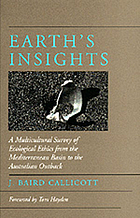 Earth's Insights
by
The environmental crisis is global in scope, yet contemporary environmental ethics is centered predominantly in Western philosophy and religion. Earth's Insights widens the scope of environmental ethics to include the ecological teachings embedded in non-Western worldviews. J. Baird Callicott ranges broadly, exploring the sacred texts of Islam, Hinduism, Jainism, Taoism, Confucianism, and Zen Buddhism, as well as the oral traditions of Polynesia, North and South America, and Australia. He also documents the attempts of various peoples to put their environmental ethics into practice. Finally, he wrestles with a question of vital importance to all people sharing the fate of this small planet: How can the world's many and diverse environmental philosophies be brought together in a complementary and consistent whole?
Earth's Insights
by
The environmental crisis is global in scope, yet contemporary environmental ethics is centered predominantly in Western philosophy and religion. Earth's Insights widens the scope of environmental ethics to include the ecological teachings embedded in non-Western worldviews. J. Baird Callicott ranges broadly, exploring the sacred texts of Islam, Hinduism, Jainism, Taoism, Confucianism, and Zen Buddhism, as well as the oral traditions of Polynesia, North and South America, and Australia. He also documents the attempts of various peoples to put their environmental ethics into practice. Finally, he wrestles with a question of vital importance to all people sharing the fate of this small planet: How can the world's many and diverse environmental philosophies be brought together in a complementary and consistent whole?
 Introduction to Applied Mathematics for Environmental Science
by
This book teaches mathematical structures and how they can be applied in environmental science. Each chapter presents story problems with an emphasis on derivation. For each of these, the discussion follows the pattern of first presenting an example of a type of structure as applied to environmental science. The definition of the structure is presented, followed by additional examples using MATLAB, and analytic methods of solving and learning from the structure.
Introduction to Applied Mathematics for Environmental Science
by
This book teaches mathematical structures and how they can be applied in environmental science. Each chapter presents story problems with an emphasis on derivation. For each of these, the discussion follows the pattern of first presenting an example of a type of structure as applied to environmental science. The definition of the structure is presented, followed by additional examples using MATLAB, and analytic methods of solving and learning from the structure.
 Principles of Environmental Science
by
A discussion of how science can help us find solutions for important environmental issues. Each chapter starts with an opening vignette of an environmental problem showing the principles to be presented in the text.
Principles of Environmental Science
by
A discussion of how science can help us find solutions for important environmental issues. Each chapter starts with an opening vignette of an environmental problem showing the principles to be presented in the text.
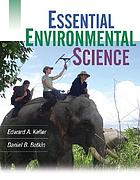 Essential Environmental Science
by
Essential Environmental Science provides a non-quantitative approach that is based on principles, critical thinking and the big questions that are driving the field today. It offers a condensed look at the field, covering topics in way that will help readers answer the "big questions." It eliminates more detailed or advanced topics to make the material more accessible while also placing the focus on today's important issues.
Essential Environmental Science
by
Essential Environmental Science provides a non-quantitative approach that is based on principles, critical thinking and the big questions that are driving the field today. It offers a condensed look at the field, covering topics in way that will help readers answer the "big questions." It eliminates more detailed or advanced topics to make the material more accessible while also placing the focus on today's important issues.
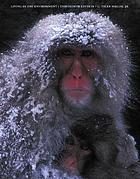 Living in the Environment : principles, connections, and solutions
by
Living in the Environment : principles, connections, and solutions
by
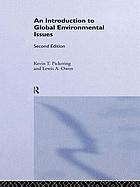 An Introduction to Global Environmental Issues
by
An Introduction to Global Environmental Issues presents a comprehensive and stimulating introduction to the key environmental issues presently threatening our global environment. Offering an authoritative introduction to the key topics, a source of latest environmental information, and an innovative stimulus for debate, this is an essential book for all those studying or concerned with global environmental issues. Major global environmental issues are brought into focus. Explanations of the evolution of the earth's natural systems (hydrosphere, biosphere, geosphere, ecosphere) provide an essential understanding of the scientific concepts, processes and historical background to environmental issues. Contemporary socio-economic, cultural and political considerations are explored and important conceptual approaches such as Gaian hypotheses and Chaos Theory are introduced. Human impact and management of the natural environment, and concerns for maintaining biodiversity are emphasised throughout. Specific features include: * Case studies drawn from across the world * Superb illustrations: 4-colour plate sections; a wealth of informative diagrams * Glossary of key terms, with key concepts highlighted throughout the text * Annotated guides to further reading * Chapter summaries and key points A Lecturers' Manual is available to accompany the text This 2nd Edition has been extensively revised and expanded to include many new illustrations, up-to-date data (including the latest IPCC data) and the most recent events including Khobe earthquake, French nuclear testing, the Berlin conference and the Antarctic Treaty. Sections on ecosystems, techniques, pollution, tectonics, risk and hazard mitigation, world populations, and issues of human impact and environmental management, have been particularly expanded in this new edition.
An Introduction to Global Environmental Issues
by
An Introduction to Global Environmental Issues presents a comprehensive and stimulating introduction to the key environmental issues presently threatening our global environment. Offering an authoritative introduction to the key topics, a source of latest environmental information, and an innovative stimulus for debate, this is an essential book for all those studying or concerned with global environmental issues. Major global environmental issues are brought into focus. Explanations of the evolution of the earth's natural systems (hydrosphere, biosphere, geosphere, ecosphere) provide an essential understanding of the scientific concepts, processes and historical background to environmental issues. Contemporary socio-economic, cultural and political considerations are explored and important conceptual approaches such as Gaian hypotheses and Chaos Theory are introduced. Human impact and management of the natural environment, and concerns for maintaining biodiversity are emphasised throughout. Specific features include: * Case studies drawn from across the world * Superb illustrations: 4-colour plate sections; a wealth of informative diagrams * Glossary of key terms, with key concepts highlighted throughout the text * Annotated guides to further reading * Chapter summaries and key points A Lecturers' Manual is available to accompany the text This 2nd Edition has been extensively revised and expanded to include many new illustrations, up-to-date data (including the latest IPCC data) and the most recent events including Khobe earthquake, French nuclear testing, the Berlin conference and the Antarctic Treaty. Sections on ecosystems, techniques, pollution, tectonics, risk and hazard mitigation, world populations, and issues of human impact and environmental management, have been particularly expanded in this new edition.
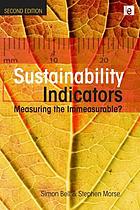 Sustainability Indicators : measuring the immeasurable?
by
The groundbreaking first edition of Sustainability Indicators reviewed the development and value of sustainability indicators and discussed the advantage of taking a holistic and qualitative approach rather than focusing on strictly quantitative measures. In the new edition the authors bring the literature up to date and show that the basic requirement for a systemic approach is now well grounded in the evidence. They examine the origins and development of Systemic Sustainability Analysis (SSA) as a theoretical approach to sustainability which has been developed in practice in a number of countries on an array of projects since the first edition. They look at how SSA has evolved into the practical approaches of Systemic Prospective Sustainability Analysis (SPSA) and IMAGINE, and, in particular how a wide range of participatory methodologies have been adopted over the years. They also provide an assessment of the strengths and weaknesses of projects that undertake work in the general field of sustainable development.
Sustainability Indicators : measuring the immeasurable?
by
The groundbreaking first edition of Sustainability Indicators reviewed the development and value of sustainability indicators and discussed the advantage of taking a holistic and qualitative approach rather than focusing on strictly quantitative measures. In the new edition the authors bring the literature up to date and show that the basic requirement for a systemic approach is now well grounded in the evidence. They examine the origins and development of Systemic Sustainability Analysis (SSA) as a theoretical approach to sustainability which has been developed in practice in a number of countries on an array of projects since the first edition. They look at how SSA has evolved into the practical approaches of Systemic Prospective Sustainability Analysis (SPSA) and IMAGINE, and, in particular how a wide range of participatory methodologies have been adopted over the years. They also provide an assessment of the strengths and weaknesses of projects that undertake work in the general field of sustainable development.
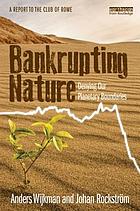 Bankrupting Nature: denying our planetary boundaries.
by
This powerful book shows us that we are in deep denial about the magnitude of the global environmental challenges and resource constraints facing the world. Despite growing scientific consensus on major environmental threats as well as resource depletion, societies are largely continuing with business as usual, at best attempting to tinker at the margins of the problems. The authors argue that regardless of whether governments respond to the economic crisis through additional stimulus packages or reduced government spending, environmental and resource constraints will remain. The crisis will be exacerbated by the combination of climate change, ecosystem decline and resource scarcity, in particular crude oil. The concept of Planetary Boundaries is introduced as a powerful explanation of the limits of the biosphere to sustain continued conventional growth. The book breaks the long silence on population, criticizing donor countries for not doing enough to support the education of girls and reproductive health services. It is shown that an economy built on the continuous expansion of material consumption is not sustainable. De-growth, however, is no solution either. The growth dilemma can only be addressed through a transformation of the economic system. A strong plea is made for abandoning GDP growth as the key objective for development. The focus should instead be on a limited number of welfare indicators. The trickle-down concept is seriously questioned, to be replaced by one of sufficiency. Rich countries are called upon to hold back their material growth to leave room for a rising living standard among the poor. Alternative business models are presented, such as moving from products to services or towards a circular economy based on re-use, reconditioning and recylcing - all with the aim of facilitating sustainable development. A Report to the Club of Rome
Bankrupting Nature: denying our planetary boundaries.
by
This powerful book shows us that we are in deep denial about the magnitude of the global environmental challenges and resource constraints facing the world. Despite growing scientific consensus on major environmental threats as well as resource depletion, societies are largely continuing with business as usual, at best attempting to tinker at the margins of the problems. The authors argue that regardless of whether governments respond to the economic crisis through additional stimulus packages or reduced government spending, environmental and resource constraints will remain. The crisis will be exacerbated by the combination of climate change, ecosystem decline and resource scarcity, in particular crude oil. The concept of Planetary Boundaries is introduced as a powerful explanation of the limits of the biosphere to sustain continued conventional growth. The book breaks the long silence on population, criticizing donor countries for not doing enough to support the education of girls and reproductive health services. It is shown that an economy built on the continuous expansion of material consumption is not sustainable. De-growth, however, is no solution either. The growth dilemma can only be addressed through a transformation of the economic system. A strong plea is made for abandoning GDP growth as the key objective for development. The focus should instead be on a limited number of welfare indicators. The trickle-down concept is seriously questioned, to be replaced by one of sufficiency. Rich countries are called upon to hold back their material growth to leave room for a rising living standard among the poor. Alternative business models are presented, such as moving from products to services or towards a circular economy based on re-use, reconditioning and recylcing - all with the aim of facilitating sustainable development. A Report to the Club of Rome
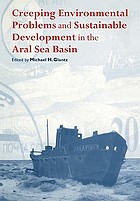 Creeping Environmental Problems and Sustainable Development in the Aral Sea Basin
by
Environmental degradation in the Aral Sea basin in Central Asia has been a touchstone for increasing public awareness of environmental issues. The Aral crisis has been touted as a "quiet Chernobyl" and as one of the worst human-made environmental catastrophes of the twentieth century. This multidisciplinary book is the first to comprehensively describe the slow onset of low grade but incremental changes (i.e., creeping environmental change) that affected the region and its peoples. Through a set of case studies, it describes how the region's decision-makers allowed these changes to grow into an environmental and societal nightmare. It outlines many lessons to be learned for other areas undergoing detrimental creeping environmental change, and provides an important example of how to approach such disasters for students and researchers of environmental studies, global change, political science and history.
Creeping Environmental Problems and Sustainable Development in the Aral Sea Basin
by
Environmental degradation in the Aral Sea basin in Central Asia has been a touchstone for increasing public awareness of environmental issues. The Aral crisis has been touted as a "quiet Chernobyl" and as one of the worst human-made environmental catastrophes of the twentieth century. This multidisciplinary book is the first to comprehensively describe the slow onset of low grade but incremental changes (i.e., creeping environmental change) that affected the region and its peoples. Through a set of case studies, it describes how the region's decision-makers allowed these changes to grow into an environmental and societal nightmare. It outlines many lessons to be learned for other areas undergoing detrimental creeping environmental change, and provides an important example of how to approach such disasters for students and researchers of environmental studies, global change, political science and history.
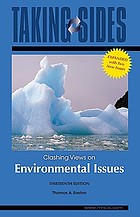 Taking Sides: Clashing Views on Environmental Issues, Expanded
by
TAKING SIDES: ENVIRONMENTAL ISSUES, 13/e EXPANDEDpresents current controversial issues in a debate-style format designed to stimulate student interest and develop critical thinking skills. Each issue is thoughtfully framed with an issue summary, an issue introduction, and a postscript. An instructor’s manual with testing material is available for each volume. USING TAKING SIDES IN THE CLASSROOM is also an excellent instructor resource with practical suggestions on incorporating this effective approach in the classroom. Each TAKING SIDES reader features an annotated listing of selected World Wide Web sites and is supported by a book website. Visitwww.mhcls.com.
Taking Sides: Clashing Views on Environmental Issues, Expanded
by
TAKING SIDES: ENVIRONMENTAL ISSUES, 13/e EXPANDEDpresents current controversial issues in a debate-style format designed to stimulate student interest and develop critical thinking skills. Each issue is thoughtfully framed with an issue summary, an issue introduction, and a postscript. An instructor’s manual with testing material is available for each volume. USING TAKING SIDES IN THE CLASSROOM is also an excellent instructor resource with practical suggestions on incorporating this effective approach in the classroom. Each TAKING SIDES reader features an annotated listing of selected World Wide Web sites and is supported by a book website. Visitwww.mhcls.com.
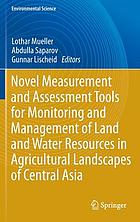 Novel Measurement and Assessment Tools for Monitoring and Management of Land and Water Resources in Agricultural Landscapes of Central Asia
by
The book aims to initiate a sustainable use of land and water resources in Central Asia by the transfer of scientific methods. It deals with the most advanced methods worldwide for better monitoring and management of water and land resources. We offer an array of methods of measuring, assessing, forecasting, utilizing and controling processes in agricultural landscapes. These are laboratory and field measurement methods, methods of resource evaluation, functional mapping and risk assessment, and remote sensing methods for monitoring and modeling large areas. The book contains methods and results of data analysis and ecosystem modeling, of bioremediation of soil and water, field monitoring of soils, and methods and technologies for optimizing land use systems as well. The chapter authors are inventors and advocators of novel transferrable methods. The book starts with an analysis of the current state of water and land resources. Finally concrete proposals for the applicability of novel methods are given.
Novel Measurement and Assessment Tools for Monitoring and Management of Land and Water Resources in Agricultural Landscapes of Central Asia
by
The book aims to initiate a sustainable use of land and water resources in Central Asia by the transfer of scientific methods. It deals with the most advanced methods worldwide for better monitoring and management of water and land resources. We offer an array of methods of measuring, assessing, forecasting, utilizing and controling processes in agricultural landscapes. These are laboratory and field measurement methods, methods of resource evaluation, functional mapping and risk assessment, and remote sensing methods for monitoring and modeling large areas. The book contains methods and results of data analysis and ecosystem modeling, of bioremediation of soil and water, field monitoring of soils, and methods and technologies for optimizing land use systems as well. The chapter authors are inventors and advocators of novel transferrable methods. The book starts with an analysis of the current state of water and land resources. Finally concrete proposals for the applicability of novel methods are given.
 Supplementary Material and Solutions Manual for Mathematical Modeling in the Environment
by
This manual is meant to provide supplementary material and solutions to the exercises used in Charles Hadlock's textbook, Mathematical Modeling in the Environment. The manual is invaluable to users of the textbook as it contains complete solutions and often further discussion of essentially every exercise the author presents in his book. This includes both the mathematical/computational exercises as well as the research questions and investigations. Since the exercises in the textbook are very rich in content, (rather than simple mechanical problems), and cover a wide range, most readers will not have the time to work out every one on their own. Readers can thus still benefit greatly from perusing solutions to problems they have at least thought about briefly. Students using this manual still need to work out solutions to research questions using their own sources and adapting them to their own geographic locations, or to numerical problems using their own computational schemes, so this manual will be a useful guide to students in many course contexts. Enrichment material is included on the topics of some of the exercises. Advise for teachers who lack previous environmental experience, but who want to teach this material is also provided and makes it practical for such persons to offer a course based on these volumes. This book is the essential companion to Mathematical Modeling in the Environment.
Supplementary Material and Solutions Manual for Mathematical Modeling in the Environment
by
This manual is meant to provide supplementary material and solutions to the exercises used in Charles Hadlock's textbook, Mathematical Modeling in the Environment. The manual is invaluable to users of the textbook as it contains complete solutions and often further discussion of essentially every exercise the author presents in his book. This includes both the mathematical/computational exercises as well as the research questions and investigations. Since the exercises in the textbook are very rich in content, (rather than simple mechanical problems), and cover a wide range, most readers will not have the time to work out every one on their own. Readers can thus still benefit greatly from perusing solutions to problems they have at least thought about briefly. Students using this manual still need to work out solutions to research questions using their own sources and adapting them to their own geographic locations, or to numerical problems using their own computational schemes, so this manual will be a useful guide to students in many course contexts. Enrichment material is included on the topics of some of the exercises. Advise for teachers who lack previous environmental experience, but who want to teach this material is also provided and makes it practical for such persons to offer a course based on these volumes. This book is the essential companion to Mathematical Modeling in the Environment.
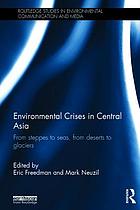 Environmental Crises in Central Asia : from steppes to seas, from deserts to glaciers
by
Environmental conditions do not exist in a vacuum. They are influenced by science, politics, history, public policy, culture, economics, public attitudes, and competing priorities, as well as past human decisions. In the case of Central Asia, such Soviet-era decisions include irrigation systems and physical infrastructure that are now crumbling, mine tailings that leach pollutants into soil and groundwater, and abandoned factories that are physically decrepit and contaminated with toxic chemicals. Environmental Crises in Central Asia highlights major environmental challenges confronting the region's former Soviet republics: Kazakhstan, Kyrgyzstan, Tajikistan, Turkmenistan, and Uzbekistan. They include threats to the Caspian and Aral seas, the impact of climate change on glaciers, desertification, deforestation, destruction of habitat and biodiversity, radioactive and hazardous wastes, water quality and supply, energy exploration and development, pesticides and food security, and environmental health. The ramifications of these challenges cross national borders and may affect economic, political, and cultural relationships on a vast geographic scale. At the same time, the region's five governments have demonstrated little resolve to address these complex challenges. This book is a valuable multi-disciplinary resource for academics, scholars, and policymakers in environmental sciences, geography, political science, natural resources, mass communications, public health, and economics.
Environmental Crises in Central Asia : from steppes to seas, from deserts to glaciers
by
Environmental conditions do not exist in a vacuum. They are influenced by science, politics, history, public policy, culture, economics, public attitudes, and competing priorities, as well as past human decisions. In the case of Central Asia, such Soviet-era decisions include irrigation systems and physical infrastructure that are now crumbling, mine tailings that leach pollutants into soil and groundwater, and abandoned factories that are physically decrepit and contaminated with toxic chemicals. Environmental Crises in Central Asia highlights major environmental challenges confronting the region's former Soviet republics: Kazakhstan, Kyrgyzstan, Tajikistan, Turkmenistan, and Uzbekistan. They include threats to the Caspian and Aral seas, the impact of climate change on glaciers, desertification, deforestation, destruction of habitat and biodiversity, radioactive and hazardous wastes, water quality and supply, energy exploration and development, pesticides and food security, and environmental health. The ramifications of these challenges cross national borders and may affect economic, political, and cultural relationships on a vast geographic scale. At the same time, the region's five governments have demonstrated little resolve to address these complex challenges. This book is a valuable multi-disciplinary resource for academics, scholars, and policymakers in environmental sciences, geography, political science, natural resources, mass communications, public health, and economics.
 Modern Concepts of Natural Science
by
This book explores both general and specific ideas of the formation and development of modern natural sciences. Some basic problems characteristic of natural science development are discussed. Integrativegeneral scientific trends are considered where natural-scientific knowledge is of highest value, in particular, solving global universal problems and the world community's transition to sustainable development. The book contents includes the universal laws of preservation in nature, the concept of continuousdiscrete properties of matter, the foundations of the special and general theory of relativity, the laws of thermodynamics, the problem of relation of the reactivity of substances with their structure and properties, the concepts of molecular and genetic biology, the idea of the origin, structure and evolution of the Universe and Earth, the concepts of general and applied ecology, and features of self-organization processes in both inanimate and animate nature.
Modern Concepts of Natural Science
by
This book explores both general and specific ideas of the formation and development of modern natural sciences. Some basic problems characteristic of natural science development are discussed. Integrativegeneral scientific trends are considered where natural-scientific knowledge is of highest value, in particular, solving global universal problems and the world community's transition to sustainable development. The book contents includes the universal laws of preservation in nature, the concept of continuousdiscrete properties of matter, the foundations of the special and general theory of relativity, the laws of thermodynamics, the problem of relation of the reactivity of substances with their structure and properties, the concepts of molecular and genetic biology, the idea of the origin, structure and evolution of the Universe and Earth, the concepts of general and applied ecology, and features of self-organization processes in both inanimate and animate nature.
 Exploring Integrated Science
by
Why is rubber elastic? Why are leaves green? Why can a gecko climb a wall? Answering these and a myriad of other puzzles of nature, Exploring Integrated Science shows how the simplest questions that arise from our daily experiences can lead us through a chain of reasoning that explains some of the most fascinating principles of science. Written in a non-technical, entertaining style to engage those without a science background while maintaining the academic rigor required by more advanced readers, the book follows a unique format that enhances the learning process. Each chapter begins with a pertinent question that forms the basis for explaining a scientific principle. Step by step, the text then delves into the more sophisticated scientific matter necessary for providing insight into the question presented, elucidating key principles and concepts. Each chapter contains a summary highlighting the salient points, answers the question definitively, and concludes with a series of exercises to test readers' assimilation of the material. Richly illustrated with more than 650 vibrant color images, this work captures the essence of our intuitive appreciation of nature, which is the starting point for the adventure of science. Presenting integrated scientific ideas that seamlessly blend biology, mathematics, chemistry, and physics, this volume brings the most complex and intriguing phenomena to readers in a manner that is both accessible and entertaining. The book has an accompanying website with more information.
Exploring Integrated Science
by
Why is rubber elastic? Why are leaves green? Why can a gecko climb a wall? Answering these and a myriad of other puzzles of nature, Exploring Integrated Science shows how the simplest questions that arise from our daily experiences can lead us through a chain of reasoning that explains some of the most fascinating principles of science. Written in a non-technical, entertaining style to engage those without a science background while maintaining the academic rigor required by more advanced readers, the book follows a unique format that enhances the learning process. Each chapter begins with a pertinent question that forms the basis for explaining a scientific principle. Step by step, the text then delves into the more sophisticated scientific matter necessary for providing insight into the question presented, elucidating key principles and concepts. Each chapter contains a summary highlighting the salient points, answers the question definitively, and concludes with a series of exercises to test readers' assimilation of the material. Richly illustrated with more than 650 vibrant color images, this work captures the essence of our intuitive appreciation of nature, which is the starting point for the adventure of science. Presenting integrated scientific ideas that seamlessly blend biology, mathematics, chemistry, and physics, this volume brings the most complex and intriguing phenomena to readers in a manner that is both accessible and entertaining. The book has an accompanying website with more information.
 Representing and Intervening: introductory topics in the philosophy of natural science
by
This 1983 book is a lively and clearly written introduction to the philosophy of natural science, organized around the central theme of scientific realism. It has two parts. 'Representing' deals with the different philosophical accounts of scientific objectivity and the reality of scientific entities. The views of Kuhn, Feyerabend, Lakatos, Putnam, van Fraassen, and others, are all considered. 'Intervening' presents the first sustained treatment of experimental science for many years and uses it to give a new direction to debates about realism. Hacking illustrates how experimentation often has a life independent of theory. He argues that although the philosophical problems of scientific realism can not be resolved when put in terms of theory alone, a sound philosophy of experiment provides compelling grounds for a realistic attitude. A great many scientific examples are described in both parts of the book, which also includes lucid expositions of recent high energy physics and a remarkable chapter on the microscope in cell biology.
Representing and Intervening: introductory topics in the philosophy of natural science
by
This 1983 book is a lively and clearly written introduction to the philosophy of natural science, organized around the central theme of scientific realism. It has two parts. 'Representing' deals with the different philosophical accounts of scientific objectivity and the reality of scientific entities. The views of Kuhn, Feyerabend, Lakatos, Putnam, van Fraassen, and others, are all considered. 'Intervening' presents the first sustained treatment of experimental science for many years and uses it to give a new direction to debates about realism. Hacking illustrates how experimentation often has a life independent of theory. He argues that although the philosophical problems of scientific realism can not be resolved when put in terms of theory alone, a sound philosophy of experiment provides compelling grounds for a realistic attitude. A great many scientific examples are described in both parts of the book, which also includes lucid expositions of recent high energy physics and a remarkable chapter on the microscope in cell biology.
 Understanding Philosophy of Science
by
Few can imagine a world without telephones or televisions; many depend on computers and the Internet as part of daily life. Without scientific theory, these developments would not have been possible. In this exceptionally clear and engaging introduction to philosophy of science, James Ladyman explores the philosophical questions that arise when we reflect on the nature of the scientific method and the knowledge it produces. He discusses whether fundamental philosophical questions about knowledge and reality might be answered by science, and considers in detail the debate between realists and antirealists about the extent of scientific knowledge. Along the way, central topics in philosophy of science, such as the demarcation of science from non-science, induction, confirmation and falsification, the relationship between theory and observation and relativism are all addressed. Important and complex current debates over underdetermination, inference to the best explaination and the implications of radical theory change are clarified and clearly explained for those new to the subject.
Understanding Philosophy of Science
by
Few can imagine a world without telephones or televisions; many depend on computers and the Internet as part of daily life. Without scientific theory, these developments would not have been possible. In this exceptionally clear and engaging introduction to philosophy of science, James Ladyman explores the philosophical questions that arise when we reflect on the nature of the scientific method and the knowledge it produces. He discusses whether fundamental philosophical questions about knowledge and reality might be answered by science, and considers in detail the debate between realists and antirealists about the extent of scientific knowledge. Along the way, central topics in philosophy of science, such as the demarcation of science from non-science, induction, confirmation and falsification, the relationship between theory and observation and relativism are all addressed. Important and complex current debates over underdetermination, inference to the best explaination and the implications of radical theory change are clarified and clearly explained for those new to the subject.
 The Impact of Science on Society
by
Many of the revolutionary effects of science and technology are obvious enough. Bertrand Russell saw in the 1950s that there are also many negative aspects of scientific innovation. Insightful and controversial in equal measure, Russell argues that science offers the world greater well-being than it has ever known, on the condition that prosperity is dispersed; power is diffused by means of a single, world government; birth rates do not become too high; and war is abolished. Russell acknowledges that is a tall order, but remains essentially optimistic. He imagines mankind in a 'race between human skill as to means and human folly as to ends', but believes human society will ultimately choose the path of reason. This Routledge Classics edition includes a new Preface by Tim Sluckin.
The Impact of Science on Society
by
Many of the revolutionary effects of science and technology are obvious enough. Bertrand Russell saw in the 1950s that there are also many negative aspects of scientific innovation. Insightful and controversial in equal measure, Russell argues that science offers the world greater well-being than it has ever known, on the condition that prosperity is dispersed; power is diffused by means of a single, world government; birth rates do not become too high; and war is abolished. Russell acknowledges that is a tall order, but remains essentially optimistic. He imagines mankind in a 'race between human skill as to means and human folly as to ends', but believes human society will ultimately choose the path of reason. This Routledge Classics edition includes a new Preface by Tim Sluckin.
 Imposturas Intelectuales: postmodern philosophers' abuse of science
by
En la primavera de 1996 una revista americana de prestigio b"la Social Text publico un articulo bajo el inquietante titulo de Transgredir las fronteras: hacia una hermeneutica transformativa de la gravitacion cuantica . Su autor, Alan Sokal, reforzaba sus divagaciones con citas de intelectuales, franceses y americanos, celebres. Posteriormente el mismo revelo que se trataba de una parodia. Su intencion era desenmascarar, a traves de su satira, el uso intempestivo de terminologia cientifica y las extrapolaciones abusivas de las ciencias exactas a las humanas. De un modo mas general, Sokal habia querido denunciar con su articulo el relativismo posmoderno para el cual la objetividad es una mera convencion social. Esta parodia desencadeno un intenso debate entre los intelectuales mas relevantes de Francia y de otros paises. En este libro los autores recogen y comentan textos que ilustran las mistificaciones fisico matematicas de autores como Jacques Lacan, Julia Kristeva, Luce Irigaray, Bruno Latour, Jean Baudrillard, Gilles Deleuze, Felix Guattari, Paul Virilo, Henri Bergson...todos ellos autores que gozan de una notoriedad importante en todo el mundo. Sokal y Bricmont muestran como, tras la imponente jerga y la aparente erudicion cientifica, el rey esta desnudo. Alan Sokal es profesor de Fisica en la Universidad de Nueva York. Jean Bricmont es profesor de Fisica Teorica en la Universidad de Lovaina.
Imposturas Intelectuales: postmodern philosophers' abuse of science
by
En la primavera de 1996 una revista americana de prestigio b"la Social Text publico un articulo bajo el inquietante titulo de Transgredir las fronteras: hacia una hermeneutica transformativa de la gravitacion cuantica . Su autor, Alan Sokal, reforzaba sus divagaciones con citas de intelectuales, franceses y americanos, celebres. Posteriormente el mismo revelo que se trataba de una parodia. Su intencion era desenmascarar, a traves de su satira, el uso intempestivo de terminologia cientifica y las extrapolaciones abusivas de las ciencias exactas a las humanas. De un modo mas general, Sokal habia querido denunciar con su articulo el relativismo posmoderno para el cual la objetividad es una mera convencion social. Esta parodia desencadeno un intenso debate entre los intelectuales mas relevantes de Francia y de otros paises. En este libro los autores recogen y comentan textos que ilustran las mistificaciones fisico matematicas de autores como Jacques Lacan, Julia Kristeva, Luce Irigaray, Bruno Latour, Jean Baudrillard, Gilles Deleuze, Felix Guattari, Paul Virilo, Henri Bergson...todos ellos autores que gozan de una notoriedad importante en todo el mundo. Sokal y Bricmont muestran como, tras la imponente jerga y la aparente erudicion cientifica, el rey esta desnudo. Alan Sokal es profesor de Fisica en la Universidad de Nueva York. Jean Bricmont es profesor de Fisica Teorica en la Universidad de Lovaina.
 Conceptual Integrated Science
by
This best-selling introduction to the physical and life sciences emphasizes concepts over computation and treats equations as a guide to thinking so the reader can connect ideas. Conceptual Integrated Science covers physics, chemistry, earth science, astronomy, and biology at a level appropriate for non-science students. The conceptual approach relates science to everyday life, is personal and direct, deemphasizes jargon, and emphasizes central ideas. The conceptual ideas serve as the foundation supporting and integrating all the sciences.
Conceptual Integrated Science
by
This best-selling introduction to the physical and life sciences emphasizes concepts over computation and treats equations as a guide to thinking so the reader can connect ideas. Conceptual Integrated Science covers physics, chemistry, earth science, astronomy, and biology at a level appropriate for non-science students. The conceptual approach relates science to everyday life, is personal and direct, deemphasizes jargon, and emphasizes central ideas. The conceptual ideas serve as the foundation supporting and integrating all the sciences.
 The Geek Manifesto : why science matters
by
Whether we want to improve education or cut crime, to enhance public health or to generate clean energy, we need the experimental methods of science - the best tool humanity has yet developed for working out what works. Yet from the way we're governed to the news we're fed by the media we're let down by a lack of understanding and respect for its insights and evidence. In The Geek Manifesto Mark Henderson explains why and how we need to entrench scientific thinking more deeply into every aspect of our society. A new movement is gathering. Let's turn it into a force our leaders cannot ignore. This edition includes an appendix- 'A Geek Manifesto for America' by David Dobbs.
The Geek Manifesto : why science matters
by
Whether we want to improve education or cut crime, to enhance public health or to generate clean energy, we need the experimental methods of science - the best tool humanity has yet developed for working out what works. Yet from the way we're governed to the news we're fed by the media we're let down by a lack of understanding and respect for its insights and evidence. In The Geek Manifesto Mark Henderson explains why and how we need to entrench scientific thinking more deeply into every aspect of our society. A new movement is gathering. Let's turn it into a force our leaders cannot ignore. This edition includes an appendix- 'A Geek Manifesto for America' by David Dobbs.
 The Science of Communicating Science : the ultimate guide
by
Are you wishing you knew how to better communicate science, without having to read several hundred academic papers and books on the topic? Luckily Dr Craig Cormick has done this for you! This highly readable and entertaining book distills best practice research on science communication into accessible chapters, supported by case studies and examples. With practical advice on everything from messages and metaphors to metrics and ethics, you will learn what the public think about science and why, and how to shape scientific research into a story that will influence beliefs, behaviors and policies. Features: Captures the breadth of contemporary research on how to communicate science in plain English Supported by examples and case studies throughout Highly entertaining and informative.
The Science of Communicating Science : the ultimate guide
by
Are you wishing you knew how to better communicate science, without having to read several hundred academic papers and books on the topic? Luckily Dr Craig Cormick has done this for you! This highly readable and entertaining book distills best practice research on science communication into accessible chapters, supported by case studies and examples. With practical advice on everything from messages and metaphors to metrics and ethics, you will learn what the public think about science and why, and how to shape scientific research into a story that will influence beliefs, behaviors and policies. Features: Captures the breadth of contemporary research on how to communicate science in plain English Supported by examples and case studies throughout Highly entertaining and informative.
 Life 3.0 : being human in the age of artificial intelligence
by
"What jobs should be automated? How should our legal systems handle autonomous systems? How likely is the emergence of suprahuman intelligence? A.I. is the future of science, technology, and business--and there is no person better qualified or situated to explore that future than Max Tegmark. What has A.I. brought us? Where will it lead us? The story of A.I. is the story of intelligence--of life processes as they evolve from bacteria (1.0) to humans (2.0), where life processes define their own software, to technology (3.0), where life processes design both their hardware and software. We know that A.I. is transforming work, laws, and weapons, as well as the dark side of computing (hacking and viral sabotage), raising questions that we all need to address: What jobs should be automated? How should our legal systems handle autonomous systems? How likely is the emergence of suprahuman intelligence? Is it possible to control suprahuman intelligence? How do we ensure that the uses of A.I. remain beneficial? These are the issues at the heart of this book and its unique perspective, which seeks a ground apart from techno-skepticism and digital utopia"-- Provided by publisher.
Life 3.0 : being human in the age of artificial intelligence
by
"What jobs should be automated? How should our legal systems handle autonomous systems? How likely is the emergence of suprahuman intelligence? A.I. is the future of science, technology, and business--and there is no person better qualified or situated to explore that future than Max Tegmark. What has A.I. brought us? Where will it lead us? The story of A.I. is the story of intelligence--of life processes as they evolve from bacteria (1.0) to humans (2.0), where life processes define their own software, to technology (3.0), where life processes design both their hardware and software. We know that A.I. is transforming work, laws, and weapons, as well as the dark side of computing (hacking and viral sabotage), raising questions that we all need to address: What jobs should be automated? How should our legal systems handle autonomous systems? How likely is the emergence of suprahuman intelligence? Is it possible to control suprahuman intelligence? How do we ensure that the uses of A.I. remain beneficial? These are the issues at the heart of this book and its unique perspective, which seeks a ground apart from techno-skepticism and digital utopia"-- Provided by publisher.
 The Business Case for AI: A Leader's Guide to AI Strategies, Best Practices & Real-World Applications
by
Launch AI initiatives that get results with this step-by-step blueprint for business leaders. AI is much more than a sexy marketing gimmick. At its core, it's a powerful business tool that can make operations and decision-making more efficient, employees more productive, and customers delighted. Unfortunately, leaders who want to take advantage of artificial intelligence often don't know where to start. The process can feel overwhelming-from examining existing software systems and choosing where to apply AI, to preparing every tier of the organization for the transition. In this practical step-by-step guide for business leaders, Kavita Ganesan takes the mystery out of implementing AI, showing you how to launch AI and automation initiatives that get big results. With real-world AI examples to spark your own ideas, you'll learn how to identify high-impact AI opportunities, prepare for AI transitions, and measure your AI performance. Get ready to discover: What's true, what's hype, and what's realistic to expect from AI in your business.How to spot true AI opportunities in your organization and capitalize on them in creative ways.Three Pillars of AI success, a systematic framework for testing and evaluating the value of AI initiatives. Simple and compelling, The Business Case for AI gives leaders the information and resources they need without the statistics, data science, or technical jargon. Whether you want to jumpstart your AI strategy, manage your AI initiatives for better outcomes, or simply find inspiration for your own AI applications, The Business Case for AI is your blueprint for AI success.
The Business Case for AI: A Leader's Guide to AI Strategies, Best Practices & Real-World Applications
by
Launch AI initiatives that get results with this step-by-step blueprint for business leaders. AI is much more than a sexy marketing gimmick. At its core, it's a powerful business tool that can make operations and decision-making more efficient, employees more productive, and customers delighted. Unfortunately, leaders who want to take advantage of artificial intelligence often don't know where to start. The process can feel overwhelming-from examining existing software systems and choosing where to apply AI, to preparing every tier of the organization for the transition. In this practical step-by-step guide for business leaders, Kavita Ganesan takes the mystery out of implementing AI, showing you how to launch AI and automation initiatives that get big results. With real-world AI examples to spark your own ideas, you'll learn how to identify high-impact AI opportunities, prepare for AI transitions, and measure your AI performance. Get ready to discover: What's true, what's hype, and what's realistic to expect from AI in your business.How to spot true AI opportunities in your organization and capitalize on them in creative ways.Three Pillars of AI success, a systematic framework for testing and evaluating the value of AI initiatives. Simple and compelling, The Business Case for AI gives leaders the information and resources they need without the statistics, data science, or technical jargon. Whether you want to jumpstart your AI strategy, manage your AI initiatives for better outcomes, or simply find inspiration for your own AI applications, The Business Case for AI is your blueprint for AI success.
 Artificial Intelligence Basics: a non-technical introduction
by
Artificial intelligence touches nearly every part of your day. While you may initially assume that technology such as smart speakers and digital assistants are the extent of it, AI has in fact rapidly become a general-purpose technology, reverberating across industries including transportation, healthcare, financial services, and many more. In our modern era, an understanding of AI and its possibilities for your organization is essential for growth and success. Artificial Intelligence Basics has arrived to equip you with a fundamental, timely grasp of AI and its impact. Author Tom Taulli provides an engaging, non-technical introduction to important concepts such as machine learning, deep learning, natural language processing (NLP), robotics, and more. In addition to guiding you through real-world case studies and practical implementation steps, Taulli uses his expertise to expand on the bigger questions that surround AI. These include societal trends, ethics, andfuture impact AI will have on world governments, company structures, and daily life. Google, Amazon, Facebook, and similar tech giants are far from the only organizations on which artificial intelligence has had--and will continue to have--an incredibly significant result. AI is the present and the future of your business as well as your home life. Strengthening your prowess on the subject will prove invaluable to your preparation for the future of tech, and Artificial Intelligence Basics is the indispensable guide that you've been seeking. What You Will Learn Study the core principles for AI approaches such as machine learning, deep learning, and NLP (Natural Language Processing) Discover the best practices to successfully implement AI by examining case studies including Uber, Facebook, Waymo, UiPath, and Stitch Fix Understand how AI capabilities for robots can improve business Deploy chatbots and Robotic Processing Automation (RPA) to save costs and improve customer service Avoid costly gotchas Recognize ethical concerns and other risk factors of using artificial intelligence Examine the secular trends and how they may impact your business Who This Book Is For Readers without a technical background, such as managers, looking to understand AI to evaluate solutions.
Artificial Intelligence Basics: a non-technical introduction
by
Artificial intelligence touches nearly every part of your day. While you may initially assume that technology such as smart speakers and digital assistants are the extent of it, AI has in fact rapidly become a general-purpose technology, reverberating across industries including transportation, healthcare, financial services, and many more. In our modern era, an understanding of AI and its possibilities for your organization is essential for growth and success. Artificial Intelligence Basics has arrived to equip you with a fundamental, timely grasp of AI and its impact. Author Tom Taulli provides an engaging, non-technical introduction to important concepts such as machine learning, deep learning, natural language processing (NLP), robotics, and more. In addition to guiding you through real-world case studies and practical implementation steps, Taulli uses his expertise to expand on the bigger questions that surround AI. These include societal trends, ethics, andfuture impact AI will have on world governments, company structures, and daily life. Google, Amazon, Facebook, and similar tech giants are far from the only organizations on which artificial intelligence has had--and will continue to have--an incredibly significant result. AI is the present and the future of your business as well as your home life. Strengthening your prowess on the subject will prove invaluable to your preparation for the future of tech, and Artificial Intelligence Basics is the indispensable guide that you've been seeking. What You Will Learn Study the core principles for AI approaches such as machine learning, deep learning, and NLP (Natural Language Processing) Discover the best practices to successfully implement AI by examining case studies including Uber, Facebook, Waymo, UiPath, and Stitch Fix Understand how AI capabilities for robots can improve business Deploy chatbots and Robotic Processing Automation (RPA) to save costs and improve customer service Avoid costly gotchas Recognize ethical concerns and other risk factors of using artificial intelligence Examine the secular trends and how they may impact your business Who This Book Is For Readers without a technical background, such as managers, looking to understand AI to evaluate solutions.
 Elsevier's Dictionary of Mathematics in English, German, French and Russian
by
Elsevier's Dictionary of Mathematics contains 11,652 entries with more than 4,750 cross-references. Selection of the terms was based either on their significance or on their frequency of use according to authoritative encyclopedias, dictionaries and textbooks. Included are both modern developments and contemporary changes in terminology as well as recently established terms. The terminology covers all the major branches from elementary to advanced subjects: arithmetic, algebra, geometry, set theory, discrete mathematics, logic, Boolean algebra, linear algebra, matrix algebra, calculus, differential equations, vector algebra, field theory, probability theory and statistics, optimization, numerical methods, mathematical programming, modern algebra, algebraic structures, computer algebra, category theory, applied mathematics, theory of automata and formal languages, theory of games, theory of graphs, as well as some commonly used entries in computer architecture, hardware, communications, system and application software, microprogramming, etc. This work will provide readers, writers and translators with a guide of the most widely used terms and collections in the area, and will prove to be a useful tool for all professionals exploring the multilingual scientific terminology.
Elsevier's Dictionary of Mathematics in English, German, French and Russian
by
Elsevier's Dictionary of Mathematics contains 11,652 entries with more than 4,750 cross-references. Selection of the terms was based either on their significance or on their frequency of use according to authoritative encyclopedias, dictionaries and textbooks. Included are both modern developments and contemporary changes in terminology as well as recently established terms. The terminology covers all the major branches from elementary to advanced subjects: arithmetic, algebra, geometry, set theory, discrete mathematics, logic, Boolean algebra, linear algebra, matrix algebra, calculus, differential equations, vector algebra, field theory, probability theory and statistics, optimization, numerical methods, mathematical programming, modern algebra, algebraic structures, computer algebra, category theory, applied mathematics, theory of automata and formal languages, theory of games, theory of graphs, as well as some commonly used entries in computer architecture, hardware, communications, system and application software, microprogramming, etc. This work will provide readers, writers and translators with a guide of the most widely used terms and collections in the area, and will prove to be a useful tool for all professionals exploring the multilingual scientific terminology.
 The Mystery of the Aleph : mathematics, the kabbalah, and the search for infinity
by
From Simon & Schuster, The Mystery of the Aleph is Amir D. Aczel's compelling narrative that blends a story of infinity with the tragic tale of a tormented and brilliant mathematician. From the Pythagoreans, the Greek cult of mathematics, to the mystical Jewish numerology found in the Kabbalah, The Mystery Of The Aleph follows the search for an answer that may never truly be trusted.
The Mystery of the Aleph : mathematics, the kabbalah, and the search for infinity
by
From Simon & Schuster, The Mystery of the Aleph is Amir D. Aczel's compelling narrative that blends a story of infinity with the tragic tale of a tormented and brilliant mathematician. From the Pythagoreans, the Greek cult of mathematics, to the mystical Jewish numerology found in the Kabbalah, The Mystery Of The Aleph follows the search for an answer that may never truly be trusted.
 Thinking in Problems : how mathematicians find creative solutions
by
This concise, self-contained textbook gives an in-depth look at problem-solving from a mathematician's point-of-view. Each chapter builds off the previous one, while introducing a variety of methods that could be used when approaching any given problem. Creative thinking is the key to solving mathematical problems, and this book outlines the tools necessary to improve the reader's technique. The text is divided into twelve chapters, each providing corresponding hints, explanations, and finalization of solutions for the problems in the given chapter. For the reader's convenience, each exercise is marked with the required background level. This book implements a variety of strategies that can be used to solve mathematical problems in fields such as analysis, calculus, linear and multilinear algebra and combinatorics. It includes applications to mathematical physics, geometry, and other branches of mathematics. Also provided within the text are real-life problems in engineering and technology. Thinking in Problems is intended for advanced undergraduate and graduate students in the classroom or as a self-study guide. Prerequisites include linear algebra and analysis.
Thinking in Problems : how mathematicians find creative solutions
by
This concise, self-contained textbook gives an in-depth look at problem-solving from a mathematician's point-of-view. Each chapter builds off the previous one, while introducing a variety of methods that could be used when approaching any given problem. Creative thinking is the key to solving mathematical problems, and this book outlines the tools necessary to improve the reader's technique. The text is divided into twelve chapters, each providing corresponding hints, explanations, and finalization of solutions for the problems in the given chapter. For the reader's convenience, each exercise is marked with the required background level. This book implements a variety of strategies that can be used to solve mathematical problems in fields such as analysis, calculus, linear and multilinear algebra and combinatorics. It includes applications to mathematical physics, geometry, and other branches of mathematics. Also provided within the text are real-life problems in engineering and technology. Thinking in Problems is intended for advanced undergraduate and graduate students in the classroom or as a self-study guide. Prerequisites include linear algebra and analysis.
 Godel, Escher, Bach: an eternal golden braid
by
Winner of the Pulitzer Prize, this book applies Godel's seminal contribution to modern mathematics to the study of the human mind and the development of artificial intelligence.
Godel, Escher, Bach: an eternal golden braid
by
Winner of the Pulitzer Prize, this book applies Godel's seminal contribution to modern mathematics to the study of the human mind and the development of artificial intelligence.
 The Advent of the Algorithm: the idea that rules the world
by
The algorithm is just code, but it makes things happen. It's the set of abstract, detailed instructions that makes computers run. Any programmer can invent a new algorithm-and many have become millionaires doing just that. Computers, the Internet, virtual reality-our world is being transformed before our eyes, all because some quirky logicians and mathematicians followed the dream of ultimate abstraction and invented the algorithm. Beginning with Leibniz and culminating in the middle of this century with the work of little-known geniuses and eccentrics like Gödel and Turing, David Berlinski tells this epic tale with clarity and imaginative brilliance. You don't have to be a programmer or a math buff to enjoy his book. All you have to do is be fascinated by the greatest innovation of the twentieth century.
The Advent of the Algorithm: the idea that rules the world
by
The algorithm is just code, but it makes things happen. It's the set of abstract, detailed instructions that makes computers run. Any programmer can invent a new algorithm-and many have become millionaires doing just that. Computers, the Internet, virtual reality-our world is being transformed before our eyes, all because some quirky logicians and mathematicians followed the dream of ultimate abstraction and invented the algorithm. Beginning with Leibniz and culminating in the middle of this century with the work of little-known geniuses and eccentrics like Gödel and Turing, David Berlinski tells this epic tale with clarity and imaginative brilliance. You don't have to be a programmer or a math buff to enjoy his book. All you have to do is be fascinated by the greatest innovation of the twentieth century.
 Beyond Good Teaching : advancing mathematics education for ELLs
by
English language learners share a basic need-to engage, and be engaged, in meaningful mathematics. Through guiding principles and instructional tools, together with classroom vignettes and video clips, this book shows how to go beyond good teaching to support ELLs in learning challenging mathematics while developing language skill. Position your students to share the valuable knowledge that they bring to the classroom as they actively build and communicate their understanding. The design of this book is interactive and requires the reader to move back and forth between the chapters and online resources at www.nctm.org/more4u. Occasionally, the reader is asked to stop and reflect before reading further in a chapter. At other times, the reader is asked to view video clips of teaching practices for ELLs or to refer to graphic organizers, observation and analysis protocols, links to resources, and other supplementary materials. The authors encourage the reader to use this resource in professional development.
Beyond Good Teaching : advancing mathematics education for ELLs
by
English language learners share a basic need-to engage, and be engaged, in meaningful mathematics. Through guiding principles and instructional tools, together with classroom vignettes and video clips, this book shows how to go beyond good teaching to support ELLs in learning challenging mathematics while developing language skill. Position your students to share the valuable knowledge that they bring to the classroom as they actively build and communicate their understanding. The design of this book is interactive and requires the reader to move back and forth between the chapters and online resources at www.nctm.org/more4u. Occasionally, the reader is asked to stop and reflect before reading further in a chapter. At other times, the reader is asked to view video clips of teaching practices for ELLs or to refer to graphic organizers, observation and analysis protocols, links to resources, and other supplementary materials. The authors encourage the reader to use this resource in professional development.
 Астрономическая школа Улугбека / Astronomicheskai︠a︡ shkola Ulugbeka
by
Астрономическая школа Улугбека / Astronomicheskai︠a︡ shkola Ulugbeka
by
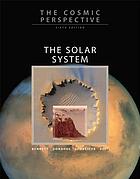 The Cosmic Perspective
by
Building on a long tradition of effective pedagogy and comprehensive coverage, The Cosmic Perspective , Sixth Edition provides the most engaging and up-to-date introduction to astronomy for non-science majors. The text provides a wealth of features to help enhance student skill building, including new Visual Skills Check end-of-chapter questions that provide an opportunity for students to test their visual interpretation skills, new Cosmic Context Figures that help students synthesize key concepts and processes, and a new comprehensive visual overview of scale to help students explore the scale of time and space. The Sixth Edition has also been fully updated to include the latest astronomical observations, research, and theoretical developments. The text is supported by the most robust package of instructor. Two volumes of this text are also available: The Cosmic Perspective: The Solar System, Sixth Edition (includes Chapters 1-13, 24) The Cosmic Perspective: Stars, Galaxies, and Cosmology, Sixth Edition (includes Chapters 1-6, S2-S4, 14-24)
The Cosmic Perspective
by
Building on a long tradition of effective pedagogy and comprehensive coverage, The Cosmic Perspective , Sixth Edition provides the most engaging and up-to-date introduction to astronomy for non-science majors. The text provides a wealth of features to help enhance student skill building, including new Visual Skills Check end-of-chapter questions that provide an opportunity for students to test their visual interpretation skills, new Cosmic Context Figures that help students synthesize key concepts and processes, and a new comprehensive visual overview of scale to help students explore the scale of time and space. The Sixth Edition has also been fully updated to include the latest astronomical observations, research, and theoretical developments. The text is supported by the most robust package of instructor. Two volumes of this text are also available: The Cosmic Perspective: The Solar System, Sixth Edition (includes Chapters 1-13, 24) The Cosmic Perspective: Stars, Galaxies, and Cosmology, Sixth Edition (includes Chapters 1-6, S2-S4, 14-24)
 A Guide to Backyard Astronomy: your guide to starhopping and exploring the universe
by
A complete, illustrated guide for amateur astronomers describes twenty telescope tours of some of the sky's most fascinating phenomena, as well as information on skywatching tools and equipment, celestial bodies and artificial satellites, constellations, and more.
A Guide to Backyard Astronomy: your guide to starhopping and exploring the universe
by
A complete, illustrated guide for amateur astronomers describes twenty telescope tours of some of the sky's most fascinating phenomena, as well as information on skywatching tools and equipment, celestial bodies and artificial satellites, constellations, and more.
 Ulughbek rasadkhonasi = Observatori︠︡ia Ulugbeka
by
Ulughbek rasadkhonasi = Observatori︠︡ia Ulugbeka
by
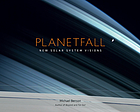 Planetfall: New Solar System Visions
by
Thanks to the photographic output of a small squadron of interplanetary spacecraft, we have awakened to the beauty and splendor of the solar system. Since Michael Benson's masterful book Beyond: Visions of the Interplanetary Probes, new, more powerful cameras in probes with greatly improved maneuverability have traversed the wheeling satellites of Jupiter; roamed the boulder-strewn red deserts of Mars; studied Saturn's immaculate rings; and shown us our own ravishing Earth, a blue-white orb with a disturbingly thin atmosphere, as it plunges deeper into ecological crisis. These new images are the subject of Benson's Planetfall, a truly revelatory book that uses its large page size to reproduce the greatest achievements in contemporary planetary photography as never before. Praise for Planetfall: "All retrospectives, art and otherwise, should shock us awake the way this one does . . . Planetfall is a book of science through and through, but it also deepens our sense of the miracle and the mystery of the universe, of our eye-blink lives." --The New York Times "This is the way I like to tour the solar system. Find a chair. Sit. Turn some pages. Gaze. Wonder." --NPR.com "Beautiful interplanetary images." --MSNBC.com "Beautiful visions of what's out there." --The Huffington Post "To encounter a Benson landscape is to be in awe of not only how he sees the universe, but also the ways in which he composes the never-ending celestial ballet." --Time.com
Planetfall: New Solar System Visions
by
Thanks to the photographic output of a small squadron of interplanetary spacecraft, we have awakened to the beauty and splendor of the solar system. Since Michael Benson's masterful book Beyond: Visions of the Interplanetary Probes, new, more powerful cameras in probes with greatly improved maneuverability have traversed the wheeling satellites of Jupiter; roamed the boulder-strewn red deserts of Mars; studied Saturn's immaculate rings; and shown us our own ravishing Earth, a blue-white orb with a disturbingly thin atmosphere, as it plunges deeper into ecological crisis. These new images are the subject of Benson's Planetfall, a truly revelatory book that uses its large page size to reproduce the greatest achievements in contemporary planetary photography as never before. Praise for Planetfall: "All retrospectives, art and otherwise, should shock us awake the way this one does . . . Planetfall is a book of science through and through, but it also deepens our sense of the miracle and the mystery of the universe, of our eye-blink lives." --The New York Times "This is the way I like to tour the solar system. Find a chair. Sit. Turn some pages. Gaze. Wonder." --NPR.com "Beautiful interplanetary images." --MSNBC.com "Beautiful visions of what's out there." --The Huffington Post "To encounter a Benson landscape is to be in awe of not only how he sees the universe, but also the ways in which he composes the never-ending celestial ballet." --Time.com
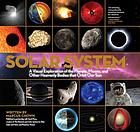 Solar System: a visual exploration of the planets, moons, and other heavenly bodies that orbit our sun
by
Take an astonishing visual journey through time and space with Solar System, a mesmerizing way to experience the magnitude of the universe through fascinating text, original graphics, and stunning photographs, some rarely- or never-before-seen. Never before have the wonders of our solar system been so immediately accessible to readers of all ages. Award-winning writer and broadcaster Marcus Chown combines science and history to visually and narratively explore our neighboring planets, dwarf planets, moons and asteroids, as well as all of the historical figures who aided in their discoveries. From the explosive surface of the sun to the frosty blue dunes on Mars; from the gargantuan rings of Saturn to the volcanoes of Io; from geological maps of bedrock on the Moon, to a simulation of what the Oort Cloud might look like, Solar System offers a window seat from which to view the beauty and magnificence of space.
Solar System: a visual exploration of the planets, moons, and other heavenly bodies that orbit our sun
by
Take an astonishing visual journey through time and space with Solar System, a mesmerizing way to experience the magnitude of the universe through fascinating text, original graphics, and stunning photographs, some rarely- or never-before-seen. Never before have the wonders of our solar system been so immediately accessible to readers of all ages. Award-winning writer and broadcaster Marcus Chown combines science and history to visually and narratively explore our neighboring planets, dwarf planets, moons and asteroids, as well as all of the historical figures who aided in their discoveries. From the explosive surface of the sun to the frosty blue dunes on Mars; from the gargantuan rings of Saturn to the volcanoes of Io; from geological maps of bedrock on the Moon, to a simulation of what the Oort Cloud might look like, Solar System offers a window seat from which to view the beauty and magnificence of space.
 The complete earth
by
Reproducing one of the most advanced satellite surveys of Earth in its entirety, The Complete Earth explores our planet, explaining the how and when of its mountain ranges, deserts, ice-sheets, volcanoes and oceans.
From pole to pole. The Complete Earth presents one of the most advanced portraits of our planet ever created Within these pages, data from NASA's most advanced Earth observing satellites has been combined to produce a cloud-free, digital atlas of the entire planet-a mappamundi for the Information Age.
At a scale of 53 kilometres to every centimetre (93 miles to an inch), we can trace the Amazon from Andean headwaters to Atlantic mouth, explore the trackless sand seas of the Sahara, and follow the corrugated ridges of hills and mountains that mark the front-line of India's continental collision with Eurasia. We can track the ebb and flow of seasons across the globe, watching snows fall in the North as they melt in the South and desert lands bloom and fade as rains come and go.
The complete earth
by
Reproducing one of the most advanced satellite surveys of Earth in its entirety, The Complete Earth explores our planet, explaining the how and when of its mountain ranges, deserts, ice-sheets, volcanoes and oceans.
From pole to pole. The Complete Earth presents one of the most advanced portraits of our planet ever created Within these pages, data from NASA's most advanced Earth observing satellites has been combined to produce a cloud-free, digital atlas of the entire planet-a mappamundi for the Information Age.
At a scale of 53 kilometres to every centimetre (93 miles to an inch), we can trace the Amazon from Andean headwaters to Atlantic mouth, explore the trackless sand seas of the Sahara, and follow the corrugated ridges of hills and mountains that mark the front-line of India's continental collision with Eurasia. We can track the ebb and flow of seasons across the globe, watching snows fall in the North as they melt in the South and desert lands bloom and fade as rains come and go.
 Метеоритные кратеры на Земле = Meteoritnye kratery na Zemle
by
Метеоритные кратеры на Земле = Meteoritnye kratery na Zemle
by
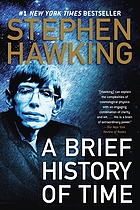 A Brief History of Time
by
#1 NEW YORK TIMES BESTSELLER Published more than two decades ago to great critical acclaim and commercial success, A Brief History of Time has become a landmark volume in science writing. Stephen Hawking, one of the great minds of our time, explores such profound questions as: How did the universe begin--and what made its start possible? Does time always flow forward? Is the universe unending--or are there boundaries? Are there other dimensions in space? What will happen when it all ends? Told in language we all can understand, A Brief History of Time plunges into the exotic realms of black holes and quarks, of antimatter and "arrows of time," of the big bang and a bigger God--where the possibilities are wondrous and unexpected. With exciting images and profound imagination, Stephen Hawking brings us closer to the ultimate secrets at the very heart of creation.
A Brief History of Time
by
#1 NEW YORK TIMES BESTSELLER Published more than two decades ago to great critical acclaim and commercial success, A Brief History of Time has become a landmark volume in science writing. Stephen Hawking, one of the great minds of our time, explores such profound questions as: How did the universe begin--and what made its start possible? Does time always flow forward? Is the universe unending--or are there boundaries? Are there other dimensions in space? What will happen when it all ends? Told in language we all can understand, A Brief History of Time plunges into the exotic realms of black holes and quarks, of antimatter and "arrows of time," of the big bang and a bigger God--where the possibilities are wondrous and unexpected. With exciting images and profound imagination, Stephen Hawking brings us closer to the ultimate secrets at the very heart of creation.
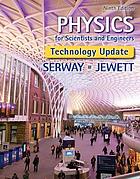 Physics for Scientists and Engineers, Technology Update
by
Achieve success in your physics course by making the most of what PHYSICS FOR SCIENTISTS AND ENGINEERS has to offer. From a host of in-text features to a range of outstanding technology resources, you'll have everything you need to understand the natural forces and principles of physics. Throughout every chapter, the authors have built in a wide range of examples, exercises, and illustrations that will help you understand the laws of physics AND succeed in your course!
Physics for Scientists and Engineers, Technology Update
by
Achieve success in your physics course by making the most of what PHYSICS FOR SCIENTISTS AND ENGINEERS has to offer. From a host of in-text features to a range of outstanding technology resources, you'll have everything you need to understand the natural forces and principles of physics. Throughout every chapter, the authors have built in a wide range of examples, exercises, and illustrations that will help you understand the laws of physics AND succeed in your course!
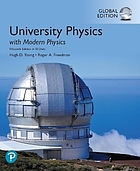 Sears and Zemansky's university physics : with modern physics
by
Guided practice helps students develop into expert problem solvers The new 15th Edition of University Physics with Modern Physics, now in SI Units, draws on insights from several users to help students see patterns and make connections between problem types. Students learn to recognize when to use similar steps in solving the same problem type and develop an understanding for problem solving approaches, rather than simply plugging values into an equation. This edition addresses students' tendency to focus on the objects and situations posed in a problem, rather than recognizing the underlying principle or the problem type. New Key Concept statements identify the main idea used in examples to help students recognize the underlying concepts and strategy. New Key Example Variation Problems within new Guided Practice sections group problems by type so students recognize when problems can be solved in similar ways, regardless of wording or numbers.
Sears and Zemansky's university physics : with modern physics
by
Guided practice helps students develop into expert problem solvers The new 15th Edition of University Physics with Modern Physics, now in SI Units, draws on insights from several users to help students see patterns and make connections between problem types. Students learn to recognize when to use similar steps in solving the same problem type and develop an understanding for problem solving approaches, rather than simply plugging values into an equation. This edition addresses students' tendency to focus on the objects and situations posed in a problem, rather than recognizing the underlying principle or the problem type. New Key Concept statements identify the main idea used in examples to help students recognize the underlying concepts and strategy. New Key Example Variation Problems within new Guided Practice sections group problems by type so students recognize when problems can be solved in similar ways, regardless of wording or numbers.
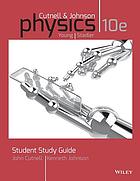 Student Study Guide to Accompany Physics, 10e
by
This is the Student Study Guide to accompany Physics, 10th Edition. Cutnell and Johnson's Physics has been the #1 text in the algebra-based physics market for almost 20 years. Physics, 10th Edition brings on new co-authors: David Young and Shane Stadler (both out of LSU). The Cutnell offering now includes enhanced features and functionality. The authors have been extensively involved in the creation and adaptation of valuable resources for the text. The 10th edition includes 160 New Chalkboard videos, guided online tutorials in every chapter, and vector drawing questions. All of these features are designed to encourage students to remain within the WileyPLUS environment, as opposed to pursuing the "pay-for-solutions" websites that short circuit the learning process.
Student Study Guide to Accompany Physics, 10e
by
This is the Student Study Guide to accompany Physics, 10th Edition. Cutnell and Johnson's Physics has been the #1 text in the algebra-based physics market for almost 20 years. Physics, 10th Edition brings on new co-authors: David Young and Shane Stadler (both out of LSU). The Cutnell offering now includes enhanced features and functionality. The authors have been extensively involved in the creation and adaptation of valuable resources for the text. The 10th edition includes 160 New Chalkboard videos, guided online tutorials in every chapter, and vector drawing questions. All of these features are designed to encourage students to remain within the WileyPLUS environment, as opposed to pursuing the "pay-for-solutions" websites that short circuit the learning process.
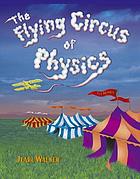 The Flying Circus of Physics
by
Hurry! Hurry! Come one, come all. Meet a man who can pull two railroad passenger cars with his teeth and a real-life human cannon ball. Come face to face with a dead rattlesnake that still bites. And unlock the secrets of a magician's bodiless head. Welcome to this updated edition of The Flying Circus of Physics, where death-defying stunts, high-flying acrobatics, strange curiosities, and mind-bending illusions bring to life the fascinating feats of physics in the world around us. In 1977, Wiley published the first edition of Jearl Walker's The Flying Circus of Physics, which has sold over 100,000 copies and become a cult classic in the physics community. The Flying Circus is a compendium of interesting real world phenomena that can be explained using basic laws of physics. This new edition represents a thorough updating and modernization of the book. The new edition gives us the opportunity to highlight Jearl's creativity, his communication skills, and his ability to make physics interesting. Jearl Walker, Ph.D., professor of physics at Cleveland State University and the man who frequently walked on hot coals and lay on beds of nails all in the name of science, is the first recipient of the Outstanding Teaching Award from Cleveland State's College of Science. The College's Faculty Affairs Committee selected Dr. Walker as the first honoree based on his impressive contributions to science teaching over the last 30 years. In fact, the award in future years will be named the Jearl Walker Outstanding Teaching Award in recognition of his many achievements. Jearl Walker received his B.S. in physics from MIT in 1967 and his Ph.D. in physics from the University of Maryland in 1973. His popular book, The Flying Circus of Physics, has been translated into at least 10 languages and is still being sold worldwide. For 16 years he toured his fun-filled Flying Circus lecture throughout the U.S. and Canada, introducing countless teachers to such physics phenomena as molecular adhesion by hanging spoons from his face and Leidenfrost's phenomenon by dipping his wet hand in molten lead without getting hurt. These lectures led to his national PBS television show, Kinetic Karnival, which ran for several years and won him a local Emmy Award. During his 13 years as a columnist with Scientific American magazine, Dr. Walker wrote 152 articles for "The Amateur Scientist" section, which were translated into at least 9 languages worldwide. His topics ranged from the physics of judo to the physics of bearnaise sauce and lemon meringue pie. In 1990, he took over the textbook Fundamentals of Physics from David Halliday and Robert Resnick and has now published the seventh edition of the book. He has appeared countless times on television and radio and in newspapers and magazines.
The Flying Circus of Physics
by
Hurry! Hurry! Come one, come all. Meet a man who can pull two railroad passenger cars with his teeth and a real-life human cannon ball. Come face to face with a dead rattlesnake that still bites. And unlock the secrets of a magician's bodiless head. Welcome to this updated edition of The Flying Circus of Physics, where death-defying stunts, high-flying acrobatics, strange curiosities, and mind-bending illusions bring to life the fascinating feats of physics in the world around us. In 1977, Wiley published the first edition of Jearl Walker's The Flying Circus of Physics, which has sold over 100,000 copies and become a cult classic in the physics community. The Flying Circus is a compendium of interesting real world phenomena that can be explained using basic laws of physics. This new edition represents a thorough updating and modernization of the book. The new edition gives us the opportunity to highlight Jearl's creativity, his communication skills, and his ability to make physics interesting. Jearl Walker, Ph.D., professor of physics at Cleveland State University and the man who frequently walked on hot coals and lay on beds of nails all in the name of science, is the first recipient of the Outstanding Teaching Award from Cleveland State's College of Science. The College's Faculty Affairs Committee selected Dr. Walker as the first honoree based on his impressive contributions to science teaching over the last 30 years. In fact, the award in future years will be named the Jearl Walker Outstanding Teaching Award in recognition of his many achievements. Jearl Walker received his B.S. in physics from MIT in 1967 and his Ph.D. in physics from the University of Maryland in 1973. His popular book, The Flying Circus of Physics, has been translated into at least 10 languages and is still being sold worldwide. For 16 years he toured his fun-filled Flying Circus lecture throughout the U.S. and Canada, introducing countless teachers to such physics phenomena as molecular adhesion by hanging spoons from his face and Leidenfrost's phenomenon by dipping his wet hand in molten lead without getting hurt. These lectures led to his national PBS television show, Kinetic Karnival, which ran for several years and won him a local Emmy Award. During his 13 years as a columnist with Scientific American magazine, Dr. Walker wrote 152 articles for "The Amateur Scientist" section, which were translated into at least 9 languages worldwide. His topics ranged from the physics of judo to the physics of bearnaise sauce and lemon meringue pie. In 1990, he took over the textbook Fundamentals of Physics from David Halliday and Robert Resnick and has now published the seventh edition of the book. He has appeared countless times on television and radio and in newspapers and magazines.
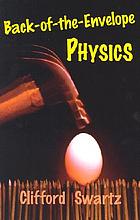 Back-of-the-Envelope Physics
by
The author is the winner of the 2007 Melba Newell Phillips Award given by the American Association of Physics Teachers. Previously, he was awarded their Oersted Medal. Physicists use "back-of-the-envelope" estimates to check whether or not an idea could possibly be right. In many cases, the approximate solution is all that is needed. This compilation of 101 examples of back-of-the-envelope calculations celebrates a quantitative approach to solving physics problems. Drawing on a lifetime of physics research and nearly three decades as the editor of The Physics Teacher, Clifford Swartz provides simple, approximate solutions to physics problems that span a broad range of topics. What note do you get when you blow across the top of a Coke bottle? Could you lose weight on a diet of ice cubes? How can a fakir lie on a bed of nails without getting hurt? Does draining water in the northern hemisphere really swirl in a different direction than its counterpart below the equator? In each case, only a few lines of arithmetic and a few natural constants solve a problem to within a few percent. Covering such subjects as astronomy, magnetism, optics, sound, heat, mechanics, waves, and electricity, the book provides a rich source of material for teachers and anyone interested in the physics of everyday life.
Back-of-the-Envelope Physics
by
The author is the winner of the 2007 Melba Newell Phillips Award given by the American Association of Physics Teachers. Previously, he was awarded their Oersted Medal. Physicists use "back-of-the-envelope" estimates to check whether or not an idea could possibly be right. In many cases, the approximate solution is all that is needed. This compilation of 101 examples of back-of-the-envelope calculations celebrates a quantitative approach to solving physics problems. Drawing on a lifetime of physics research and nearly three decades as the editor of The Physics Teacher, Clifford Swartz provides simple, approximate solutions to physics problems that span a broad range of topics. What note do you get when you blow across the top of a Coke bottle? Could you lose weight on a diet of ice cubes? How can a fakir lie on a bed of nails without getting hurt? Does draining water in the northern hemisphere really swirl in a different direction than its counterpart below the equator? In each case, only a few lines of arithmetic and a few natural constants solve a problem to within a few percent. Covering such subjects as astronomy, magnetism, optics, sound, heat, mechanics, waves, and electricity, the book provides a rich source of material for teachers and anyone interested in the physics of everyday life.
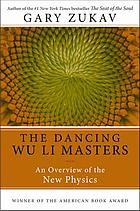 Dancing Wu Li Masters
by
Explores the history and concepts of physics, including quantum mechanics and relativity theory, within the framework of Eastern thought to unravel the mysteries of the physical universe.
Dancing Wu Li Masters
by
Explores the history and concepts of physics, including quantum mechanics and relativity theory, within the framework of Eastern thought to unravel the mysteries of the physical universe.
 The Art of Insight in Science and Engineering
by
Tools to make hard problems easier to solve.In this book, Sanjoy Mahajan shows us that the way to master complexity is through insight rather than precision. Precision can overwhelm us with information, whereas insight connects seemingly disparate pieces of information into a simple picture. Unlike computers, humans depend on insight. Based on the author's fifteen years of teaching at MIT, Cambridge University, and Olin College, The Art of Insight in Science and Engineering shows us how to build insight and find understanding, giving readers tools to help them solve any problem in science and engineering. To master complexity, we can organize it or discard it. The Art of Insight in Science and Engineering first teaches the tools for organizing complexity, then distinguishes the two paths for discarding complexity- with and without loss of information. Questions and problems throughout the text help readers master and apply these groups of tools. Armed with this three-part toolchest, and without complicated mathematics, readers can estimate the flight range of birds and planes and the strength of chemical bonds, understand the physics of pianos and xylophones, and explain why skies are blue and sunsets are red. The Art of Insight in Science and Engineering will appear in print and online under a Creative Commons Noncommercial Share Alike license.
The Art of Insight in Science and Engineering
by
Tools to make hard problems easier to solve.In this book, Sanjoy Mahajan shows us that the way to master complexity is through insight rather than precision. Precision can overwhelm us with information, whereas insight connects seemingly disparate pieces of information into a simple picture. Unlike computers, humans depend on insight. Based on the author's fifteen years of teaching at MIT, Cambridge University, and Olin College, The Art of Insight in Science and Engineering shows us how to build insight and find understanding, giving readers tools to help them solve any problem in science and engineering. To master complexity, we can organize it or discard it. The Art of Insight in Science and Engineering first teaches the tools for organizing complexity, then distinguishes the two paths for discarding complexity- with and without loss of information. Questions and problems throughout the text help readers master and apply these groups of tools. Armed with this three-part toolchest, and without complicated mathematics, readers can estimate the flight range of birds and planes and the strength of chemical bonds, understand the physics of pianos and xylophones, and explain why skies are blue and sunsets are red. The Art of Insight in Science and Engineering will appear in print and online under a Creative Commons Noncommercial Share Alike license.
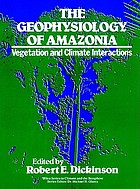 The Geophysiology of Amazonia : vegetation and climate interactions
by
Results of the International Conference on Climatic, Biotic, and Human Interactions in the Humid Tropics with Emphasis on the Vegetation and Climatic Interactions in Amazonia, convened by the United Nations University at the Instituto de Pesquisas Espaciais in São José dos Campos, Brazil, Feb. 25-Mar. 1, 1985.
The Geophysiology of Amazonia : vegetation and climate interactions
by
Results of the International Conference on Climatic, Biotic, and Human Interactions in the Humid Tropics with Emphasis on the Vegetation and Climatic Interactions in Amazonia, convened by the United Nations University at the Instituto de Pesquisas Espaciais in São José dos Campos, Brazil, Feb. 25-Mar. 1, 1985.
 Global change and mountain regions : an overview of current knowledge
by
Paleoenvironmental Changes -- Cryospheric Changes -- Hydrological Changes -- Ecological Changes -- Human Dimensions
Global change and mountain regions : an overview of current knowledge
by
Paleoenvironmental Changes -- Cryospheric Changes -- Hydrological Changes -- Ecological Changes -- Human Dimensions
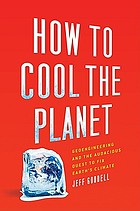 How to Cool the Planet: geoengineering and the audacious quest to fix earth's climate
by
Right now, a group of scientists is working on ways to minimize the catastrophic impact of global warming. But they're not designing hybrids or fuel cells or wind turbines. They're trying to lower the temperature of the entire planet. And they're doing it with huge contraptions that suck CO2 from the air, machines that brighten clouds and deflect sunlight away from the earth, even artificial volcanoes that spray heat-reflecting particles into the atmosphere. This is the radical and controversial world of geoengineering, which only five years ago was considered to be "fringe." But as Jeff Goodell points out, the economic crisis, combined with global political realities, is making these ideas look sane, even inspired. Goodell himself started out as a skeptic, concerned about tinkering with the planet's thermostat. We can't even predict next week's weather, so how are we going to change the temperature of whole regions? What if a wealthy entrepreneur shoots particles into the stratosphere on his own? Who gets blamed if something goes terribly wrong? And perhaps most disturbing, what about wars waged with climate control as the primary weapon? There are certainly risks, but Goodell believes the alternatives could be worse. In the end, he persuades us that geoengineering may just be our last best hope--a Plan B for the environment. His compelling tale of scientific hubris and technical daring is sure to jump-start the next big debate about the future of life on earth.
How to Cool the Planet: geoengineering and the audacious quest to fix earth's climate
by
Right now, a group of scientists is working on ways to minimize the catastrophic impact of global warming. But they're not designing hybrids or fuel cells or wind turbines. They're trying to lower the temperature of the entire planet. And they're doing it with huge contraptions that suck CO2 from the air, machines that brighten clouds and deflect sunlight away from the earth, even artificial volcanoes that spray heat-reflecting particles into the atmosphere. This is the radical and controversial world of geoengineering, which only five years ago was considered to be "fringe." But as Jeff Goodell points out, the economic crisis, combined with global political realities, is making these ideas look sane, even inspired. Goodell himself started out as a skeptic, concerned about tinkering with the planet's thermostat. We can't even predict next week's weather, so how are we going to change the temperature of whole regions? What if a wealthy entrepreneur shoots particles into the stratosphere on his own? Who gets blamed if something goes terribly wrong? And perhaps most disturbing, what about wars waged with climate control as the primary weapon? There are certainly risks, but Goodell believes the alternatives could be worse. In the end, he persuades us that geoengineering may just be our last best hope--a Plan B for the environment. His compelling tale of scientific hubris and technical daring is sure to jump-start the next big debate about the future of life on earth.
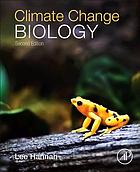 Climate Change Biology
by
Climate Change Biology, 2e examines the evolving discipline of human-induced climate change and the resulting shifts in the distributions of species and the timing of biological events. The text focuses on understanding the impacts of human-induced climate change by drawing on multiple lines of evidence, including paleoecology, modeling, and current observation. This revised and updated second edition emphasizes impacts of human adaptation to climate change on nature and greater emphasis on natural processes and cycles and specific elements. With four new chapters, an increased emphasis on tools for critical thinking, and a new glossary and acronym appendix, Climate Change Biology, 2e is the ideal overview of this field.
Climate Change Biology
by
Climate Change Biology, 2e examines the evolving discipline of human-induced climate change and the resulting shifts in the distributions of species and the timing of biological events. The text focuses on understanding the impacts of human-induced climate change by drawing on multiple lines of evidence, including paleoecology, modeling, and current observation. This revised and updated second edition emphasizes impacts of human adaptation to climate change on nature and greater emphasis on natural processes and cycles and specific elements. With four new chapters, an increased emphasis on tools for critical thinking, and a new glossary and acronym appendix, Climate Change Biology, 2e is the ideal overview of this field.
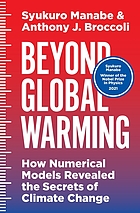 Beyond Global Warming : how numerical models revealed the secrets of climate change
by
From Nobel Prize winner Syukuro Manabe and Anthony Broccoli, a definitive account of how we have come to understand the fundamental processes behind global warming Syukuro Manabe is perhaps the leading pioneer of modern climate modeling. Beyond Global Warming is his compelling firsthand account of how the scientific community came to understand the human causes of climate change, and how numerical models using the world's most powerful computers have been instrumental to these vital discoveries. Joined by atmospheric scientist Anthony Broccoli, Manabe shows how climate models have been used as virtual laboratories for examining the complex planetary interactions of atmosphere, ocean, and land. Manabe and Broccoli use these studies as the basis for a broader discussion of human-induced global warming--and what the future may hold for a warming planet. They tell the stories of early trailblazers such as Svante Arrhenius, the legendary Swedish scientist who created the first climate model of Earth more than a century ago, and they provide rare insights into Manabe's own groundbreaking work over the past five decades. Expertly walking readers through key breakthroughs, they explain why increasing atmospheric carbon dioxide has caused temperatures to rise in the troposphere yet fall in the stratosphere, why the warming of the planet's surface differs by hemisphere, why drought is becoming more frequent in arid regions despite the global increase in precipitation, and much more. Authoritative and illuminating, Beyond Global Warming is an invaluable insider's look at some of today's most cutting-edge Earth science, and a rare window into a brilliant scientific mind.
Beyond Global Warming : how numerical models revealed the secrets of climate change
by
From Nobel Prize winner Syukuro Manabe and Anthony Broccoli, a definitive account of how we have come to understand the fundamental processes behind global warming Syukuro Manabe is perhaps the leading pioneer of modern climate modeling. Beyond Global Warming is his compelling firsthand account of how the scientific community came to understand the human causes of climate change, and how numerical models using the world's most powerful computers have been instrumental to these vital discoveries. Joined by atmospheric scientist Anthony Broccoli, Manabe shows how climate models have been used as virtual laboratories for examining the complex planetary interactions of atmosphere, ocean, and land. Manabe and Broccoli use these studies as the basis for a broader discussion of human-induced global warming--and what the future may hold for a warming planet. They tell the stories of early trailblazers such as Svante Arrhenius, the legendary Swedish scientist who created the first climate model of Earth more than a century ago, and they provide rare insights into Manabe's own groundbreaking work over the past five decades. Expertly walking readers through key breakthroughs, they explain why increasing atmospheric carbon dioxide has caused temperatures to rise in the troposphere yet fall in the stratosphere, why the warming of the planet's surface differs by hemisphere, why drought is becoming more frequent in arid regions despite the global increase in precipitation, and much more. Authoritative and illuminating, Beyond Global Warming is an invaluable insider's look at some of today's most cutting-edge Earth science, and a rare window into a brilliant scientific mind.
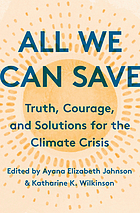 All We Can Save : truth, courage, and solutions for the climate crisis
by
NATIONAL BESTSELLER . Provocative and illuminating essays from women at the forefront of the climate movement who are harnessing truth, courage, and solutions to lead humanity forward. "A powerful read that fills one with, dare I say . . . hope?"-The New York Times NAMED ONE OF THE BEST BOOKS OF THE YEAR BY SMITHSONIAN MAGAZINE There is a renaissance blooming in the climate movement- leadership that is more characteristically feminine and more faithfully feminist, rooted in compassion, connection, creativity, and collaboration. While it's clear that women and girls are vital voices and agents of change for this planet, they are too often missing from the proverbial table. More than a problem of bias, it's a dynamic that sets us up for failure. To change everything, we need everyone. All We Can Save illuminates the expertise and insights of dozens of diverse women leading on climate in the United States-scientists, journalists, farmers, lawyers, teachers, activists, innovators, wonks, and designers, across generations, geographies, and race-and aims to advance a more representative, nuanced, and solution-oriented public conversation on the climate crisis. These women offer a spectrum of ideas and insights for how we can rapidly, radically reshape society. Intermixing essays with poetry and art, this book is both a balm and a guide for knowing and holding what has been done to the world, while bolstering our resolve never to give up on one another or our collective future. We must summon truth, courage, and solutions to turn away from the brink and toward life-giving possibility. Curated by two climate leaders, the book is a collection and celebration of visionaries who are leading us on a path toward all we can save. With essays and poems by- Emily Atkin .Xiye Bastida .Ellen Bass.Colette Pichon Battle .Jainey K. Bavishi .Janine Benyus .adrienne maree brown .Regine Clement .Abigail Dillen .Camille T. Dungy .Rhiana Gunn-Wright .Joy Harjo .Katharine Hayhoe .Mary Annaise Heglar .Jane Hirshfield . Mary Anne Hitt .Ailish Hopper.Tara Houska, Zhaabowekwe .Emily N. Johnston .Joan Naviyuk Kane .Naomi Klein .Kate Knuth .Ada Lim n .Louise Maher-Johnson .Kate Marvel .Gina McCarthy .Anne Haven McDonnell. Sarah Miller .Sherri Mitchell, Weh'na Ha'mu Kwasset .Susanne C. Moser .Lynna Odel.Sharon Olds.Mary Oliver .Kate Orff .Jacqui Patterson .Leah Penniman .Catherine Pierce . Marge Piercy .Kendra Pierre-Louis .Varshini . Prakash .Janisse Ray .Christine E. Nieves Rodriguez .Favianna Rodriguez .Cameron Russell .Ash Sanders .Judith D. Schwartz .Patricia Smith . Emily Stengel .Sarah Stillman .Leah Cardamore Stokes .Amanda Sturgeon .Maggie Thomas .Heather McTeer Toney .Alexandria Villasenor .Alice Walker. Amy Westervelt .Jane Zelikova
All We Can Save : truth, courage, and solutions for the climate crisis
by
NATIONAL BESTSELLER . Provocative and illuminating essays from women at the forefront of the climate movement who are harnessing truth, courage, and solutions to lead humanity forward. "A powerful read that fills one with, dare I say . . . hope?"-The New York Times NAMED ONE OF THE BEST BOOKS OF THE YEAR BY SMITHSONIAN MAGAZINE There is a renaissance blooming in the climate movement- leadership that is more characteristically feminine and more faithfully feminist, rooted in compassion, connection, creativity, and collaboration. While it's clear that women and girls are vital voices and agents of change for this planet, they are too often missing from the proverbial table. More than a problem of bias, it's a dynamic that sets us up for failure. To change everything, we need everyone. All We Can Save illuminates the expertise and insights of dozens of diverse women leading on climate in the United States-scientists, journalists, farmers, lawyers, teachers, activists, innovators, wonks, and designers, across generations, geographies, and race-and aims to advance a more representative, nuanced, and solution-oriented public conversation on the climate crisis. These women offer a spectrum of ideas and insights for how we can rapidly, radically reshape society. Intermixing essays with poetry and art, this book is both a balm and a guide for knowing and holding what has been done to the world, while bolstering our resolve never to give up on one another or our collective future. We must summon truth, courage, and solutions to turn away from the brink and toward life-giving possibility. Curated by two climate leaders, the book is a collection and celebration of visionaries who are leading us on a path toward all we can save. With essays and poems by- Emily Atkin .Xiye Bastida .Ellen Bass.Colette Pichon Battle .Jainey K. Bavishi .Janine Benyus .adrienne maree brown .Regine Clement .Abigail Dillen .Camille T. Dungy .Rhiana Gunn-Wright .Joy Harjo .Katharine Hayhoe .Mary Annaise Heglar .Jane Hirshfield . Mary Anne Hitt .Ailish Hopper.Tara Houska, Zhaabowekwe .Emily N. Johnston .Joan Naviyuk Kane .Naomi Klein .Kate Knuth .Ada Lim n .Louise Maher-Johnson .Kate Marvel .Gina McCarthy .Anne Haven McDonnell. Sarah Miller .Sherri Mitchell, Weh'na Ha'mu Kwasset .Susanne C. Moser .Lynna Odel.Sharon Olds.Mary Oliver .Kate Orff .Jacqui Patterson .Leah Penniman .Catherine Pierce . Marge Piercy .Kendra Pierre-Louis .Varshini . Prakash .Janisse Ray .Christine E. Nieves Rodriguez .Favianna Rodriguez .Cameron Russell .Ash Sanders .Judith D. Schwartz .Patricia Smith . Emily Stengel .Sarah Stillman .Leah Cardamore Stokes .Amanda Sturgeon .Maggie Thomas .Heather McTeer Toney .Alexandria Villasenor .Alice Walker. Amy Westervelt .Jane Zelikova
 Радиоактивные изотопы и глобальный перенос в атмосфере
by
Радиоактивные изотопы и глобальный перенос в атмосфере
by
 Climate Analysis
by
Sensational images and stories about variations in Earth's climate and their impacts on society are pervasive in the media. The scientific basis for these stories is often not understood by the general public, nor even by those with a scientific background in fields other than climate science. This book is a comprehensive resource that will enable the reader to understand and appreciate the significance of the flood of climate information. It is an excellent non-mathematical resource for learning the fundamentals of climate analysis, as well as a reference for non-climate experts that need to use climate information and data. The focus is on the basics of the climate system, how climate is observed and how the observations are transformed into datasets useful for monitoring the climate. Each chapter contains Discussion Questions. This is an invaluable textbook on climate analysis for advanced students, and a reference textbook for researchers and practitioners.
Climate Analysis
by
Sensational images and stories about variations in Earth's climate and their impacts on society are pervasive in the media. The scientific basis for these stories is often not understood by the general public, nor even by those with a scientific background in fields other than climate science. This book is a comprehensive resource that will enable the reader to understand and appreciate the significance of the flood of climate information. It is an excellent non-mathematical resource for learning the fundamentals of climate analysis, as well as a reference for non-climate experts that need to use climate information and data. The focus is on the basics of the climate system, how climate is observed and how the observations are transformed into datasets useful for monitoring the climate. Each chapter contains Discussion Questions. This is an invaluable textbook on climate analysis for advanced students, and a reference textbook for researchers and practitioners.
 Statistics and Data Visualization in Climate Science with R and Python
by
A comprehensive overview of essential statistical concepts, useful statistical methods, data visualization, and modern computing tools for the climate sciences and many others such as geography and environmental engineering. It is an invaluable reference for students and researchers in climatology and its connected fields who wish to learn data science, statistics, R and Python programming. The examples and exercises in the book empower readers to work on real climate data from station observations, remote sensing and simulated results. For example, students can use R or Python code to read and plot the global warming data and the global precipitation data in netCDF, csv, txt, or JSON; and compute and interpret empirical orthogonal functions. The book's computer code and real-world data allow readers to fully utilize the modern computing technology and updated datasets. Online supplementary resources include R code and Python code, data files, figure files, tutorials, slides and sample syllabi.
Statistics and Data Visualization in Climate Science with R and Python
by
A comprehensive overview of essential statistical concepts, useful statistical methods, data visualization, and modern computing tools for the climate sciences and many others such as geography and environmental engineering. It is an invaluable reference for students and researchers in climatology and its connected fields who wish to learn data science, statistics, R and Python programming. The examples and exercises in the book empower readers to work on real climate data from station observations, remote sensing and simulated results. For example, students can use R or Python code to read and plot the global warming data and the global precipitation data in netCDF, csv, txt, or JSON; and compute and interpret empirical orthogonal functions. The book's computer code and real-world data allow readers to fully utilize the modern computing technology and updated datasets. Online supplementary resources include R code and Python code, data files, figure files, tutorials, slides and sample syllabi.
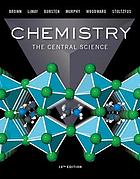 Chemistry : the central science
by
Matter, Energy, and Measurement, Atoms, Molecules, Ions -- 3. Chemical Reactions and Reaction Stoichiometry -- 4. Reactions in Aqueous Solution -- 5. Thermochemistry -- 6. Electronic Structure of Atoms -- 7. Periodic Properties of the Elements -- 8. Basic Concepts of Chemical Bonding -- 9. Molecular Geometry and Bonding Theories -- 10. Gases -- 11. Liquids and Intermolecular Forces -- 12. Solids and Modern Materials -- 13. Properties of Solutions -- 14. Chemical Kinetics -- 15. Chemical Equilibrium -- Acid-Base Equilibria -- 17. Additional Aspects of Aqueous Equilibria -- 18. chemistry of the Environment -- 19. Chemical Thermodynamics -- 20. Electrochemistry -- 21. Nuclear Chemistry -- 22. Chemistry of the Nonmetals -- 23. Transition Metals and Coordination Chemistry -- 24. The Chemistry of life: Organic and Biological Chemistry -- Appendices
Chemistry : the central science
by
Matter, Energy, and Measurement, Atoms, Molecules, Ions -- 3. Chemical Reactions and Reaction Stoichiometry -- 4. Reactions in Aqueous Solution -- 5. Thermochemistry -- 6. Electronic Structure of Atoms -- 7. Periodic Properties of the Elements -- 8. Basic Concepts of Chemical Bonding -- 9. Molecular Geometry and Bonding Theories -- 10. Gases -- 11. Liquids and Intermolecular Forces -- 12. Solids and Modern Materials -- 13. Properties of Solutions -- 14. Chemical Kinetics -- 15. Chemical Equilibrium -- Acid-Base Equilibria -- 17. Additional Aspects of Aqueous Equilibria -- 18. chemistry of the Environment -- 19. Chemical Thermodynamics -- 20. Electrochemistry -- 21. Nuclear Chemistry -- 22. Chemistry of the Nonmetals -- 23. Transition Metals and Coordination Chemistry -- 24. The Chemistry of life: Organic and Biological Chemistry -- Appendices
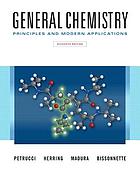 General Chemistry: principles and modern applications
by
The most trusted general chemistry text in Canada is back in a thoroughly revised 11th edition. General Chemistry: Principles and Modern Applications, is the most trusted book on the market recognized for its superior problems, lucid writing, and precision of argument and precise and detailed and treatment of the subject. The 11th edition offers enhanced hallmark features, new innovations and revised discussions that that respond to key market needs for detailed and modern treatment of organic chemistry, embracing the power of visual learning and conquering the challenges of effective problem solving and assessment. Note: You are purchasing a standalone product; MasteringChemistry does not come packaged with this content. Students, if interested in purchasing this title with MasteringChemistry, ask your instructor for the correct package ISBN and Course ID. Instructors, contact your Pearson representative for more information. If you would like to purchase both the physical text and MasteringChemistry, search for: 0134097327 / 9780134097329 General Chemistry: Principles and Modern Applications Plus MasteringChemistry with Pearson eText -- Access Card Package, 11/e Package consists of: 0132931281 / 9780132931281 General Chemistry: Principles and Modern Applications 0133387917 / 9780133387919 Study Card for General Chemistry: Principles and Modern Applications 0133387801 / 9780133387803 MasteringChemistry with Pearson eText -- Valuepack Access Card -- for General Chemistry: Principles and Modern Applications
General Chemistry: principles and modern applications
by
The most trusted general chemistry text in Canada is back in a thoroughly revised 11th edition. General Chemistry: Principles and Modern Applications, is the most trusted book on the market recognized for its superior problems, lucid writing, and precision of argument and precise and detailed and treatment of the subject. The 11th edition offers enhanced hallmark features, new innovations and revised discussions that that respond to key market needs for detailed and modern treatment of organic chemistry, embracing the power of visual learning and conquering the challenges of effective problem solving and assessment. Note: You are purchasing a standalone product; MasteringChemistry does not come packaged with this content. Students, if interested in purchasing this title with MasteringChemistry, ask your instructor for the correct package ISBN and Course ID. Instructors, contact your Pearson representative for more information. If you would like to purchase both the physical text and MasteringChemistry, search for: 0134097327 / 9780134097329 General Chemistry: Principles and Modern Applications Plus MasteringChemistry with Pearson eText -- Access Card Package, 11/e Package consists of: 0132931281 / 9780132931281 General Chemistry: Principles and Modern Applications 0133387917 / 9780133387919 Study Card for General Chemistry: Principles and Modern Applications 0133387801 / 9780133387803 MasteringChemistry with Pearson eText -- Valuepack Access Card -- for General Chemistry: Principles and Modern Applications
 Chemistry : a molecular approach
by
Offering a rigorous and accessible treatment of general chemistry in the context of relevance, this text helps students to see the connections among the formulas (symbolic), the world around them (macroscopic) and the atoms and molecules that make up the world (molecular). For courses in Chemistry. Building 21stCentury Data Analysis and Problem-Solving Skills in Modern Chemistry TheFourth EditionofNiva Tro'sChemistry: A Molecular Approachreinforces students' development of 21stcentury skills including data interpretation and analysis, problem solving and quantitative reasoning, applying conceptual understanding to new situations and peer-to-peer collaboration. Nivaldo Tro presents chemistry visually through multi-level images-macroscopic, molecular, and symbolic representations-helping students see the connections between the world they see around them (macroscopic), the atoms and molecules that compose the world (molecular), and the formulas they write down on paper (symbolic). The benefits of Dr. Tro's problem-solving approach are reinforced through digital, Interactive Worked Examples that provide students with an office-hour type of environment and expanded coverage on the latest developments in chemistry. New Key Concept Videos explain difficult concepts while new end-of-chapter problems including Group Work questions and Data Interpretation and Analysis questions engage students in applying their understanding of chemistry. The revision has been constructed to easily incorporate material for instructors and students to engage in Before, During, and After class activities
Chemistry : a molecular approach
by
Offering a rigorous and accessible treatment of general chemistry in the context of relevance, this text helps students to see the connections among the formulas (symbolic), the world around them (macroscopic) and the atoms and molecules that make up the world (molecular). For courses in Chemistry. Building 21stCentury Data Analysis and Problem-Solving Skills in Modern Chemistry TheFourth EditionofNiva Tro'sChemistry: A Molecular Approachreinforces students' development of 21stcentury skills including data interpretation and analysis, problem solving and quantitative reasoning, applying conceptual understanding to new situations and peer-to-peer collaboration. Nivaldo Tro presents chemistry visually through multi-level images-macroscopic, molecular, and symbolic representations-helping students see the connections between the world they see around them (macroscopic), the atoms and molecules that compose the world (molecular), and the formulas they write down on paper (symbolic). The benefits of Dr. Tro's problem-solving approach are reinforced through digital, Interactive Worked Examples that provide students with an office-hour type of environment and expanded coverage on the latest developments in chemistry. New Key Concept Videos explain difficult concepts while new end-of-chapter problems including Group Work questions and Data Interpretation and Analysis questions engage students in applying their understanding of chemistry. The revision has been constructed to easily incorporate material for instructors and students to engage in Before, During, and After class activities
 Principles of general chemistry
by
Offers students coverage of general chemistry content with minimal emphasis on pedagogic learning aids
Principles of general chemistry
by
Offers students coverage of general chemistry content with minimal emphasis on pedagogic learning aids
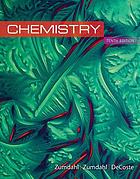 Chemistry
by
Learn the skills you need to succeed in your chemistry course with CHEMISTRY, Tenth Edition. This trusted text has helped generations of students learn to �think like chemists� and develop problem-solving skills needed to master even the most challenging problems. Clear explanations and interactive examples help you build confidence for the exams, so that you can study to understand rather than simply memorize. Combined with the online resources and instant feedback in OWLv2, you�ll be on your way to developing a deeper understanding of chemistry concepts and solving complex problems in all aspects of your life.
Chemistry
by
Learn the skills you need to succeed in your chemistry course with CHEMISTRY, Tenth Edition. This trusted text has helped generations of students learn to �think like chemists� and develop problem-solving skills needed to master even the most challenging problems. Clear explanations and interactive examples help you build confidence for the exams, so that you can study to understand rather than simply memorize. Combined with the online resources and instant feedback in OWLv2, you�ll be on your way to developing a deeper understanding of chemistry concepts and solving complex problems in all aspects of your life.
 Chemistry: the Molecular Nature of Matter and Change
by
Chemistry: The Molecular Nature of Matter and Change by Martin Silberberg has been recognized in the general chemistry market as an unparalleled classic. The seventh edition keeps pace with the evolution of student learning by adding and significantly enhancing sample problems, a key resource of students. The text still contains unprecedented macroscopic-to-microscopic molecular illustrations, consistent step-by-step worked exercises in every chapter, and an extensive range of end-of-chapter problems, which provide engaging applications covering a wide variety of interests, including engineering, medicine, materials, and environmental studies. Changes have been made to the text and applications throughout to make them more succinct, to the artwork to make it more teachable and modern, and to the design to make it more simplistic and open.
Chemistry: the Molecular Nature of Matter and Change
by
Chemistry: The Molecular Nature of Matter and Change by Martin Silberberg has been recognized in the general chemistry market as an unparalleled classic. The seventh edition keeps pace with the evolution of student learning by adding and significantly enhancing sample problems, a key resource of students. The text still contains unprecedented macroscopic-to-microscopic molecular illustrations, consistent step-by-step worked exercises in every chapter, and an extensive range of end-of-chapter problems, which provide engaging applications covering a wide variety of interests, including engineering, medicine, materials, and environmental studies. Changes have been made to the text and applications throughout to make them more succinct, to the artwork to make it more teachable and modern, and to the design to make it more simplistic and open.
 Environmental Chemistry
by
With clear explanations, real-world examples and updated ancillary material, the 11th edition of Environmental Chemistry emphasizes the concepts essential to the practice of environmental science, technology and chemistry. The format and organization popular in preceding editions is used, including an approach based upon the five environmental spheres and the relationship of environmental chemistry to the key concepts of sustainability, industrial ecology and green chemistry. The new edition provides a comprehensive view of key environmental issues, and significantly looks at diseases and pandemics as an environmental problem influenced by other environmental concerns like climate change. Features: The most trusted and best-selling text for environmental chemistry has been fully updated and expanded once again The author has preserved the basic format with appropriate updates including a comprehensive overview of key environmental issues and concerns New to this important text is material on the threat of pathogens and disease, deadly past pandemics that killed millions, recently emerged diseases and the prospects for more environment threats related to disease This outstanding legacy appeals to a wide audience and can also be an ideal interdisciplinary book for graduate students with degrees in a variety of disciplines other than chemistry
Environmental Chemistry
by
With clear explanations, real-world examples and updated ancillary material, the 11th edition of Environmental Chemistry emphasizes the concepts essential to the practice of environmental science, technology and chemistry. The format and organization popular in preceding editions is used, including an approach based upon the five environmental spheres and the relationship of environmental chemistry to the key concepts of sustainability, industrial ecology and green chemistry. The new edition provides a comprehensive view of key environmental issues, and significantly looks at diseases and pandemics as an environmental problem influenced by other environmental concerns like climate change. Features: The most trusted and best-selling text for environmental chemistry has been fully updated and expanded once again The author has preserved the basic format with appropriate updates including a comprehensive overview of key environmental issues and concerns New to this important text is material on the threat of pathogens and disease, deadly past pandemics that killed millions, recently emerged diseases and the prospects for more environment threats related to disease This outstanding legacy appeals to a wide audience and can also be an ideal interdisciplinary book for graduate students with degrees in a variety of disciplines other than chemistry
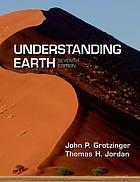 Understanding Earth
by
The earth system -- Plate tectonics : the unifying theory -- Earth materials : minerals and rocks -- Igneous rocks : solids from melts -- Sedimentation : rocks formed by surface processes -- Metamorphism : alteration of rocks by temperature and pressure -- Deformation : modification of rocks by folding and fracturing -- Clocks in rocks : timing the geologic record -- Early history of the terrestrial planets -- History of the continents -- Geobiology : life interacts with Earth -- Volcanoes -- Earthquakes -- Exploring earth's interior -- The climate system -- Weathering, erosion, and mass wasting : interactions between the climate and plate tectonic systems -- The hydrologic cycle and groundwater -- Stream transport : from mountains to oceans -- Winds and deserts -- Coastlines and ocean basins -- Glaciers : the work of ice -- Landscape development -- The human impact on Earth's environmen
Understanding Earth
by
The earth system -- Plate tectonics : the unifying theory -- Earth materials : minerals and rocks -- Igneous rocks : solids from melts -- Sedimentation : rocks formed by surface processes -- Metamorphism : alteration of rocks by temperature and pressure -- Deformation : modification of rocks by folding and fracturing -- Clocks in rocks : timing the geologic record -- Early history of the terrestrial planets -- History of the continents -- Geobiology : life interacts with Earth -- Volcanoes -- Earthquakes -- Exploring earth's interior -- The climate system -- Weathering, erosion, and mass wasting : interactions between the climate and plate tectonic systems -- The hydrologic cycle and groundwater -- Stream transport : from mountains to oceans -- Winds and deserts -- Coastlines and ocean basins -- Glaciers : the work of ice -- Landscape development -- The human impact on Earth's environmen
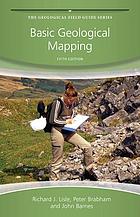 Basic Geological Mapping
by
Part of The Geological Field Guide Series, Basic Geological Mapping, 5th Edition is an essential basic guide to field techniques in mapping geology. Now completely revised and updated the book retains the concise clarity which has made it an indispensable instant reference in its previous editions. It provides the reader with all the necessary practical information and techniques that they will need while carrying out work in the field, covering a wide spectrum of different conditions, needs and types of countries. This edition covers new developments in technology including Google Earth and the use of GPS. This is an ideal field guide to geological mapping for 2nd/3rd year undergraduates of Geology, Hydrogeology and Geological Engineering.
Basic Geological Mapping
by
Part of The Geological Field Guide Series, Basic Geological Mapping, 5th Edition is an essential basic guide to field techniques in mapping geology. Now completely revised and updated the book retains the concise clarity which has made it an indispensable instant reference in its previous editions. It provides the reader with all the necessary practical information and techniques that they will need while carrying out work in the field, covering a wide spectrum of different conditions, needs and types of countries. This edition covers new developments in technology including Google Earth and the use of GPS. This is an ideal field guide to geological mapping for 2nd/3rd year undergraduates of Geology, Hydrogeology and Geological Engineering.
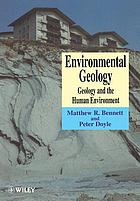 Environmental geology : geology and the human environment
by
1. Environmental Geology: Definition, Scope and Tools -- 2. The Geology of Resource Management -- 3. Economic Mineral Resources -- 4. Construction Resources: Geomaterials -- 5. Water Resources -- 6. Aesthetic and Scientific Geological Resources -- 7. Engineering Geology -- 8. Engineering Geology in Extreme Environments -- 9. Waste and Pollution Management -- 10. The Geology of Natural Hazards -- 11. Exogenic Hazards -- 12. Endogenic Hazards -- 13. Environmental Geology: an Urban Concept.
Environmental geology : geology and the human environment
by
1. Environmental Geology: Definition, Scope and Tools -- 2. The Geology of Resource Management -- 3. Economic Mineral Resources -- 4. Construction Resources: Geomaterials -- 5. Water Resources -- 6. Aesthetic and Scientific Geological Resources -- 7. Engineering Geology -- 8. Engineering Geology in Extreme Environments -- 9. Waste and Pollution Management -- 10. The Geology of Natural Hazards -- 11. Exogenic Hazards -- 12. Endogenic Hazards -- 13. Environmental Geology: an Urban Concept.
 Introduction to Python in earth science data analysis : from descriptive statistics to machine learning
by
Part I: Python for geologists : a kickoff. 1. Setting up your Python environment, easily ; 2. Python essentials for a geologist ; 3. Solving geology problems using Python : an introduction -- Part II: Describing geological data. 4. Graphical visualization of a geological data set ; 5. Descriptive statistics 1: univariate analysis ; 6. Descriptive statistics 2: bivariate analysis -- Part III: Integrals and differential equations in geology. 7. Numerical integration ; 8. Differential equations -- Part IV: Probability density functions and error analysis. 9. Probability density functions and their use in geology ; 10. Error analysis -- Part V: Robust statistics and machine learning. 11. Introduction to robust statistics ; 12. Machine learning -- Appendix A: Python packages and resources for geologists ; Appendix B: Introduction to object oriented programming ; Appendix C: The Matplotlib object oriented API ; Appendix D: Working with Pandas.
Introduction to Python in earth science data analysis : from descriptive statistics to machine learning
by
Part I: Python for geologists : a kickoff. 1. Setting up your Python environment, easily ; 2. Python essentials for a geologist ; 3. Solving geology problems using Python : an introduction -- Part II: Describing geological data. 4. Graphical visualization of a geological data set ; 5. Descriptive statistics 1: univariate analysis ; 6. Descriptive statistics 2: bivariate analysis -- Part III: Integrals and differential equations in geology. 7. Numerical integration ; 8. Differential equations -- Part IV: Probability density functions and error analysis. 9. Probability density functions and their use in geology ; 10. Error analysis -- Part V: Robust statistics and machine learning. 11. Introduction to robust statistics ; 12. Machine learning -- Appendix A: Python packages and resources for geologists ; Appendix B: Introduction to object oriented programming ; Appendix C: The Matplotlib object oriented API ; Appendix D: Working with Pandas.
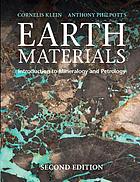 Earth materials : introduction to mineralogy and petrology
by
"This concise, accessible, market-leading textbook brings together the wide-ranging fundamentals students need to understand rocks and minerals, and shows them how they relate to the broader Earth, materials and environmental sciences. Designed specifically for one-semester courses, it is beautifully illustrated to explain the key concepts in mineralogy and petrology. This edition has been fully updated based on classroom experience, and new features include a completely new chapter providing an elementary introduction to thermodynamics, kinetics, radioactive decay and absolute dating; new mineral descriptions and many new stunning color photographs; and a new section on hydraulic fracturing and discussion of some of its most serious potential environmental consequences. The book uses stunning photos of mineral specimens and rock thin sections to help students build a core understanding. It also creates a highly effective learning experience through close integration of clear illustrations with engaging text, and helps students to easily visualize crystal structures through the CrystalViewer's 3D software, available online"-- Provided by publisher."This concise, accessible, market-leading textbook brings together the wide-ranging fundamentals students need to understand rocks and minerals, and shows them how they relate to the broader Earth, materials and environmental sciences. Designed specifically for one-semester courses, it is beautifully illustrated in full colour to explain the key concepts in mineralogy and petrology. This revision has been fully updated based on classroom experience. Including a completely new chapter providing an elementary introduction to thermodynamics, kinetics, radioactive decay and absolute dating, this new edition also features new mineral descriptions and many new stunning color photographs. A new section on hydraulic fracturing and discussion of some of its most serious potential environmental consequences has also been added. Stunning photos of mineral specimens and rock thin sections help students build a core understanding, whilst close intergration of clear illustrations with engaging text create a highly effective learning experience"-- Provided by publisher.
Earth materials : introduction to mineralogy and petrology
by
"This concise, accessible, market-leading textbook brings together the wide-ranging fundamentals students need to understand rocks and minerals, and shows them how they relate to the broader Earth, materials and environmental sciences. Designed specifically for one-semester courses, it is beautifully illustrated to explain the key concepts in mineralogy and petrology. This edition has been fully updated based on classroom experience, and new features include a completely new chapter providing an elementary introduction to thermodynamics, kinetics, radioactive decay and absolute dating; new mineral descriptions and many new stunning color photographs; and a new section on hydraulic fracturing and discussion of some of its most serious potential environmental consequences. The book uses stunning photos of mineral specimens and rock thin sections to help students build a core understanding. It also creates a highly effective learning experience through close integration of clear illustrations with engaging text, and helps students to easily visualize crystal structures through the CrystalViewer's 3D software, available online"-- Provided by publisher."This concise, accessible, market-leading textbook brings together the wide-ranging fundamentals students need to understand rocks and minerals, and shows them how they relate to the broader Earth, materials and environmental sciences. Designed specifically for one-semester courses, it is beautifully illustrated in full colour to explain the key concepts in mineralogy and petrology. This revision has been fully updated based on classroom experience. Including a completely new chapter providing an elementary introduction to thermodynamics, kinetics, radioactive decay and absolute dating, this new edition also features new mineral descriptions and many new stunning color photographs. A new section on hydraulic fracturing and discussion of some of its most serious potential environmental consequences has also been added. Stunning photos of mineral specimens and rock thin sections help students build a core understanding, whilst close intergration of clear illustrations with engaging text create a highly effective learning experience"-- Provided by publisher.
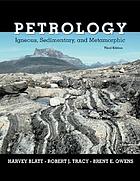 Petrology : igneous, sedimentary, and metamorphic.
by
"Now in a thoroughly updated new edition (the first since 1995), Petrology remains . . . [a] student-friendly undergraduate level text covering all three major rock groups. As always, the new edition organizes a vast body of literature from its wide-ranging subject, presenting what is essential to geology majors in a way that is accessible and at an appropriate level. The new edition welcomes Brent Owens as the new lead author for the chapters on igneous rocks, complementing Harvey Blatt's role for the sedimentary chapters, and Robert Tracy's for the metamorphic chapters." -- Publisher's description
Petrology : igneous, sedimentary, and metamorphic.
by
"Now in a thoroughly updated new edition (the first since 1995), Petrology remains . . . [a] student-friendly undergraduate level text covering all three major rock groups. As always, the new edition organizes a vast body of literature from its wide-ranging subject, presenting what is essential to geology majors in a way that is accessible and at an appropriate level. The new edition welcomes Brent Owens as the new lead author for the chapters on igneous rocks, complementing Harvey Blatt's role for the sedimentary chapters, and Robert Tracy's for the metamorphic chapters." -- Publisher's description
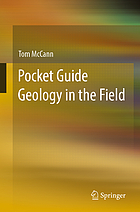 Pocket Guide Geology in the Field
by
This book is a field guide that describes and explains the commonest minerals and rocks as well as introducing the most important fossil groups. In addition, a variety of geological structures are described and illustrated in the numerous diagrams and photographs. The guide is your perfect companion for hikes or walks in the countryside, inviting you to discover the geology hidden behind the landscapes surrounding us, as well as helping you to recognise the various minerals, rocks and fossils, you might encounter. Geology is a science that only really comes to life when we are outside, for example, on walks or hikes along the coast or through national parks. With a little knowledge you will be able to experience the landscape in a completely different way. The rocks will "come alive", so to speak, and you will be able to read their history like a book - understanding the range and complexity of geological processes which have formed the Earth beneath our feet. Such processes - an interplay of magmatism, tectonics, metamorphosis and sedimentation, as well as climate and sea-level change - have shaped the Earth over millennia and continue to do so even at the present time. The book is aimed at nature lovers of all types, as well as students of geology - in fact, anyone who is interested in the world around us. It will provide the perfect companion for walks or hikes in the countryside. This book is a translation of the original German 1st edition Pocket Guide Geologie im Gelände by Tom McCann, published by Springer-Verlag GmbH Germany, part of Springer Nature in 2019. The initial translation was done with the help of artificial intelligence (machine translation by the service DeepL.com). A subsequent detailed revision by the author ensures that the book reads stylistically like a conventional translation. Springer Nature works continuously to further the development of tools for the production of books and on the related technologies to support the authors.
Pocket Guide Geology in the Field
by
This book is a field guide that describes and explains the commonest minerals and rocks as well as introducing the most important fossil groups. In addition, a variety of geological structures are described and illustrated in the numerous diagrams and photographs. The guide is your perfect companion for hikes or walks in the countryside, inviting you to discover the geology hidden behind the landscapes surrounding us, as well as helping you to recognise the various minerals, rocks and fossils, you might encounter. Geology is a science that only really comes to life when we are outside, for example, on walks or hikes along the coast or through national parks. With a little knowledge you will be able to experience the landscape in a completely different way. The rocks will "come alive", so to speak, and you will be able to read their history like a book - understanding the range and complexity of geological processes which have formed the Earth beneath our feet. Such processes - an interplay of magmatism, tectonics, metamorphosis and sedimentation, as well as climate and sea-level change - have shaped the Earth over millennia and continue to do so even at the present time. The book is aimed at nature lovers of all types, as well as students of geology - in fact, anyone who is interested in the world around us. It will provide the perfect companion for walks or hikes in the countryside. This book is a translation of the original German 1st edition Pocket Guide Geologie im Gelände by Tom McCann, published by Springer-Verlag GmbH Germany, part of Springer Nature in 2019. The initial translation was done with the help of artificial intelligence (machine translation by the service DeepL.com). A subsequent detailed revision by the author ensures that the book reads stylistically like a conventional translation. Springer Nature works continuously to further the development of tools for the production of books and on the related technologies to support the authors.
 Petrography Laboratory Manual: handspecimen and thin section petrography
by
Petrography is an important skill for many geologists. It is used as an aid in making geologic maps, in sample collection for detailed studies in disciplines like theoretical petrology and mineralogy, and in a variety of applied fields such as geological engineering, mineral exploration, and fuels exploration. As in previous editions of this outstanding lab manual, Raymond has carefully crafted descriptions, explanations, definitions, diagrams, and tables to prevent confusion, facilitate learning how to distinguish classes and characteristics of rock, and demonstrate the aspects and applications involved in the study of rocks.
Each of the five sections contains multiple exercises to develop and hone observational skills and reinforce understanding--including exercises covering optical petrography, new to this edition. The latest version of the text can be used for handspecimen work only or for both handspecimen and thin section study. An appendix with a mineral identification key of use in optical petrography has been added. Instructors who teach using a general collection of petrology specimens will appreciate that no specific rock samples are required to complete the exercises in this text.
Petrography Laboratory Manual: handspecimen and thin section petrography
by
Petrography is an important skill for many geologists. It is used as an aid in making geologic maps, in sample collection for detailed studies in disciplines like theoretical petrology and mineralogy, and in a variety of applied fields such as geological engineering, mineral exploration, and fuels exploration. As in previous editions of this outstanding lab manual, Raymond has carefully crafted descriptions, explanations, definitions, diagrams, and tables to prevent confusion, facilitate learning how to distinguish classes and characteristics of rock, and demonstrate the aspects and applications involved in the study of rocks.
Each of the five sections contains multiple exercises to develop and hone observational skills and reinforce understanding--including exercises covering optical petrography, new to this edition. The latest version of the text can be used for handspecimen work only or for both handspecimen and thin section study. An appendix with a mineral identification key of use in optical petrography has been added. Instructors who teach using a general collection of petrology specimens will appreciate that no specific rock samples are required to complete the exercises in this text.
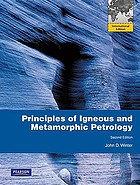 Principles of igneous and metamorphic petrology
by
I. Igneous petrology. -- Some fundamental concepts -- Classification and nomenclature of igneous rocks -- Textures of igneous rocks -- Igneous stuctures and field relationships -- An introduction to thermodynamics -- The Phase Rule and One-and Two-component systems -- Systems with more than two components -- Chemical petrology: Major and minor elements -- Chemical petrology II: Trace elements and isotopes -- Mantle melting and the generation of Basaltic Magma -- Magma diversity -- Layered mafic intrusions --Mid-ocean ridge volcanism -- Oceanic intraplate volcanism -- Continental flood basalts -- Subduction-related igneous activity, Part I: Island arcs -- Subduction-related igneous activity, Part II: Continental arcs -- Granitoid rocks -- Continental alkaline magmatism -- Anorthosites -- II. Metamorphic petrology. -- An introduction to metamorphism -- A classification of metamorphic rocks -- Structures and textures of metamorphic rocks -- Stable mineral assemblages in metamorphic rocks -- Metamorphic facies and metamorphosed mafic rocks -- Metamorphic reactions -- Thermodynamics of metamorphic reactions -- Metamorphism of Pelitic sediments -- Metamorphism of calcareous and ultramafic rocks -- Metamorphic fluids, mass transport, and metasomatism -- Appendix A: Estimating the density and viscosity of slilicate melts -- Appendix B: The CIPW Norm.
Principles of igneous and metamorphic petrology
by
I. Igneous petrology. -- Some fundamental concepts -- Classification and nomenclature of igneous rocks -- Textures of igneous rocks -- Igneous stuctures and field relationships -- An introduction to thermodynamics -- The Phase Rule and One-and Two-component systems -- Systems with more than two components -- Chemical petrology: Major and minor elements -- Chemical petrology II: Trace elements and isotopes -- Mantle melting and the generation of Basaltic Magma -- Magma diversity -- Layered mafic intrusions --Mid-ocean ridge volcanism -- Oceanic intraplate volcanism -- Continental flood basalts -- Subduction-related igneous activity, Part I: Island arcs -- Subduction-related igneous activity, Part II: Continental arcs -- Granitoid rocks -- Continental alkaline magmatism -- Anorthosites -- II. Metamorphic petrology. -- An introduction to metamorphism -- A classification of metamorphic rocks -- Structures and textures of metamorphic rocks -- Stable mineral assemblages in metamorphic rocks -- Metamorphic facies and metamorphosed mafic rocks -- Metamorphic reactions -- Thermodynamics of metamorphic reactions -- Metamorphism of Pelitic sediments -- Metamorphism of calcareous and ultramafic rocks -- Metamorphic fluids, mass transport, and metasomatism -- Appendix A: Estimating the density and viscosity of slilicate melts -- Appendix B: The CIPW Norm.
 Evoljucija osadočnych porod = Evolution of sedimentary rocks
by
Evoljucija osadočnych porod = Evolution of sedimentary rocks
by
 Gneiss Domes in Orogeny
by
Gneiss Domes in Orogeny
by
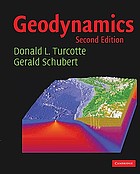 Geodynamics
by
First published in 1982, Don Turcotte and Jerry Schubert's Geodynamics became a classic textbook for several generations of students of geophysics and geology. In this second edition, the authors bring this text completely up-to-date. Important additions include a chapter on chemical geodynamics, an updated coverage of comparative planetology based on recent planetary missions, and a variety of other new topics. Geodynamics provides the fundamentals necessary for an understanding of the workings of the solid earth, describing the mechanics of earthquakes, volcanic eruptions, and mountain building in the context of the role of mantle convection and plate tectonics. Observations such as the earth's gravity field, surface heat flow, distribution of earthquakes, surface stresses and strains, and distribution of elements are discussed. This new edition will once again prove to be a classic textbook for intermediate to advanced undergraduates and graduate students in geology, geophysics, and earth science.
Geodynamics
by
First published in 1982, Don Turcotte and Jerry Schubert's Geodynamics became a classic textbook for several generations of students of geophysics and geology. In this second edition, the authors bring this text completely up-to-date. Important additions include a chapter on chemical geodynamics, an updated coverage of comparative planetology based on recent planetary missions, and a variety of other new topics. Geodynamics provides the fundamentals necessary for an understanding of the workings of the solid earth, describing the mechanics of earthquakes, volcanic eruptions, and mountain building in the context of the role of mantle convection and plate tectonics. Observations such as the earth's gravity field, surface heat flow, distribution of earthquakes, surface stresses and strains, and distribution of elements are discussed. This new edition will once again prove to be a classic textbook for intermediate to advanced undergraduates and graduate students in geology, geophysics, and earth science.
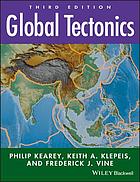 Global tectonics
by
"The third edition of this widely acclaimed textbook provides a comprehensive introduction to all prospects of global tectonics. Revisions to this new edition reflect the most significant recent advances in the field, providing a thorough, accessible, and up-to-date text. Combining a historical approach with process science, Global Tectonics provides a careful balance between geological and geophysical material in both continental and oceanic regimes." "New and expanded chapters in this third edition include Precambrian tectonics and the supercontinent cycle; mantle processes, including mantle plumes; the implications of plate tectonics for environmental change; large igneous provinces; rifted continental margins; ocean ridges; continental transforms; subduction zones; and numerous orogenic examples. Written in an engaging style, this important text is an essential reference for undergraduates and graduate students who have a basic introduction in the geosciences."--Jacket
Global tectonics
by
"The third edition of this widely acclaimed textbook provides a comprehensive introduction to all prospects of global tectonics. Revisions to this new edition reflect the most significant recent advances in the field, providing a thorough, accessible, and up-to-date text. Combining a historical approach with process science, Global Tectonics provides a careful balance between geological and geophysical material in both continental and oceanic regimes." "New and expanded chapters in this third edition include Precambrian tectonics and the supercontinent cycle; mantle processes, including mantle plumes; the implications of plate tectonics for environmental change; large igneous provinces; rifted continental margins; ocean ridges; continental transforms; subduction zones; and numerous orogenic examples. Written in an engaging style, this important text is an essential reference for undergraduates and graduate students who have a basic introduction in the geosciences."--Jacket
 Regional Geology and Tectonics: Principles of Geologic Analysis
by
Regional Geology and Tectonics: Principles of Geologic Analysis, 2nd edition is the first in a three-volume series covering Phanerozoic regional geology and tectonics. The new edition provides updates to the first edition's detailed overview of geologic processes, and includes new sections on plate tectonics, petroleum systems, and new methods of geological analysis. This book provides both professionals and students with the basic principles necessary to grasp the conceptual approaches to hydrocarbon exploration in a wide variety of geological settings globally.
Regional Geology and Tectonics: Principles of Geologic Analysis
by
Regional Geology and Tectonics: Principles of Geologic Analysis, 2nd edition is the first in a three-volume series covering Phanerozoic regional geology and tectonics. The new edition provides updates to the first edition's detailed overview of geologic processes, and includes new sections on plate tectonics, petroleum systems, and new methods of geological analysis. This book provides both professionals and students with the basic principles necessary to grasp the conceptual approaches to hydrocarbon exploration in a wide variety of geological settings globally.
 Geochemistry : an introduction
by
Introducing the essentials of modern geochemistry for students across the Earth and environmental sciences, this new edition emphasises the general principles of this central discipline. Focusing on inorganic chemistry, Francis Albarède's refreshing approach is brought to topics that range from measuring geological time to the understanding of climate change. The author leads the student through the necessary mathematics to understand the quantitative aspects of the subject in an easily understandable manner. The early chapters cover the principles and methods of physics and chemistry that underlie geochemistry, to build the students' understanding of concepts such as isotopes, fractionation, and mixing. These are then applied across many of the environments on Earth, including the solid Earth, rivers, and climate, and then extended to processes on other planets. Three new chapters have been added – on stable isotopes, biogeochemistry, and environmental geochemistry. End-of-chapter student exercises, with solutions available online, are also included.
Geochemistry : an introduction
by
Introducing the essentials of modern geochemistry for students across the Earth and environmental sciences, this new edition emphasises the general principles of this central discipline. Focusing on inorganic chemistry, Francis Albarède's refreshing approach is brought to topics that range from measuring geological time to the understanding of climate change. The author leads the student through the necessary mathematics to understand the quantitative aspects of the subject in an easily understandable manner. The early chapters cover the principles and methods of physics and chemistry that underlie geochemistry, to build the students' understanding of concepts such as isotopes, fractionation, and mixing. These are then applied across many of the environments on Earth, including the solid Earth, rivers, and climate, and then extended to processes on other planets. Three new chapters have been added – on stable isotopes, biogeochemistry, and environmental geochemistry. End-of-chapter student exercises, with solutions available online, are also included.
 Geochemistry
by
chapter 1. The Elements -- chapter 2. Isotope geology -- chapter 3. Thermodynamics -- chapter 4. Water chemistry -- chapter 5. Crystal chemistry -- chapter 6. Organic geochemistry -- chapter 7. Sedimentary rocks -- chapter 8. Igneous rocks -- chapter 9. Metamorphic rocks -- Answers to questions -- Author index -- Subject index.
Geochemistry
by
chapter 1. The Elements -- chapter 2. Isotope geology -- chapter 3. Thermodynamics -- chapter 4. Water chemistry -- chapter 5. Crystal chemistry -- chapter 6. Organic geochemistry -- chapter 7. Sedimentary rocks -- chapter 8. Igneous rocks -- chapter 9. Metamorphic rocks -- Answers to questions -- Author index -- Subject index.
 Applied Geochemistry: advances in mineral exploration techniques
by
Applied Geochemistry: Advances in Mineral Exploration Techniques is a book targeting all levels of exploration geologists, geology students and geoscientists working in the mining industry. This reference book covers mineral exploration techniques from multiple dimensions, including the application of statistics - both principal component analysis and factor analysis - to multifractal modeling. The book explains these approaches step-by-step and gives their limitations. In addition to techniques and applications in mineral exploration, Applied Geochemistry describes mineral deposits and the theories underpinning their formation through worldwide case studies.
Applied Geochemistry: advances in mineral exploration techniques
by
Applied Geochemistry: Advances in Mineral Exploration Techniques is a book targeting all levels of exploration geologists, geology students and geoscientists working in the mining industry. This reference book covers mineral exploration techniques from multiple dimensions, including the application of statistics - both principal component analysis and factor analysis - to multifractal modeling. The book explains these approaches step-by-step and gives their limitations. In addition to techniques and applications in mineral exploration, Applied Geochemistry describes mineral deposits and the theories underpinning their formation through worldwide case studies.
 Principles of sedimentology and stratigraphy
by
This concise treatment of the fundamental principles of sedimentology and stratigraphy highlights the important physical, chemical, biological and stratigraphic characteristics of sedimentary rocks. It emphasizes the ways in which the study of sedimentary rocks is used to interpret depositional environments, changes in ancient sea level, and other intriguing aspects of Earth.
Principles of sedimentology and stratigraphy
by
This concise treatment of the fundamental principles of sedimentology and stratigraphy highlights the important physical, chemical, biological and stratigraphic characteristics of sedimentary rocks. It emphasizes the ways in which the study of sedimentary rocks is used to interpret depositional environments, changes in ancient sea level, and other intriguing aspects of Earth.
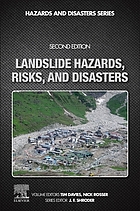 Landslide Hazards, Risks, and Disasters
by
Landslide Hazards, Risks and Disasters Second Edition makes a broad but detailed examination of major aspects of mass movements and their consequences, and provides knowledge to form the basis for more complete and accurate monitoring, prediction, preparedness and reduction of the impacts of landslides on society. The frequency and intensity of landslide hazards and disasters has consistently increased over the past century, and this trend will continue as society increasingly utilises steep landscapes. Landslides and related phenomena can be triggered by other hazard and disaster processes - such as earthquakes, tsunamis, volcanic eruptions and wildfires - and they can also cause other hazards and disasters, making them a complex multi-disciplinary challenge. This new edition of Landslide Hazards, Risks and Disasters is updated and includes new chapters, covering additional topics including rockfalls, landslide interactions and impacts and geomorphic perspectives. Knowledge, understanding and the ability to model landslide processes are becoming increasingly important challenges for society extends its occupation of increasingly hilly and mountainous terrain, making this book a key resource for educators, researchers and disaster managers in geophysics, geology and environmental science.
Landslide Hazards, Risks, and Disasters
by
Landslide Hazards, Risks and Disasters Second Edition makes a broad but detailed examination of major aspects of mass movements and their consequences, and provides knowledge to form the basis for more complete and accurate monitoring, prediction, preparedness and reduction of the impacts of landslides on society. The frequency and intensity of landslide hazards and disasters has consistently increased over the past century, and this trend will continue as society increasingly utilises steep landscapes. Landslides and related phenomena can be triggered by other hazard and disaster processes - such as earthquakes, tsunamis, volcanic eruptions and wildfires - and they can also cause other hazards and disasters, making them a complex multi-disciplinary challenge. This new edition of Landslide Hazards, Risks and Disasters is updated and includes new chapters, covering additional topics including rockfalls, landslide interactions and impacts and geomorphic perspectives. Knowledge, understanding and the ability to model landslide processes are becoming increasingly important challenges for society extends its occupation of increasingly hilly and mountainous terrain, making this book a key resource for educators, researchers and disaster managers in geophysics, geology and environmental science.
 Rockslides and rock avalanches of Central Asia : distribution, morphology, and internal structure
by
Rockslides and Rock Avalanches of Central Asia: Distribution, Impacts, and Hazard Assessment arms scientists with an inclusive and specialized reference for future studies of large-scale bedrock landslides in Central Asia, a phenomenon that poses a major threat to local communities, infrastructure and industrial facilities. The book covers the Dzungaria, Tien Shan, and Pamir mountain systems that are characterized by arid climates and scarce forestation, and is an ideal reference for scientists searching for data that accurately summarizes bedrock landslides through the analyses of a multitude of case studies that have applications in comparable, global scenarios. Through its relatively low precipitation and good preservation of minor geomorphic features, particularly those formed by past landslides, this region provides opportunities for detailed study of the internal structure of landslide bodies.
Rockslides and rock avalanches of Central Asia : distribution, morphology, and internal structure
by
Rockslides and Rock Avalanches of Central Asia: Distribution, Impacts, and Hazard Assessment arms scientists with an inclusive and specialized reference for future studies of large-scale bedrock landslides in Central Asia, a phenomenon that poses a major threat to local communities, infrastructure and industrial facilities. The book covers the Dzungaria, Tien Shan, and Pamir mountain systems that are characterized by arid climates and scarce forestation, and is an ideal reference for scientists searching for data that accurately summarizes bedrock landslides through the analyses of a multitude of case studies that have applications in comparable, global scenarios. Through its relatively low precipitation and good preservation of minor geomorphic features, particularly those formed by past landslides, this region provides opportunities for detailed study of the internal structure of landslide bodies.
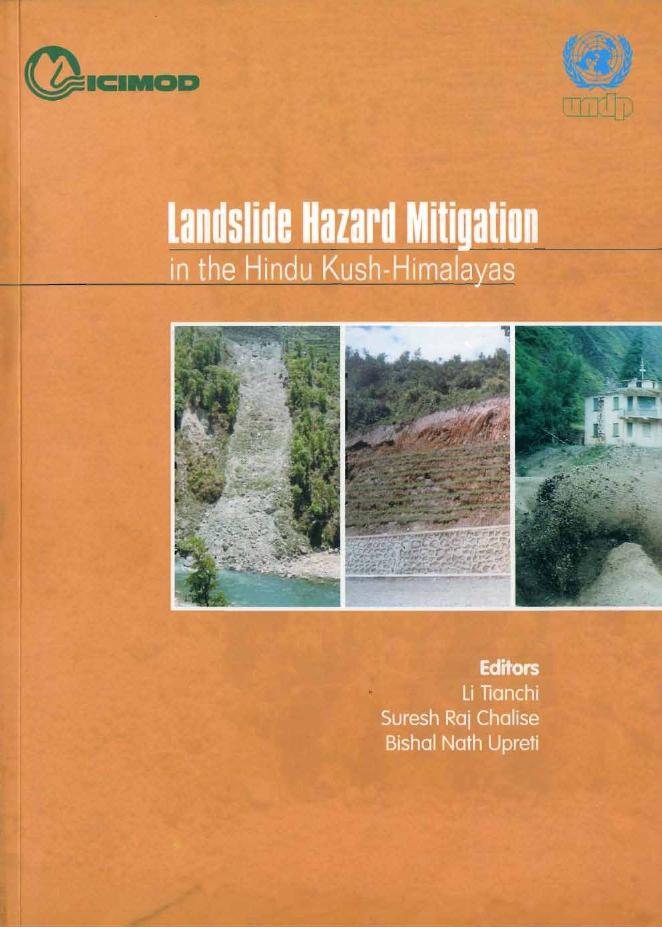 Landslide hazard mitigation in the Hindu Kush-Himalayas
by
Landslide hazard mitigation in the Hindu Kush-Himalayas
by
 Structural Geology
by
This market-leading textbook has been fully updated in response to extensive user feedback. It includes a new chapter on joints and veins, additional examples from around the world, stunning new field photos, and extended online resources with new animations and exercises. The book's practical emphasis, hugely popular in the first edition, features applications in the upper crust, including petroleum and groundwater geology, highlighting the importance of structural geology in exploration and exploitation of petroleum and water resources. Carefully designed full-colour illustrations work closely with the text to support student learning, and are supplemented with high-quality photos from around the world. Examples and parallels drawn from practical everyday situations engage students, and end-of chapter review questions help them to check their understanding. Updated e-learning modules are available online (www.cambridge.org/fossen2e) and further reinforce key topics using summaries, innovative animations to bring concepts to life, and additional examples and figures.
Structural Geology
by
This market-leading textbook has been fully updated in response to extensive user feedback. It includes a new chapter on joints and veins, additional examples from around the world, stunning new field photos, and extended online resources with new animations and exercises. The book's practical emphasis, hugely popular in the first edition, features applications in the upper crust, including petroleum and groundwater geology, highlighting the importance of structural geology in exploration and exploitation of petroleum and water resources. Carefully designed full-colour illustrations work closely with the text to support student learning, and are supplemented with high-quality photos from around the world. Examples and parallels drawn from practical everyday situations engage students, and end-of chapter review questions help them to check their understanding. Updated e-learning modules are available online (www.cambridge.org/fossen2e) and further reinforce key topics using summaries, innovative animations to bring concepts to life, and additional examples and figures.
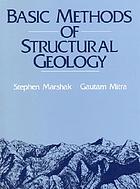 Basic Methods of Structural Geology
by
Complete coverage of all the basic topics of structural geology.
Basic Methods of Structural Geology
by
Complete coverage of all the basic topics of structural geology.
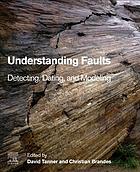 Understanding faults : detecting, dating, and modeling
by
List of contributors -- Preface -- 1. Introduction -- 2. Fault mechanics and earthquakes -- 3. Fault detection -- 4. Numerical modelling of faults -- 5. Faulting in the laboratory -- 6. The growth of faults -- 7. Direct dating of fault movement -- 8. Fault sealing -- Conclusions
Understanding faults : detecting, dating, and modeling
by
List of contributors -- Preface -- 1. Introduction -- 2. Fault mechanics and earthquakes -- 3. Fault detection -- 4. Numerical modelling of faults -- 5. Faulting in the laboratory -- 6. The growth of faults -- 7. Direct dating of fault movement -- 8. Fault sealing -- Conclusions
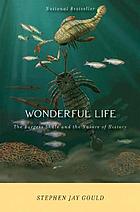 Wonderful life : the Burgess Shale and the nature of history
by
The Iconography of an expectation -- A background for the Burgess Shale -- Reconstruction of the Burgess Shale: Toward a New View of Life -- Walcott's Vision and the Nature of History -- Possible Worlds: The Power of "Just History."
Wonderful life : the Burgess Shale and the nature of history
by
The Iconography of an expectation -- A background for the Burgess Shale -- Reconstruction of the Burgess Shale: Toward a New View of Life -- Walcott's Vision and the Nature of History -- Possible Worlds: The Power of "Just History."
 A Key for Identification of Rock-Forming Minerals in Thin Section
by
Structured in the form of a dichotomous key, comparable to those widely used in botany, the mineral key provides an efficient and systematic approach to identifying rock-forming minerals in thin-section. This unique approach covers 150 plus of the most commonly encountered rock-forming minerals, plus a few rarer but noteworthy ones. Illustrated in full colour, with 330 plus high quality mineral photomicrographs from a worldwide collection of igneous, metamorphic, and sedimentary rocks, it also provides a comprehensive atlas of rock-forming minerals in thin-section. Commencing with a brief introduction to mineral systems, and the properties of minerals in plane-polarised and cross-polarised light, the mineral key also includes line drawings, tables of mineral properties and an interference colour chart, to further aid mineral identification. To minimise the chance of misidentification, and enable less experienced petrologists to use the key with confidence, the key has been arranged to prioritise those properties that are most easily recognised. Designed for simplicity and ease of use, it is primarily aimed at undergraduate and postgraduate students of mineralogy and petrology, but should also provide a valuable source of reference for all practising geologists dealing with rock thin sections and their interpretation.
A Key for Identification of Rock-Forming Minerals in Thin Section
by
Structured in the form of a dichotomous key, comparable to those widely used in botany, the mineral key provides an efficient and systematic approach to identifying rock-forming minerals in thin-section. This unique approach covers 150 plus of the most commonly encountered rock-forming minerals, plus a few rarer but noteworthy ones. Illustrated in full colour, with 330 plus high quality mineral photomicrographs from a worldwide collection of igneous, metamorphic, and sedimentary rocks, it also provides a comprehensive atlas of rock-forming minerals in thin-section. Commencing with a brief introduction to mineral systems, and the properties of minerals in plane-polarised and cross-polarised light, the mineral key also includes line drawings, tables of mineral properties and an interference colour chart, to further aid mineral identification. To minimise the chance of misidentification, and enable less experienced petrologists to use the key with confidence, the key has been arranged to prioritise those properties that are most easily recognised. Designed for simplicity and ease of use, it is primarily aimed at undergraduate and postgraduate students of mineralogy and petrology, but should also provide a valuable source of reference for all practising geologists dealing with rock thin sections and their interpretation.
 Earth Observation Using Python : a practical programming guide
by
Learn basic Python programming to create functional and effective visualizations from earth observation satellite data sets Thousands of satellite datasets are freely available online, but scientists need the right tools to efficiently analyze data and share results. Python has easy-to-learn syntax and thousands of libraries to perform common Earth science programming tasks. Earth Observation Using Python: A Practical Programming Guide presents an example-driven collection of basic methods, applications, and visualizations to process satellite data sets for Earth science research. Gain Python fluency using real data and case studies Read and write common scientific data formats, like netCDF, HDF, and GRIB2 Create 3-dimensional maps of dust, fire, vegetation indices and more Learn to adjust satellite imagery resolution, apply quality control, and handle big files Develop useful workflows and learn to share code using version control Acquire skills using online interactive code available for all examples in the book The American Geophysical Union promotes discovery in Earth and space science for the benefit of humanity. Its publications disseminate scientific knowledge and provide resources for researchers, students, and professionals. Find out more about this book from this Q&A with the Author
Earth Observation Using Python : a practical programming guide
by
Learn basic Python programming to create functional and effective visualizations from earth observation satellite data sets Thousands of satellite datasets are freely available online, but scientists need the right tools to efficiently analyze data and share results. Python has easy-to-learn syntax and thousands of libraries to perform common Earth science programming tasks. Earth Observation Using Python: A Practical Programming Guide presents an example-driven collection of basic methods, applications, and visualizations to process satellite data sets for Earth science research. Gain Python fluency using real data and case studies Read and write common scientific data formats, like netCDF, HDF, and GRIB2 Create 3-dimensional maps of dust, fire, vegetation indices and more Learn to adjust satellite imagery resolution, apply quality control, and handle big files Develop useful workflows and learn to share code using version control Acquire skills using online interactive code available for all examples in the book The American Geophysical Union promotes discovery in Earth and space science for the benefit of humanity. Its publications disseminate scientific knowledge and provide resources for researchers, students, and professionals. Find out more about this book from this Q&A with the Author
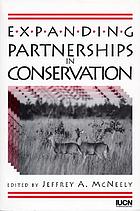 Expanding partnerships in conservation
by
Protected areas around the globe - national parks, wildlife reserves, biosphere reserves - will prosper only if they are supported by the public, the private sector, and the full range of government agencies. Yet such support is unlikely unless society appreciates the importance of protected areas to their own interests, and the protected areas are well-managed and contribute to the national welfare in a cost-effective way. A crucial foundation for success is full cooperation between individuals and institutions. Based on papers presented at the IVth World Congress on National Parks and Protected Areas, Expanding Partnerships in Conservation explores how new and stronger partnerships can be formed between managers of protected areas and other sectors of society. It describes a range of activities currently underway in many parts of the world that are intended to improve conservation efforts at the international, national, and local level. The book will be a valuable resource for anyone involved with establishing new protected areas, improving the management of existing areas, and building more positive relationships with the people who live in and around the protected areas.
Expanding partnerships in conservation
by
Protected areas around the globe - national parks, wildlife reserves, biosphere reserves - will prosper only if they are supported by the public, the private sector, and the full range of government agencies. Yet such support is unlikely unless society appreciates the importance of protected areas to their own interests, and the protected areas are well-managed and contribute to the national welfare in a cost-effective way. A crucial foundation for success is full cooperation between individuals and institutions. Based on papers presented at the IVth World Congress on National Parks and Protected Areas, Expanding Partnerships in Conservation explores how new and stronger partnerships can be formed between managers of protected areas and other sectors of society. It describes a range of activities currently underway in many parts of the world that are intended to improve conservation efforts at the international, national, and local level. The book will be a valuable resource for anyone involved with establishing new protected areas, improving the management of existing areas, and building more positive relationships with the people who live in and around the protected areas.
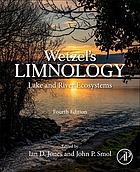 Wetzel's Limnology : lake and river ecosystems
by
Wetzel's Limnology: Lake and River Ecosystems, Fourth Edition, presents a fully updated revision of the classic textbook Limnology: Lake and River Ecosystems - last published in 2001. The coverage has been thoroughly updated with recent research and theoretical developments. Each chapter of this edited volume has been written by an expert, or team of experts, providing a comprehensive and global perspective, with the editors working closely with the authors to maintain continuity within and between the chapters. This is not only an essential textbook for undergraduate and graduate students in limnology but also a standard reference book for seasoned limnologists and other scientists.
Wetzel's Limnology : lake and river ecosystems
by
Wetzel's Limnology: Lake and River Ecosystems, Fourth Edition, presents a fully updated revision of the classic textbook Limnology: Lake and River Ecosystems - last published in 2001. The coverage has been thoroughly updated with recent research and theoretical developments. Each chapter of this edited volume has been written by an expert, or team of experts, providing a comprehensive and global perspective, with the editors working closely with the authors to maintain continuity within and between the chapters. This is not only an essential textbook for undergraduate and graduate students in limnology but also a standard reference book for seasoned limnologists and other scientists.
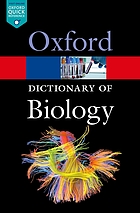 A Dictionary of Biology
by
Fully revised and updated for the seventh edition, this market-leading dictionary is the perfect guide for anyone studying biology, either at school or university.With more than 5,500 clear and concise entries, it provides comprehensive coverage of biology, biophysics, and biochemistry. Over 250 new entries include terms such as Broca's area, comparative genomic hybridization, mirror neuron, and Pandoravirus.Appendices include classifications of the animal and plant kingdoms, the geological time scale, major mass extinctions of species, model organisms and their genomes, Nobel prizewinners, and a new appendix on evolution.Entry-level web links to online resources can be accessed via a companion website.
A Dictionary of Biology
by
Fully revised and updated for the seventh edition, this market-leading dictionary is the perfect guide for anyone studying biology, either at school or university.With more than 5,500 clear and concise entries, it provides comprehensive coverage of biology, biophysics, and biochemistry. Over 250 new entries include terms such as Broca's area, comparative genomic hybridization, mirror neuron, and Pandoravirus.Appendices include classifications of the animal and plant kingdoms, the geological time scale, major mass extinctions of species, model organisms and their genomes, Nobel prizewinners, and a new appendix on evolution.Entry-level web links to online resources can be accessed via a companion website.
 Collins Web-linked dictionary of Biology
by
Web-linked DictionaryBiologyThis completely revised and updated edition is designed for advanced high school, undergraduate, and graduate students who have an interest in the life sciences, from recent advances in genetics to theories of evolution. Includes more than 6,500 entries and illustrations Covers all the major fields within biology, including anatomy, biochemistry, ecology, evolutionary theory, genetics, genomics, proteomics, molecular biology, physiology, and taxonomy Now includes numerous useful links to authoritative Web sites to further expand research in the field Contains biographical details of important biologists
Collins Web-linked dictionary of Biology
by
Web-linked DictionaryBiologyThis completely revised and updated edition is designed for advanced high school, undergraduate, and graduate students who have an interest in the life sciences, from recent advances in genetics to theories of evolution. Includes more than 6,500 entries and illustrations Covers all the major fields within biology, including anatomy, biochemistry, ecology, evolutionary theory, genetics, genomics, proteomics, molecular biology, physiology, and taxonomy Now includes numerous useful links to authoritative Web sites to further expand research in the field Contains biographical details of important biologists
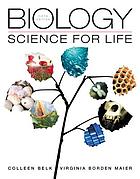 Biology: science for life
by
NOTE: You are purchasing a standalone product; MasteringBiology does not come packaged with this content. If you would like to purchase both the physical text and MasteringBiology search for: 0133889203 / 9780133889208 Biology: Science for Life Plus MasteringBiology with eText -- Access Card Package, 5/e Package consists of: 0133892301 / 9780133892307 Biology: Science for Life, 5/e 0133923 452/ 9780133923452 MasteringBiology with Pearson eText -- ValuePack Access Car d -- for Biology: Science for Life, 5/e For non-majors biology courses. Compelling and relatable stories engage students in learning biology Colleen Belk and Virginia Borden Maier have helped students understand biology for more than twenty years in the classroom and over ten years with their popular text, Biology: Science for Life. The thoroughly revised Fifth Edition engages students with new storylines that explore high-interest topics such as binge drinking, pseudoscience, and study drugs. The book and MasteringBiology resources also help students develop scientific skills using new Working With Data figure legend questions and addresses common misconceptions with Sounds Right, But Is It? discussions in each chapter. This edition also offers a wealth of new "Flipped Classroom" activities and other resources to help professors enliven their classes and to help students assess their understanding of biology outside of class. Also available with MasteringBiology ® MasteringBiology is an online homework, tutorial, and assessment product proven to improve results by helping students quickly master concepts. Students benefit from self-paced tutorials that feature personalized wrong-answer feedback and hints that emulate the office-hour experience and help keep students on track. With a wide range of interactive, engaging, and assignable activities, students are encouraged to actively learn and retain tough course concepts. New assignment options for the Fifth Edition include Interactive Storyline activities, Working with Data questions, Savvy Reader: Evaluating Media activities, and more.
Biology: science for life
by
NOTE: You are purchasing a standalone product; MasteringBiology does not come packaged with this content. If you would like to purchase both the physical text and MasteringBiology search for: 0133889203 / 9780133889208 Biology: Science for Life Plus MasteringBiology with eText -- Access Card Package, 5/e Package consists of: 0133892301 / 9780133892307 Biology: Science for Life, 5/e 0133923 452/ 9780133923452 MasteringBiology with Pearson eText -- ValuePack Access Car d -- for Biology: Science for Life, 5/e For non-majors biology courses. Compelling and relatable stories engage students in learning biology Colleen Belk and Virginia Borden Maier have helped students understand biology for more than twenty years in the classroom and over ten years with their popular text, Biology: Science for Life. The thoroughly revised Fifth Edition engages students with new storylines that explore high-interest topics such as binge drinking, pseudoscience, and study drugs. The book and MasteringBiology resources also help students develop scientific skills using new Working With Data figure legend questions and addresses common misconceptions with Sounds Right, But Is It? discussions in each chapter. This edition also offers a wealth of new "Flipped Classroom" activities and other resources to help professors enliven their classes and to help students assess their understanding of biology outside of class. Also available with MasteringBiology ® MasteringBiology is an online homework, tutorial, and assessment product proven to improve results by helping students quickly master concepts. Students benefit from self-paced tutorials that feature personalized wrong-answer feedback and hints that emulate the office-hour experience and help keep students on track. With a wide range of interactive, engaging, and assignable activities, students are encouraged to actively learn and retain tough course concepts. New assignment options for the Fifth Edition include Interactive Storyline activities, Working with Data questions, Savvy Reader: Evaluating Media activities, and more.
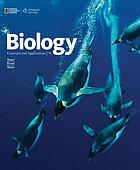 Biology : concepts and applications
by
In the new edition of BIOLOGY: CONCEPTS AND APPLICATIONS, authors Cecie Starr, Christine A. Evers, and Lisa Starr have partnered with the National Geographic Society to develop a text designed to engage and inspire. This trendsetting text introduces the key concepts of biology to non-biology majors using clear explanations and unparalleled visuals. While mastering core concepts, each chapter challenges students to question what they read and apply the concepts learned, providing students with the critical thinking skills and science knowledge they need in life. Renowned for its writing style the new edition is enhanced with exclusive content from the National Geographic Society, including over 200 new photos and illustrations. New People Matter sections in most chapters profile National Geographic Explorers and Grantees who are making significant contributions in their field, showing students how concepts in the chapter are being applied in biological research. Each chapter concludes with an �Application� section highlighting real-world uses of biology and helping students make connections to chapter content.
Biology : concepts and applications
by
In the new edition of BIOLOGY: CONCEPTS AND APPLICATIONS, authors Cecie Starr, Christine A. Evers, and Lisa Starr have partnered with the National Geographic Society to develop a text designed to engage and inspire. This trendsetting text introduces the key concepts of biology to non-biology majors using clear explanations and unparalleled visuals. While mastering core concepts, each chapter challenges students to question what they read and apply the concepts learned, providing students with the critical thinking skills and science knowledge they need in life. Renowned for its writing style the new edition is enhanced with exclusive content from the National Geographic Society, including over 200 new photos and illustrations. New People Matter sections in most chapters profile National Geographic Explorers and Grantees who are making significant contributions in their field, showing students how concepts in the chapter are being applied in biological research. Each chapter concludes with an �Application� section highlighting real-world uses of biology and helping students make connections to chapter content.
 Selected material from Biology: v.1 Chemistry, Cell Biology and Genetics
by
This Volume of BIOLOGY covers Chemistry, Cell Biology, and Genetics. . . The Brooker et. al text features an evolutionary focus with an emphasis on scientific inquiry. .
Selected material from Biology: v.1 Chemistry, Cell Biology and Genetics
by
This Volume of BIOLOGY covers Chemistry, Cell Biology, and Genetics. . . The Brooker et. al text features an evolutionary focus with an emphasis on scientific inquiry. .
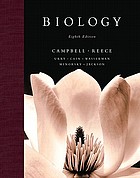 Biology
by
Each of the eight units reflect the progress in scientific understanding of biological processes at many levels, from molecules to ecosystems.
Biology
by
Each of the eight units reflect the progress in scientific understanding of biological processes at many levels, from molecules to ecosystems.
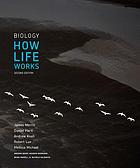 Biology: How Life Works
by
Think like a biologist with the best resources to understand modern biology by examining six crucial themes in Biology: How Life Works.
Biology: How Life Works
by
Think like a biologist with the best resources to understand modern biology by examining six crucial themes in Biology: How Life Works.
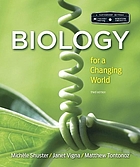 Scientific American Biology for a Changing World with Core Physiology
by
"In Biology for a Changing World, two experienced educators and a science journalist explore the core ideas of biology through chapters written and illustrated in the style of a Scientific American article. Chapters don't just feature compelling stories of real people--each chapter is a newsworthy story that serves as a context for covering the standard curriculum for the mon-majors biology course. Updated throughout, the new edition offers new stories, enhanced plant and diversity coverage, and an expanded media program" -- page 4 of cover.
Scientific American Biology for a Changing World with Core Physiology
by
"In Biology for a Changing World, two experienced educators and a science journalist explore the core ideas of biology through chapters written and illustrated in the style of a Scientific American article. Chapters don't just feature compelling stories of real people--each chapter is a newsworthy story that serves as a context for covering the standard curriculum for the mon-majors biology course. Updated throughout, the new edition offers new stories, enhanced plant and diversity coverage, and an expanded media program" -- page 4 of cover.
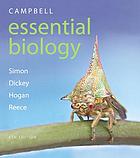 Campbell Essential Biology
by
Campbell Essential Biology makes biology interesting and understandable for non-majors biology students. This best-selling textbook, known for its scientific accuracy, clear explanations, and intuitive illustrations, has been revised to further emphasize the relevance of biology to everyday life, using memorable analogies, real-world examples, conversational language, engaging new Why Biology Matters photo essays, and more. New MasteringBiology activities engage students outside of the classroom and help students develop scientific literacy skills. Also available with MasteringBiology MasteringBiology is an online homework, tutorial, and assessment product that improves results by helping students quickly master concepts. Students benefit from self-paced tutorials that feature immediate wrong-answer feedback and hints that emulate the office-hour experience to help keep students on track. With a wide range of interactive, engaging, and assignable activities, many of them contributed by Essential Biology authors, students are encouraged to actively learn and retain tough course concepts. New MasteringBiology activities for this edition include "Essential Biology" videos that help students efficiently review key topics outside of class, "Evaluating Science in the Media" activities that help students to build science literacy skills, and "Scientific Thinking" coaching activities that guide students in understanding the scientific method.
Campbell Essential Biology
by
Campbell Essential Biology makes biology interesting and understandable for non-majors biology students. This best-selling textbook, known for its scientific accuracy, clear explanations, and intuitive illustrations, has been revised to further emphasize the relevance of biology to everyday life, using memorable analogies, real-world examples, conversational language, engaging new Why Biology Matters photo essays, and more. New MasteringBiology activities engage students outside of the classroom and help students develop scientific literacy skills. Also available with MasteringBiology MasteringBiology is an online homework, tutorial, and assessment product that improves results by helping students quickly master concepts. Students benefit from self-paced tutorials that feature immediate wrong-answer feedback and hints that emulate the office-hour experience to help keep students on track. With a wide range of interactive, engaging, and assignable activities, many of them contributed by Essential Biology authors, students are encouraged to actively learn and retain tough course concepts. New MasteringBiology activities for this edition include "Essential Biology" videos that help students efficiently review key topics outside of class, "Evaluating Science in the Media" activities that help students to build science literacy skills, and "Scientific Thinking" coaching activities that guide students in understanding the scientific method.
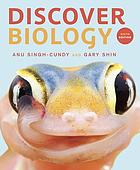 Discover Biology
by
Discover Biology is praised by adopters for its clear, accessible explanations that develop students' understanding of core concepts. The Sixth Edition maintains this strength but is more focused, 10% shorter, and offers a consistent chapter structure that gives students the conceptual foundation they need to fully understand and appreciate why biology matters in their own lives. This edition offers an accessible, flexible, and complete suite of teaching resources to support students and instructors at every stage of the learning process.
Discover Biology
by
Discover Biology is praised by adopters for its clear, accessible explanations that develop students' understanding of core concepts. The Sixth Edition maintains this strength but is more focused, 10% shorter, and offers a consistent chapter structure that gives students the conceptual foundation they need to fully understand and appreciate why biology matters in their own lives. This edition offers an accessible, flexible, and complete suite of teaching resources to support students and instructors at every stage of the learning process.
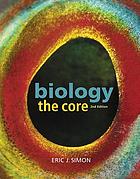 Biology: the core
by
For non-majors/mixed biology courses. Build a flexible non-majors biology course with science literacy at its core. Eric Simon''s Biology: The Core combines a succinct, beautifully illustrated 12-chapter textbook with engaging MasteringBiology assignment options and extensive instructor support materials. The Core delivers a uniquely flexible teaching and learning package that supports Active Learning or "Flipped Classroom" teaching techniques, and an emphasis on current issues that relate to basic biological concepts. The modular organization of the text makes it easy for instructors to teach concepts in their preferred order, and powerful online assignment options reinforce those concepts by clarifying the "big picture" and preparing your students with the biological literacy skills required to make informed decisions outside the classroom. The Second Edition text and MasteringBiology assignment options further revolutionize teaching in and out of the classroom with a greater emphasis on the nature of science and dozens of new opportunities for students to practice basic science literacy skills. The Core''s concise modules continue to focus students'' attention on the most important concepts, combining dynamic figures and illustrations with supporting narrative as the primary source of instruction to create a more engaging and accessible learning experience for students. The new edition has been revised to strengthen the ways the text, MasteringBiology, and the instructor support materials work together in meeting the needs of both instructors and students-before, during, and after class. Also available as a Pearson eText or packaged with Mastering Biology Pearson eText is a simple-to-use, mobile-optimized, personalized reading experience that can be adopted on its own as the main course material. It lets students highlight, take notes, and review key vocabulary all in one place, even when offline. Seamlessly integrated videos and other rich media engage students and give them access to the help they need, when they need it. Educators can easily share their own notes with students so they see the connection between their eText and what they learn in class - motivating them to keep reading, and keep learning. MasteringBiology is an online homework, tutorial, and assessment product proven to improve results by helping students quickly master concepts. Students benefit from opportunities to practice basic science literacy skills, using interactive resources that create engaging learning experiences. Effective activities in MasteringBiology help students further visualize and understand complex biological processes. Comprehensive instructor tools include MasteringBiology assignment options. Note: You are purchasing a standalone book; Pearson eText and Mastering Biology do not come packaged with this content. Students, ask your instructor for the correct package ISBN and Course ID. Instructors, contact your Pearson representative for more information. If your instructor has assigned Pearson eText as your main course material, search for: * 0135214068 / 9780135214060 Pearson eText Biology: The Core, 2/e -- Access Card OR * 013521405X / 9780135214053 Pearson eText Biology: The Core, 2/e -- Instant Access If you would like to purchase both the physical text and MasteringBiology, search for: 013416699X / 9780134166995 The Core Plus MasteringBiology with eText -- Access Card Package, 2/e Package consists of: 0134325281 / 9780134325286 MasteringBiology with Pearson eText -- ValuePack Access Card -- for Biology: The Core 0134152190 / 9780134152196 Biology: The Core
Biology: the core
by
For non-majors/mixed biology courses. Build a flexible non-majors biology course with science literacy at its core. Eric Simon''s Biology: The Core combines a succinct, beautifully illustrated 12-chapter textbook with engaging MasteringBiology assignment options and extensive instructor support materials. The Core delivers a uniquely flexible teaching and learning package that supports Active Learning or "Flipped Classroom" teaching techniques, and an emphasis on current issues that relate to basic biological concepts. The modular organization of the text makes it easy for instructors to teach concepts in their preferred order, and powerful online assignment options reinforce those concepts by clarifying the "big picture" and preparing your students with the biological literacy skills required to make informed decisions outside the classroom. The Second Edition text and MasteringBiology assignment options further revolutionize teaching in and out of the classroom with a greater emphasis on the nature of science and dozens of new opportunities for students to practice basic science literacy skills. The Core''s concise modules continue to focus students'' attention on the most important concepts, combining dynamic figures and illustrations with supporting narrative as the primary source of instruction to create a more engaging and accessible learning experience for students. The new edition has been revised to strengthen the ways the text, MasteringBiology, and the instructor support materials work together in meeting the needs of both instructors and students-before, during, and after class. Also available as a Pearson eText or packaged with Mastering Biology Pearson eText is a simple-to-use, mobile-optimized, personalized reading experience that can be adopted on its own as the main course material. It lets students highlight, take notes, and review key vocabulary all in one place, even when offline. Seamlessly integrated videos and other rich media engage students and give them access to the help they need, when they need it. Educators can easily share their own notes with students so they see the connection between their eText and what they learn in class - motivating them to keep reading, and keep learning. MasteringBiology is an online homework, tutorial, and assessment product proven to improve results by helping students quickly master concepts. Students benefit from opportunities to practice basic science literacy skills, using interactive resources that create engaging learning experiences. Effective activities in MasteringBiology help students further visualize and understand complex biological processes. Comprehensive instructor tools include MasteringBiology assignment options. Note: You are purchasing a standalone book; Pearson eText and Mastering Biology do not come packaged with this content. Students, ask your instructor for the correct package ISBN and Course ID. Instructors, contact your Pearson representative for more information. If your instructor has assigned Pearson eText as your main course material, search for: * 0135214068 / 9780135214060 Pearson eText Biology: The Core, 2/e -- Access Card OR * 013521405X / 9780135214053 Pearson eText Biology: The Core, 2/e -- Instant Access If you would like to purchase both the physical text and MasteringBiology, search for: 013416699X / 9780134166995 The Core Plus MasteringBiology with eText -- Access Card Package, 2/e Package consists of: 0134325281 / 9780134325286 MasteringBiology with Pearson eText -- ValuePack Access Card -- for Biology: The Core 0134152190 / 9780134152196 Biology: The Core
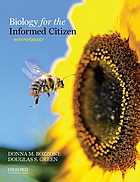 Biology for the Informed Citizen with Physiology
by
Biology for the Informed Citizen helps student connect the concepts of biology to the consequences of biology. This text aims to teach the concepts of biology, evolution, and the process of science so students can apply their knowledge in their everyday lives as informed consumers and users ofscientific information.This version of the text features Physiology coverage. For more information about Biology for the Informed Citizen without Physiology, please search for ISBN 9780195381986.
Biology for the Informed Citizen with Physiology
by
Biology for the Informed Citizen helps student connect the concepts of biology to the consequences of biology. This text aims to teach the concepts of biology, evolution, and the process of science so students can apply their knowledge in their everyday lives as informed consumers and users ofscientific information.This version of the text features Physiology coverage. For more information about Biology for the Informed Citizen without Physiology, please search for ISBN 9780195381986.
 The Diversity of Life
by
Traces the processes that produce new species, explains the importance of biodiversity, and recommends steps to help preserve diversity and improve the general quality of life.
The Diversity of Life
by
Traces the processes that produce new species, explains the importance of biodiversity, and recommends steps to help preserve diversity and improve the general quality of life.
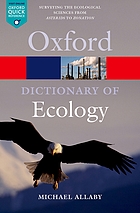 A Dictionary of Ecology
by
This is the fourth edition of the most comprehensive and authoritative dictionary of ecology available. Written in a clear, accessible style, it contains over 6,000 entries on all aspects of ecology and related environmental scientific disciplines such as biogeography, genetics, soil science,geomorphology, atmospheric science, and oceanography. Coverage is wide-ranging and includes plant and animal physiology, animal behaviour, pollution, conservation, habitat management, population, evolution, environmental pollution, climatology and meteorology. It also includes many line drawings anduseful appendices including estimations of population parameters, the geologic time-scale, SI units, and - new to this edition - a web linked appendix of relevant organizations including both governmental agencies and conservation societies.Fully revised, updated, and expanded, with over 100 new entries, this new edition also contains new web links for dozens of entries - which are accessed and kept up to date via the Dictionary of Ecology companion website. The dictionary will be invaluable to students of ecology, biology,conservation studies, environmental sciences, and professionals in related areas, as well as the general reader with an interest in the natural world.
A Dictionary of Ecology
by
This is the fourth edition of the most comprehensive and authoritative dictionary of ecology available. Written in a clear, accessible style, it contains over 6,000 entries on all aspects of ecology and related environmental scientific disciplines such as biogeography, genetics, soil science,geomorphology, atmospheric science, and oceanography. Coverage is wide-ranging and includes plant and animal physiology, animal behaviour, pollution, conservation, habitat management, population, evolution, environmental pollution, climatology and meteorology. It also includes many line drawings anduseful appendices including estimations of population parameters, the geologic time-scale, SI units, and - new to this edition - a web linked appendix of relevant organizations including both governmental agencies and conservation societies.Fully revised, updated, and expanded, with over 100 new entries, this new edition also contains new web links for dozens of entries - which are accessed and kept up to date via the Dictionary of Ecology companion website. The dictionary will be invaluable to students of ecology, biology,conservation studies, environmental sciences, and professionals in related areas, as well as the general reader with an interest in the natural world.
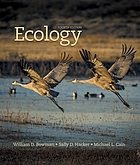 Ecology
by
The new fourth edition of Ecology maintains its focus on providing an easy-to-read and well-organized text for instructors and students to explore the basics of ecology. This edition includes an increased emphasis on enhancing student quantitative and problem-solving skills.
Ecology
by
The new fourth edition of Ecology maintains its focus on providing an easy-to-read and well-organized text for instructors and students to explore the basics of ecology. This edition includes an increased emphasis on enhancing student quantitative and problem-solving skills.
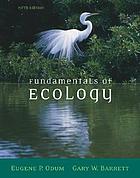 Fundamentals of Ecology
by
Master the study of ecology in the twenty-first century with FUNDAMENTALS OF ECOLOGY! Designed to educate a wide audience about ecological science, this biology text shows you the application of ecological principles in the real world and how to use what you learn to solve problems in fields such as resource management, conservation biology, ecological toxicology, ecosystem health, landscape ecology, and restoration ecology. Introductory statements, diagrams, models, photographs, and a book-specific website are just a few of the tools found throughout the text that will help you succeed.
Fundamentals of Ecology
by
Master the study of ecology in the twenty-first century with FUNDAMENTALS OF ECOLOGY! Designed to educate a wide audience about ecological science, this biology text shows you the application of ecological principles in the real world and how to use what you learn to solve problems in fields such as resource management, conservation biology, ecological toxicology, ecosystem health, landscape ecology, and restoration ecology. Introductory statements, diagrams, models, photographs, and a book-specific website are just a few of the tools found throughout the text that will help you succeed.
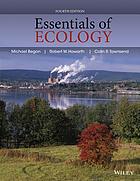 Essentials of Ecology
by
Essentials of Ecology, 4th Edition presents introductory ecology in an accessible, state-of-the-art format designed to cultivate the novice student's understanding of and fascination with the natural world. In a concise, engaging style, this text outlines the essential principles of ecology from the theoretical fundamentals to their practical applications. Full color artwork, simple pedagogical features and a wide range of carefully-chosen examples make this book an ideal introduction to ecology for students at all levels.
Essentials of Ecology
by
Essentials of Ecology, 4th Edition presents introductory ecology in an accessible, state-of-the-art format designed to cultivate the novice student's understanding of and fascination with the natural world. In a concise, engaging style, this text outlines the essential principles of ecology from the theoretical fundamentals to their practical applications. Full color artwork, simple pedagogical features and a wide range of carefully-chosen examples make this book an ideal introduction to ecology for students at all levels.
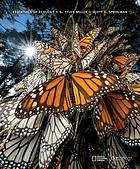 Essentials of Ecology
by
�Inspiring people to care about the planet.� In the new edition of ESSENTIALS OF ECOLOGY, authors Tyler Miller and Scott Spoolman have partnered with the National Geographic Society to develop a text designed to equip students with the inspiration and knowledge they need to make a difference solving today�s environmental issues. Exclusive content highlights important work of National Geographic Explorers, and features over 100 new photos, maps, and illustrations that bring course concepts to life. Using sustainability as the integrating theme, ESSENTIALS OF ECOLOGY 7e, covers scientific principles and concepts, ecosystems, evolution, biodiversity, population ecology, and more. In addition to the integration of new and engaging National Geographic content, every chapter has been thoroughly updated and 6 new Core Case Studies offer current examples of environmental problems and scenarios for potential solutions. The concept-centered approach used in the text transforms complex environmental topics and issues into key concepts that students will understand and remember. Overall, by framing the concepts with goals for more sustainable lifestyles and human communities, students see how promising the future can be and their important role in shaping it.
Essentials of Ecology
by
�Inspiring people to care about the planet.� In the new edition of ESSENTIALS OF ECOLOGY, authors Tyler Miller and Scott Spoolman have partnered with the National Geographic Society to develop a text designed to equip students with the inspiration and knowledge they need to make a difference solving today�s environmental issues. Exclusive content highlights important work of National Geographic Explorers, and features over 100 new photos, maps, and illustrations that bring course concepts to life. Using sustainability as the integrating theme, ESSENTIALS OF ECOLOGY 7e, covers scientific principles and concepts, ecosystems, evolution, biodiversity, population ecology, and more. In addition to the integration of new and engaging National Geographic content, every chapter has been thoroughly updated and 6 new Core Case Studies offer current examples of environmental problems and scenarios for potential solutions. The concept-centered approach used in the text transforms complex environmental topics and issues into key concepts that students will understand and remember. Overall, by framing the concepts with goals for more sustainable lifestyles and human communities, students see how promising the future can be and their important role in shaping it.
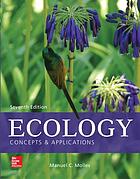 Ecology: Concepts and Applications
by
Ecology: Concepts and Applications by Molles places great emphasis on helping students grasp the main concepts of ecology while keeping the presentation more applied than theoretical. An evolutionary perspective forms the foundation of the entire discussion. The book begins with the natural history of the planet, considers portions of the whole in the middle chapters, and ends with another perspective of the entire planet in the concluding chapter. Its unique organization of focusing only on several key concepts in each chapter sets it apart from other ecology texts. Users who purchase Connect Plus receive access to the full online ebook version of the textbook.
Ecology: Concepts and Applications
by
Ecology: Concepts and Applications by Molles places great emphasis on helping students grasp the main concepts of ecology while keeping the presentation more applied than theoretical. An evolutionary perspective forms the foundation of the entire discussion. The book begins with the natural history of the planet, considers portions of the whole in the middle chapters, and ends with another perspective of the entire planet in the concluding chapter. Its unique organization of focusing only on several key concepts in each chapter sets it apart from other ecology texts. Users who purchase Connect Plus receive access to the full online ebook version of the textbook.
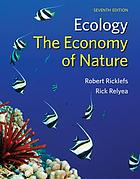 Ecology: the Economy of Nature
by
This landmark text helped to define introductory ecology courses for over four decades. With a dramatic transformation, Ecology: The Economy of Nature, Seventh Edition becomes the first textbook to fully embrace the challenges and opportunities of teaching ecology today. The text maintains its signature evolutionary perspective and emphasis on the quantitative aspects of the field, but it has been completely rewritten for today's undergraduates--with extensive new pedagogy, fresh examples (including more aquatic coverage), and fully integrated media resources. See what's in the LaunchPad
Ecology: the Economy of Nature
by
This landmark text helped to define introductory ecology courses for over four decades. With a dramatic transformation, Ecology: The Economy of Nature, Seventh Edition becomes the first textbook to fully embrace the challenges and opportunities of teaching ecology today. The text maintains its signature evolutionary perspective and emphasis on the quantitative aspects of the field, but it has been completely rewritten for today's undergraduates--with extensive new pedagogy, fresh examples (including more aquatic coverage), and fully integrated media resources. See what's in the LaunchPad
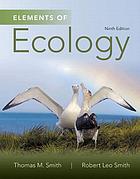 Elements of Ecology
by
&> Elements of Ecology, Ninth Edition continues to explain ecological processes clearly and concisely, with a greater emphasis on the relevance of ecology to everyday life and the human impact on ecosystems. This dramatically revised edition discusses issues of human ecology throughout the text and provides a greater variety of opportunities for students to learn, practice, and develop quantitative and analytical skills. Current research examples and other content updates are supported by more than 200 redesigned, full-color illustrations, graphs, and tables. Also available with MasteringBiology® This title is also available with MasteringBiology, an online homework, tutorial, and assessment program that improves results by helping students quickly master concepts both in and outside the classroom. The book and MasteringBiology work together to create a classroom experience that enables students to succeed in biology and ecology courses. Note: You are purchasing a standalone product; MasteringBiology does not come packaged with this content. If you would like to purchase both the physical text and MasteringBiology search for ISBN-10: 0321934172/ISBN-13: 9780321934178. That package includes ISBN-10: 0321934180/ISBN-13: 9780321934185 and ISBN-10: 0321976010/ISBN-13: 9780321976017. MasteringBiology should only be purchased when required by an instructor.
Elements of Ecology
by
&> Elements of Ecology, Ninth Edition continues to explain ecological processes clearly and concisely, with a greater emphasis on the relevance of ecology to everyday life and the human impact on ecosystems. This dramatically revised edition discusses issues of human ecology throughout the text and provides a greater variety of opportunities for students to learn, practice, and develop quantitative and analytical skills. Current research examples and other content updates are supported by more than 200 redesigned, full-color illustrations, graphs, and tables. Also available with MasteringBiology® This title is also available with MasteringBiology, an online homework, tutorial, and assessment program that improves results by helping students quickly master concepts both in and outside the classroom. The book and MasteringBiology work together to create a classroom experience that enables students to succeed in biology and ecology courses. Note: You are purchasing a standalone product; MasteringBiology does not come packaged with this content. If you would like to purchase both the physical text and MasteringBiology search for ISBN-10: 0321934172/ISBN-13: 9780321934178. That package includes ISBN-10: 0321934180/ISBN-13: 9780321934185 and ISBN-10: 0321976010/ISBN-13: 9780321976017. MasteringBiology should only be purchased when required by an instructor.
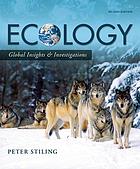 Ecology: Global Insights and Investigations
by
Peter Stiling, co-author of Biology by Brooker et al., has introduced a new ecology text to the market. The main goal of this latest ecology text is to show how ecology is important in understanding global change. The book’s main objective is to teach the basic principles of ecology and to relate these principles to many of the Earth’s ecological problems. Users who purchase Connect Plus receive access to the full online ebook version of the textbook.
Ecology: Global Insights and Investigations
by
Peter Stiling, co-author of Biology by Brooker et al., has introduced a new ecology text to the market. The main goal of this latest ecology text is to show how ecology is important in understanding global change. The book’s main objective is to teach the basic principles of ecology and to relate these principles to many of the Earth’s ecological problems. Users who purchase Connect Plus receive access to the full online ebook version of the textbook.
 Biophysical Models and Applications in Ecosystem Analysis
by
The past five decades have witnessed a rapid growth of computer models for simulating ecosystem functions and dynamics. This has been fueled by the availability of remote sensing data, computation capability, and cross-disciplinary knowledge. These models contain many submodules for simulating different processes and forcing mechanisms, albeit it has become challenging to truly understand the details due to their complexity. Most ecosystem models, fortunately, are rooted in a few core biophysical foundations, such as the widely recognized Farquhar model, Ball-Berry-Leuning and Medlyn family models, Penman-Monteith equation, Priestley-Taylor model, and Michaelis-Menten kinetics. After an introduction of biophysical essentials, four chapters present the core algorithms and their behaviors in modeling ecosystem production, respiration, evapotranspiration, and global warming potentials. Each chapter is composed of a brief introduction of the literature, in which model algorithms, their assumptions, and performances are described in detail. Spreadsheet (or Python codes) templates are included in each chapter for modeling exercises with different input parameters as online materials, which include datasets, parameter estimation, and real-world applications (e.g., calculations of global warming potentials). Users can also apply their own datasets. The materials included in this volume serve as effective tools for users to understand model behaviors and uses with specified conditions and in situ applications.
Biophysical Models and Applications in Ecosystem Analysis
by
The past five decades have witnessed a rapid growth of computer models for simulating ecosystem functions and dynamics. This has been fueled by the availability of remote sensing data, computation capability, and cross-disciplinary knowledge. These models contain many submodules for simulating different processes and forcing mechanisms, albeit it has become challenging to truly understand the details due to their complexity. Most ecosystem models, fortunately, are rooted in a few core biophysical foundations, such as the widely recognized Farquhar model, Ball-Berry-Leuning and Medlyn family models, Penman-Monteith equation, Priestley-Taylor model, and Michaelis-Menten kinetics. After an introduction of biophysical essentials, four chapters present the core algorithms and their behaviors in modeling ecosystem production, respiration, evapotranspiration, and global warming potentials. Each chapter is composed of a brief introduction of the literature, in which model algorithms, their assumptions, and performances are described in detail. Spreadsheet (or Python codes) templates are included in each chapter for modeling exercises with different input parameters as online materials, which include datasets, parameter estimation, and real-world applications (e.g., calculations of global warming potentials). Users can also apply their own datasets. The materials included in this volume serve as effective tools for users to understand model behaviors and uses with specified conditions and in situ applications.
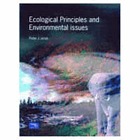 Ecological Principles and Environmental Issues
by
Concise, international introduction to core ecology through key environmental issues such as biodiversity, global warming and habitat restoration.
Ecological Principles and Environmental Issues
by
Concise, international introduction to core ecology through key environmental issues such as biodiversity, global warming and habitat restoration.
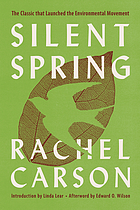 Silent Spring
by
Rarely does a single book alter the course of history, but Rachel Carson's Silent Spring did exactly that. The outrcry that followed its publication in 1962 forced the banning of DDT and spurred the revolutionary changes in the laws affecting our air, land, and water. Carson's passionate concern for the future of our planet reverberated powerfully throughout the world, and her eloquent book was instrumental in launching the environmental movement. I tis without question one of the landmark books of the twentieth century.
Silent Spring
by
Rarely does a single book alter the course of history, but Rachel Carson's Silent Spring did exactly that. The outrcry that followed its publication in 1962 forced the banning of DDT and spurred the revolutionary changes in the laws affecting our air, land, and water. Carson's passionate concern for the future of our planet reverberated powerfully throughout the world, and her eloquent book was instrumental in launching the environmental movement. I tis without question one of the landmark books of the twentieth century.
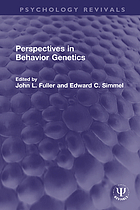 Perspectives in Behavior Genetics
by
Originally published in 1986, we were living in a world in which the number of publications in behaviour genetics had reached a point where it was difficult, even for those teaching the subject, to keep up with the literature. The editors of this title believe that there is a need for people who have planned and executed long-term research programs to summarize and comment on their results. This volume was intended to help meet that need. The authors were given free choice of subject and format. The result is a variety of topics that had been researched mainly over the previous decade. Chapter 1 is an exception and looked back at the work of others in behaviour genetics over a quarter-century and tried to detect trends in the types of research done in the field.
Perspectives in Behavior Genetics
by
Originally published in 1986, we were living in a world in which the number of publications in behaviour genetics had reached a point where it was difficult, even for those teaching the subject, to keep up with the literature. The editors of this title believe that there is a need for people who have planned and executed long-term research programs to summarize and comment on their results. This volume was intended to help meet that need. The authors were given free choice of subject and format. The result is a variety of topics that had been researched mainly over the previous decade. Chapter 1 is an exception and looked back at the work of others in behaviour genetics over a quarter-century and tried to detect trends in the types of research done in the field.
 Principles of Cell Biology
by
Each new print copy includes Navigate 2 Advantage Access that unlocks a comprehensive and interactive eBook, student practice activities and assessments, a full suite of instructor resources, and learning analytics reporting tools. Written for undergraduate cell biology courses, Principles of Cell Biology, Second Edition provides students with the formula for understanding the fundamental concepts of cell biology. This practical text focuses on the underlying principles that illustrate both how cells function as well as how we study them. It identifies 10 specific principles of cell biology and devotes a separate chapter to illustrate each. The result is a shift away from the traditional focus on technical details and towards a more integrative view of cellular activity that is flexible and can be tailored to suit students with a broad range of backgrounds. The Second Edition features a fully revised art program with new full-color images and illustrations that simplify key concepts and cell function. Concept Check questions at the end of each section along with new end-of-chapter questions assess student comprehension, ensuring retention of key cell biology principles. An informal, narrative writing style makes even the most complex concepts accessible to students new to the scientific field, making Principles of Cell Biology the clear choice for anyone studying the fascinating field of cell biology
Principles of Cell Biology
by
Each new print copy includes Navigate 2 Advantage Access that unlocks a comprehensive and interactive eBook, student practice activities and assessments, a full suite of instructor resources, and learning analytics reporting tools. Written for undergraduate cell biology courses, Principles of Cell Biology, Second Edition provides students with the formula for understanding the fundamental concepts of cell biology. This practical text focuses on the underlying principles that illustrate both how cells function as well as how we study them. It identifies 10 specific principles of cell biology and devotes a separate chapter to illustrate each. The result is a shift away from the traditional focus on technical details and towards a more integrative view of cellular activity that is flexible and can be tailored to suit students with a broad range of backgrounds. The Second Edition features a fully revised art program with new full-color images and illustrations that simplify key concepts and cell function. Concept Check questions at the end of each section along with new end-of-chapter questions assess student comprehension, ensuring retention of key cell biology principles. An informal, narrative writing style makes even the most complex concepts accessible to students new to the scientific field, making Principles of Cell Biology the clear choice for anyone studying the fascinating field of cell biology
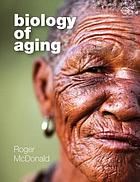 Biology of Aging
by
Biology of Aging presents the biological principles that have led to a new understanding of the causes of aging and describes how these basic principles help one to understand the human experience of biological aging, longevity, and age-related disease. Intended for undergraduate biology students, it describes how the rate of biological aging is measured; explores the mechanisms underlying cellular aging; discusses the genetic pathways that affect longevity in various organisms; outlines the normal age-related changes and the functional decline that occurs in physiological systems over the lifespan; and considers the implications of modulating the rate of aging and longevity. The book also includes end-of-chapter discussion questions to help students assess their knowledge of the material.
Biology of Aging
by
Biology of Aging presents the biological principles that have led to a new understanding of the causes of aging and describes how these basic principles help one to understand the human experience of biological aging, longevity, and age-related disease. Intended for undergraduate biology students, it describes how the rate of biological aging is measured; explores the mechanisms underlying cellular aging; discusses the genetic pathways that affect longevity in various organisms; outlines the normal age-related changes and the functional decline that occurs in physiological systems over the lifespan; and considers the implications of modulating the rate of aging and longevity. The book also includes end-of-chapter discussion questions to help students assess their knowledge of the material.
 Глобальное распределение радиоактивного стронция по земной поверхности.
by
Глобальное распределение радиоактивного стронция по земной поверхности.
by
 Mountain ecosystems, stability and instability : proceedings of a workshop : Berne-Riederalp, Switzerland, 14-19 September 1982
by
Mountain ecosystems, stability and instability : proceedings of a workshop : Berne-Riederalp, Switzerland, 14-19 September 1982
by
 Clinician's Thesaurus : the guide to conducting interviews and writing psychological reports
by
This book has been replaced by Clinician's Thesaurus, Ninth Edition, ISBN 978-1-4625-5807-0.
Clinician's Thesaurus : the guide to conducting interviews and writing psychological reports
by
This book has been replaced by Clinician's Thesaurus, Ninth Edition, ISBN 978-1-4625-5807-0.
 Eye Movement Desensitization and Reprocessing (EMDR) Therapy: basic principles, protocols, and procedures
by
The authoritative presentation of Eye Movement Desensitization and Reprocessing (EMDR) therapy, this groundbreaking book--now revised and expanded--has been translated into 10 languages. Originally developed for treatment of posttraumatic stress disorder (PTSD), this evidence-based approach is now also used to treat adults and children with complex trauma, anxiety disorders, depression, addictive behavior problems, and other clinical problems. EMDR originator Francine Shapiro reviews the therapy's theoretical and empirical underpinnings, details the eight phases of treatment, and provides training materials and resources. Vivid vignettes, transcripts, and reproducible forms are included. Purchasers get access to a webpage where they can download and print the reproducible materials in a convenient 8 1/2" x 11" size. New to This Edition Over 15 years of important advances in therapy and research, including findings from clinical and neurophysiological studies. New and revised protocols and procedures. Discusses additional applications, including the treatment of complex trauma, addictions, pain, depression, and moral injury, as well as post-disaster response. Appendices with session transcripts, clinical aids, and tools for assessing treatment fidelity and outcomes. EMDR therapy is recognized as a best practice for the treatment of PTSD by the U.S. Departments of Veterans Affairs and Defense, the International Society for Traumatic Stress Studies, the World Health Organization, the U.K. National Institute for Health and Care Excellence (NICE), the Australian National Health and Medical Research Council, the Association of the Scientific Medical Societies in Germany, and other health care associations/institutes around the world.
Eye Movement Desensitization and Reprocessing (EMDR) Therapy: basic principles, protocols, and procedures
by
The authoritative presentation of Eye Movement Desensitization and Reprocessing (EMDR) therapy, this groundbreaking book--now revised and expanded--has been translated into 10 languages. Originally developed for treatment of posttraumatic stress disorder (PTSD), this evidence-based approach is now also used to treat adults and children with complex trauma, anxiety disorders, depression, addictive behavior problems, and other clinical problems. EMDR originator Francine Shapiro reviews the therapy's theoretical and empirical underpinnings, details the eight phases of treatment, and provides training materials and resources. Vivid vignettes, transcripts, and reproducible forms are included. Purchasers get access to a webpage where they can download and print the reproducible materials in a convenient 8 1/2" x 11" size. New to This Edition Over 15 years of important advances in therapy and research, including findings from clinical and neurophysiological studies. New and revised protocols and procedures. Discusses additional applications, including the treatment of complex trauma, addictions, pain, depression, and moral injury, as well as post-disaster response. Appendices with session transcripts, clinical aids, and tools for assessing treatment fidelity and outcomes. EMDR therapy is recognized as a best practice for the treatment of PTSD by the U.S. Departments of Veterans Affairs and Defense, the International Society for Traumatic Stress Studies, the World Health Organization, the U.K. National Institute for Health and Care Excellence (NICE), the Australian National Health and Medical Research Council, the Association of the Scientific Medical Societies in Germany, and other health care associations/institutes around the world.
 The CBT Art Activity Book : 100 illustrated handouts for creative therapeutic work
by
Explore complex emotions and enhance self-awareness with these 100 ready-to-use creative activities. The intricate, attractive designs are illustrated in the popular zentangle style and are suitable for adults and young people, in individual or group work. The worksheets use cognitive behavioural therapy (CBT) and art as therapy to address outcomes including improved self-esteem, emotional wellbeing, anger management, coping with change and loss, problem solving and future planning. The colouring pages are designed for relaxing stress management and feature a complete illustrated alphabet and series of striking mandala designs.
The CBT Art Activity Book : 100 illustrated handouts for creative therapeutic work
by
Explore complex emotions and enhance self-awareness with these 100 ready-to-use creative activities. The intricate, attractive designs are illustrated in the popular zentangle style and are suitable for adults and young people, in individual or group work. The worksheets use cognitive behavioural therapy (CBT) and art as therapy to address outcomes including improved self-esteem, emotional wellbeing, anger management, coping with change and loss, problem solving and future planning. The colouring pages are designed for relaxing stress management and feature a complete illustrated alphabet and series of striking mandala designs.
 Engineering Technology
by
This lucidly-written book, with its diagrammatic representation and practical examples, presents a comprehensive treatment of the fundamentals of engineering hydrology in the areas of elements of hydrological cycle, abstraction losses, streamflow measurement, runoff, hydrology statistics, flood frequency analysis and groundwater flow. Throughout the book, the text emphasises problem-solving in which students are encouraged to apply their conceptual understanding in order to solve practical problems. This book is primarily intended for the undergraduate students of civil engineering and agricultural engineering.
Engineering Technology
by
This lucidly-written book, with its diagrammatic representation and practical examples, presents a comprehensive treatment of the fundamentals of engineering hydrology in the areas of elements of hydrological cycle, abstraction losses, streamflow measurement, runoff, hydrology statistics, flood frequency analysis and groundwater flow. Throughout the book, the text emphasises problem-solving in which students are encouraged to apply their conceptual understanding in order to solve practical problems. This book is primarily intended for the undergraduate students of civil engineering and agricultural engineering.
 Environmental Compliance Handbook 4 volumes
by
The handbook identifies many changes in regulations and recommends ways to apply and implement them. Containing the latest environmental information, the first volume addresses environmental compliance with Air and provides a historical perspective to help follow the logical growth and increased complexity of Air regulations through time.
Environmental Compliance Handbook 4 volumes
by
The handbook identifies many changes in regulations and recommends ways to apply and implement them. Containing the latest environmental information, the first volume addresses environmental compliance with Air and provides a historical perspective to help follow the logical growth and increased complexity of Air regulations through time.
 Water and Wastewater Engineering: design principles and practice
by
Publisher's Note: Products purchased from Third Party sellers are not guaranteed by the publisher for quality, authenticity, or access to any online entitlements included with the product. An In-Depth Guide to Water and Wastewater Engineering This authoritative volume offers comprehensive coverage of the design and construction of municipal water and wastewater facilities. The book addresses water treatment in detail, following the flow of water through the unit processes and coagulation, flocculation, softening, sedimentation, filtration, disinfection, and residuals management. Each stage of wastewater treatment--preliminary, secondary, and tertiary--is examined along with residuals management. Water and Wastewater Engineering contains more than 100 example problems, 500 end-of-chapter problems, and 300 illustrations. Safety issues and operation and maintenance procedures are also discussed in this definitive resource. Coverage includes: Intake structures and wells Chemical handling and storage Coagulation and flocculation Lime-soda and ion exchange softening Reverse osmosis and nanofiltration Sedimentation Granular and membrane filtration Disinfection and fluoridation Removal of specific constituents Drinking water plant residuals management, process selection, and integration Storage and distribution systems Wastewater collection and treatment design considerations Sanitary sewer design Headworks and preliminary treatment Primary treatment Wastewater microbiology Secondary treatment by suspended and attached growth biological processes Secondary settling, disinfection, and postaeration Tertiary treatment Wastewater plant residuals management Clean water plant process selection and integration
Water and Wastewater Engineering: design principles and practice
by
Publisher's Note: Products purchased from Third Party sellers are not guaranteed by the publisher for quality, authenticity, or access to any online entitlements included with the product. An In-Depth Guide to Water and Wastewater Engineering This authoritative volume offers comprehensive coverage of the design and construction of municipal water and wastewater facilities. The book addresses water treatment in detail, following the flow of water through the unit processes and coagulation, flocculation, softening, sedimentation, filtration, disinfection, and residuals management. Each stage of wastewater treatment--preliminary, secondary, and tertiary--is examined along with residuals management. Water and Wastewater Engineering contains more than 100 example problems, 500 end-of-chapter problems, and 300 illustrations. Safety issues and operation and maintenance procedures are also discussed in this definitive resource. Coverage includes: Intake structures and wells Chemical handling and storage Coagulation and flocculation Lime-soda and ion exchange softening Reverse osmosis and nanofiltration Sedimentation Granular and membrane filtration Disinfection and fluoridation Removal of specific constituents Drinking water plant residuals management, process selection, and integration Storage and distribution systems Wastewater collection and treatment design considerations Sanitary sewer design Headworks and preliminary treatment Primary treatment Wastewater microbiology Secondary treatment by suspended and attached growth biological processes Secondary settling, disinfection, and postaeration Tertiary treatment Wastewater plant residuals management Clean water plant process selection and integration
 Fundamentals of Air Pollution
by
Fundamentals of Air Pollution, Sixth Edition offers an extensive study of the science of air pollution. With a highly interdisciplinary approach, the book's author examines air pollution through the lenses of chemistry, physics, meteorology, engineering, toxicology, regulation, and more. Students, faculty, and researchers alike will find a world of information in this comprehensive text that is strategically organized into six parts: Foundations of Air Pollution, The Risks of Air Pollution, Tropospheric Pollution, Biogeochemistry of Air Pollutants, Addressing Air Pollution, and The Future for Air Pollution Science and Engineering. Readers will find helpful features throughout, including case studies, topical sidebars, worked examples, calculations, and reference data. This valuable resource offers an up-to-date and comprehensive analysis of air pollution with its wealth of benefits to both students and researchers.
Fundamentals of Air Pollution
by
Fundamentals of Air Pollution, Sixth Edition offers an extensive study of the science of air pollution. With a highly interdisciplinary approach, the book's author examines air pollution through the lenses of chemistry, physics, meteorology, engineering, toxicology, regulation, and more. Students, faculty, and researchers alike will find a world of information in this comprehensive text that is strategically organized into six parts: Foundations of Air Pollution, The Risks of Air Pollution, Tropospheric Pollution, Biogeochemistry of Air Pollutants, Addressing Air Pollution, and The Future for Air Pollution Science and Engineering. Readers will find helpful features throughout, including case studies, topical sidebars, worked examples, calculations, and reference data. This valuable resource offers an up-to-date and comprehensive analysis of air pollution with its wealth of benefits to both students and researchers.